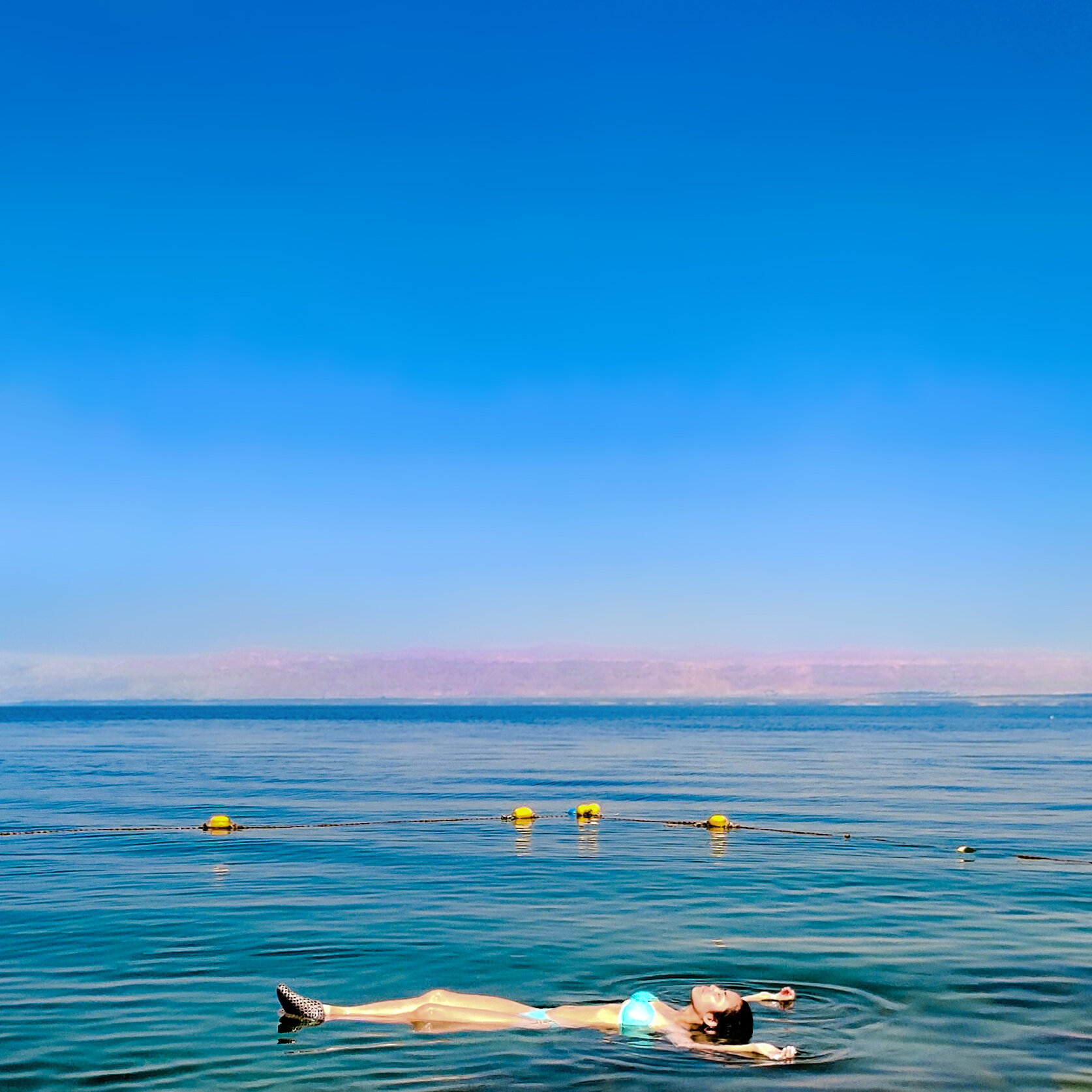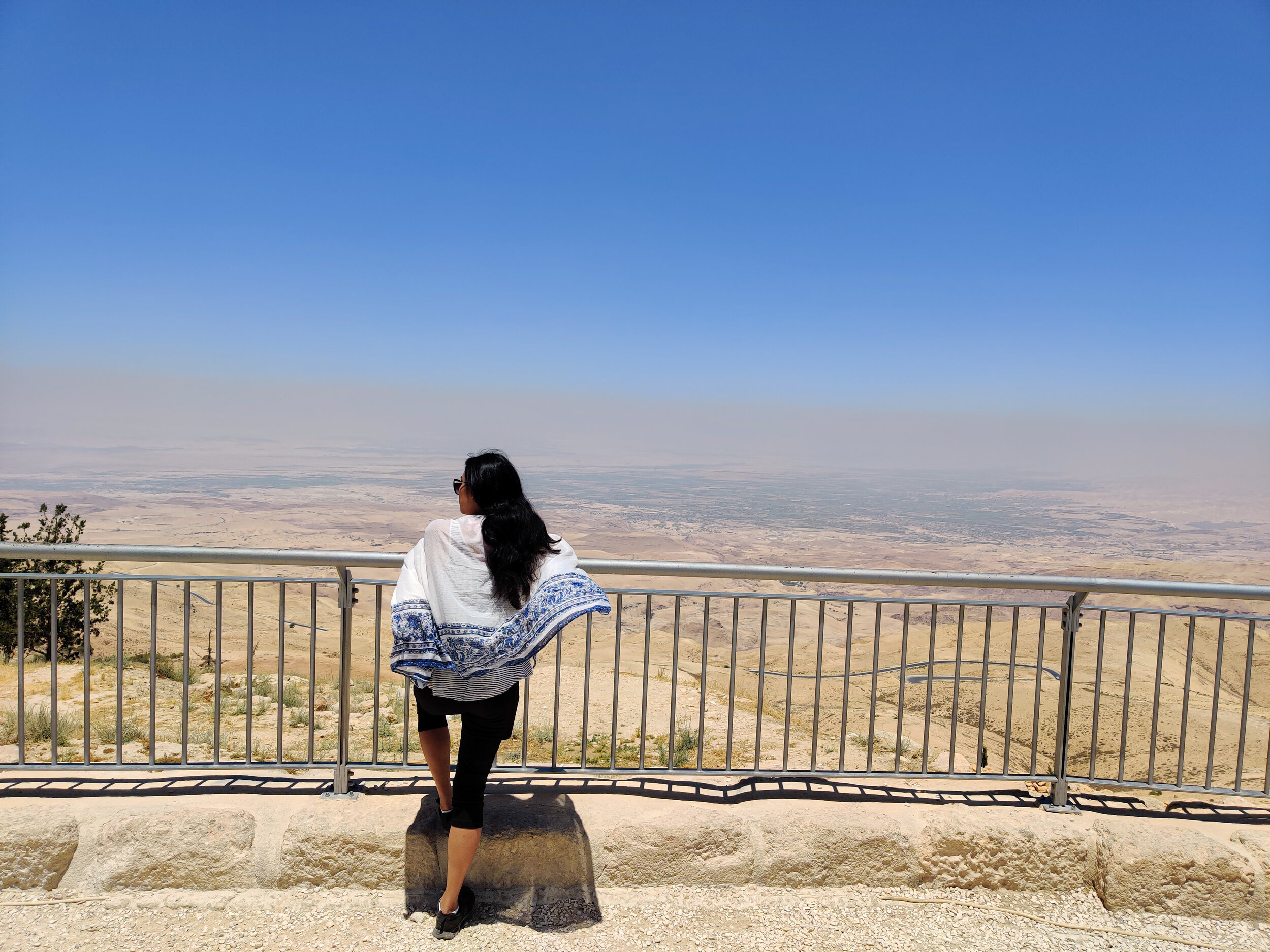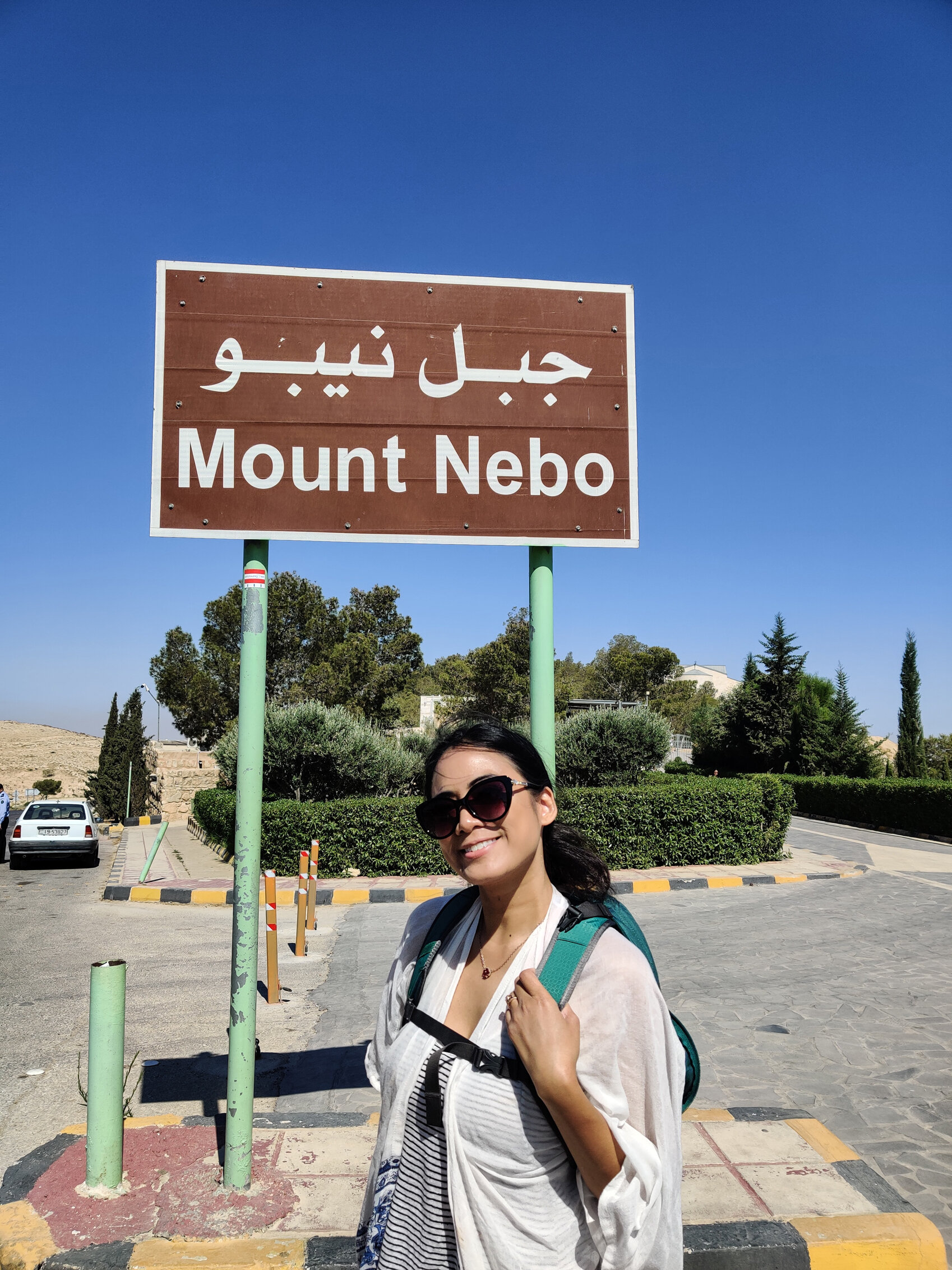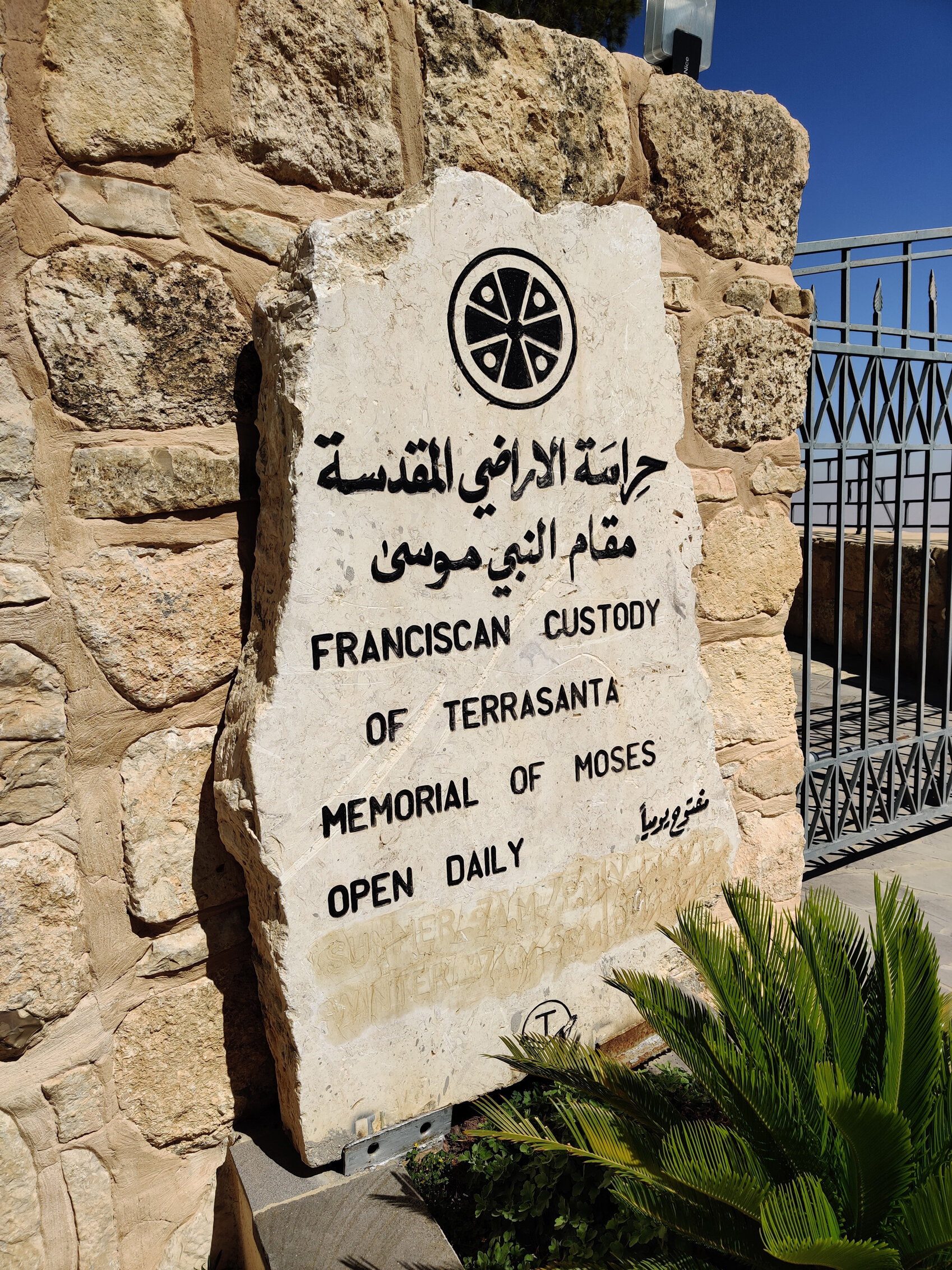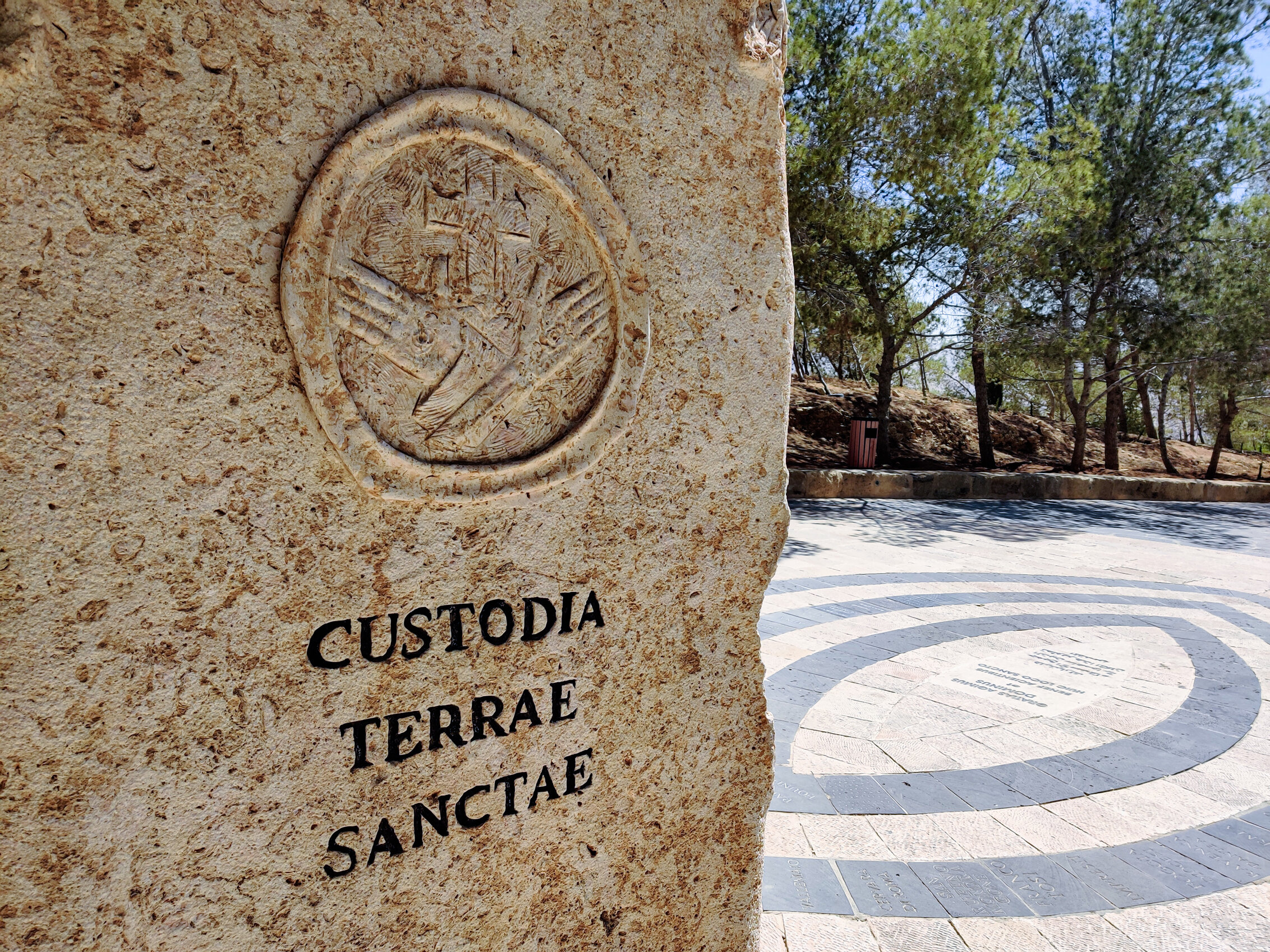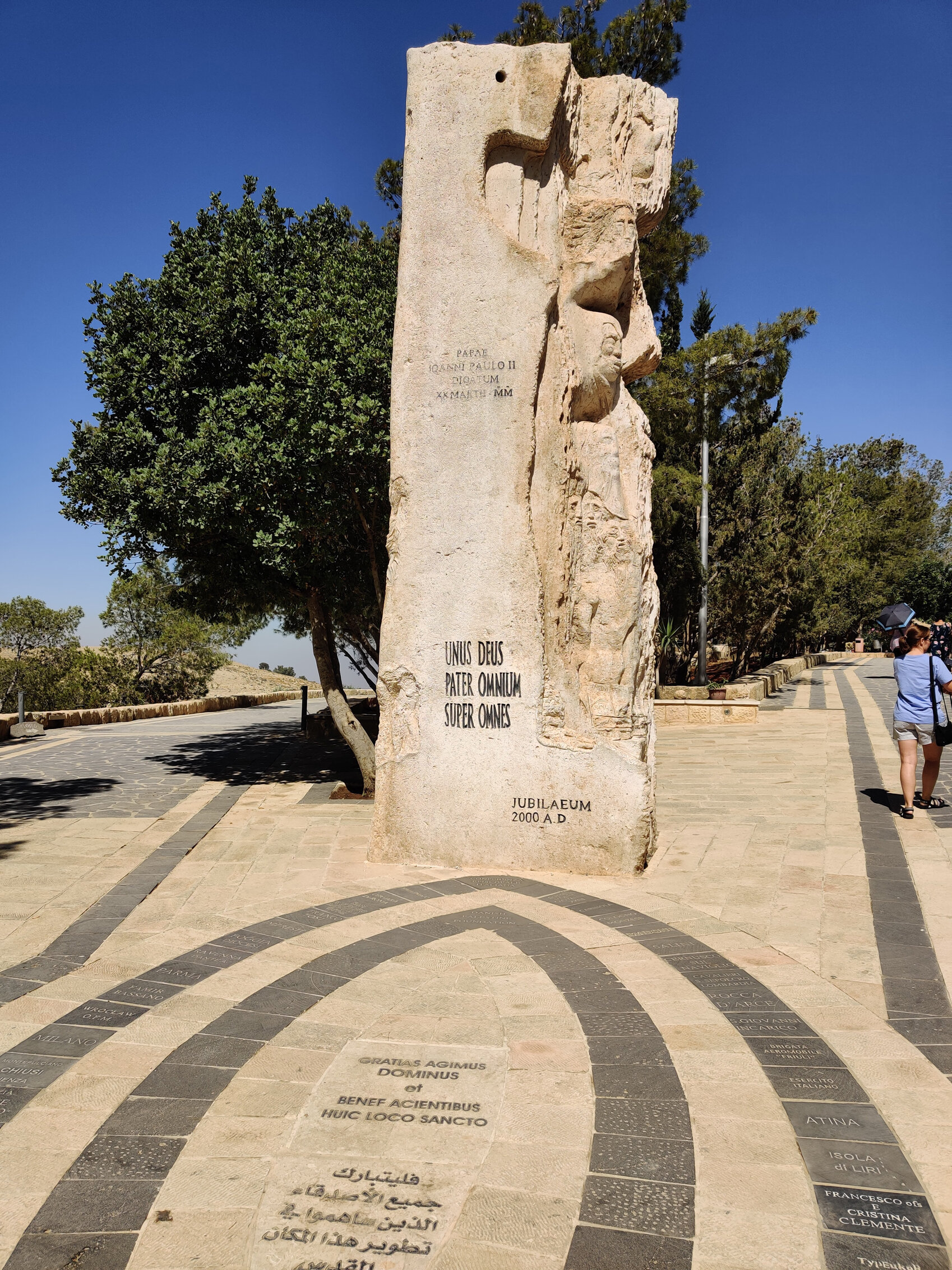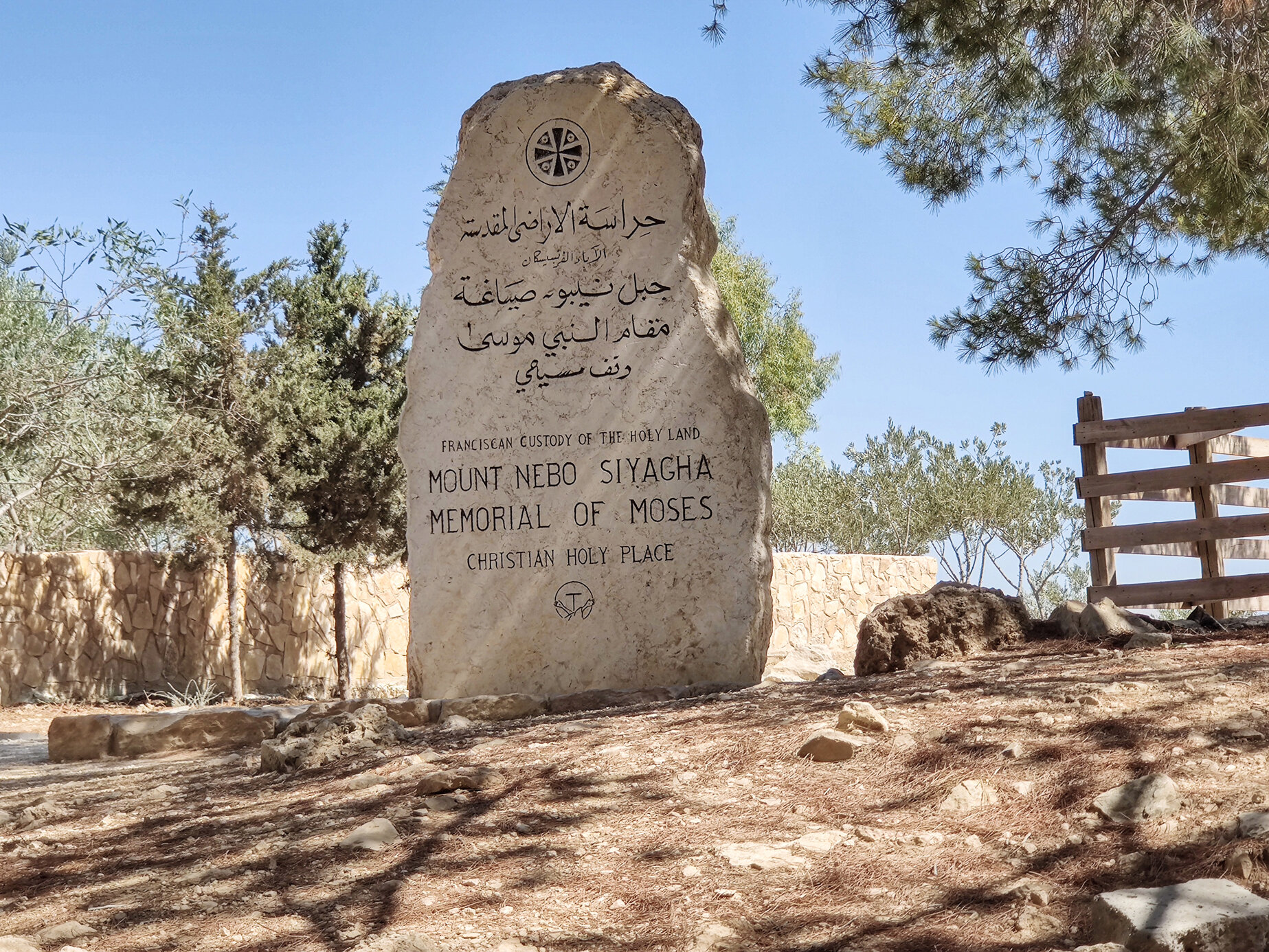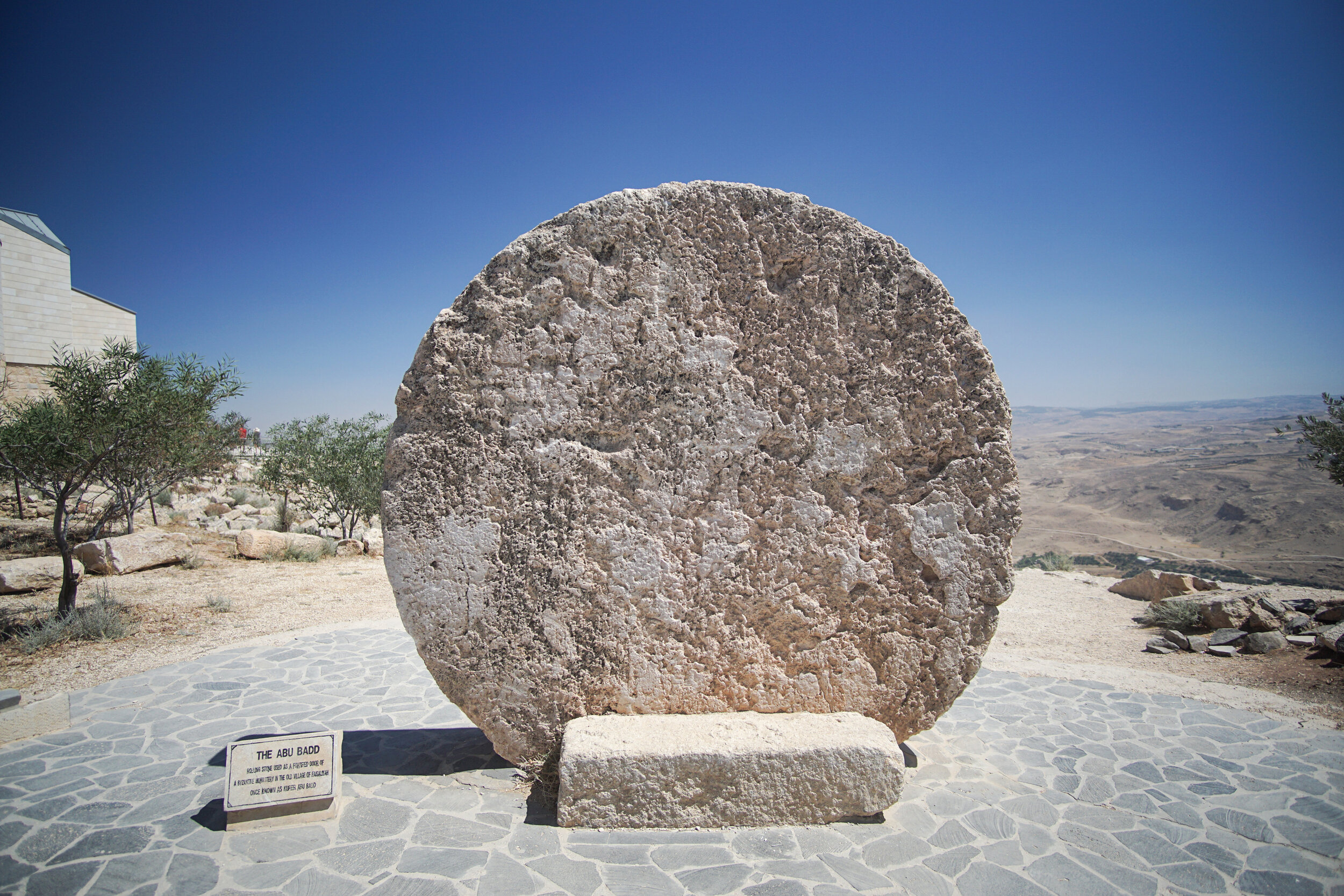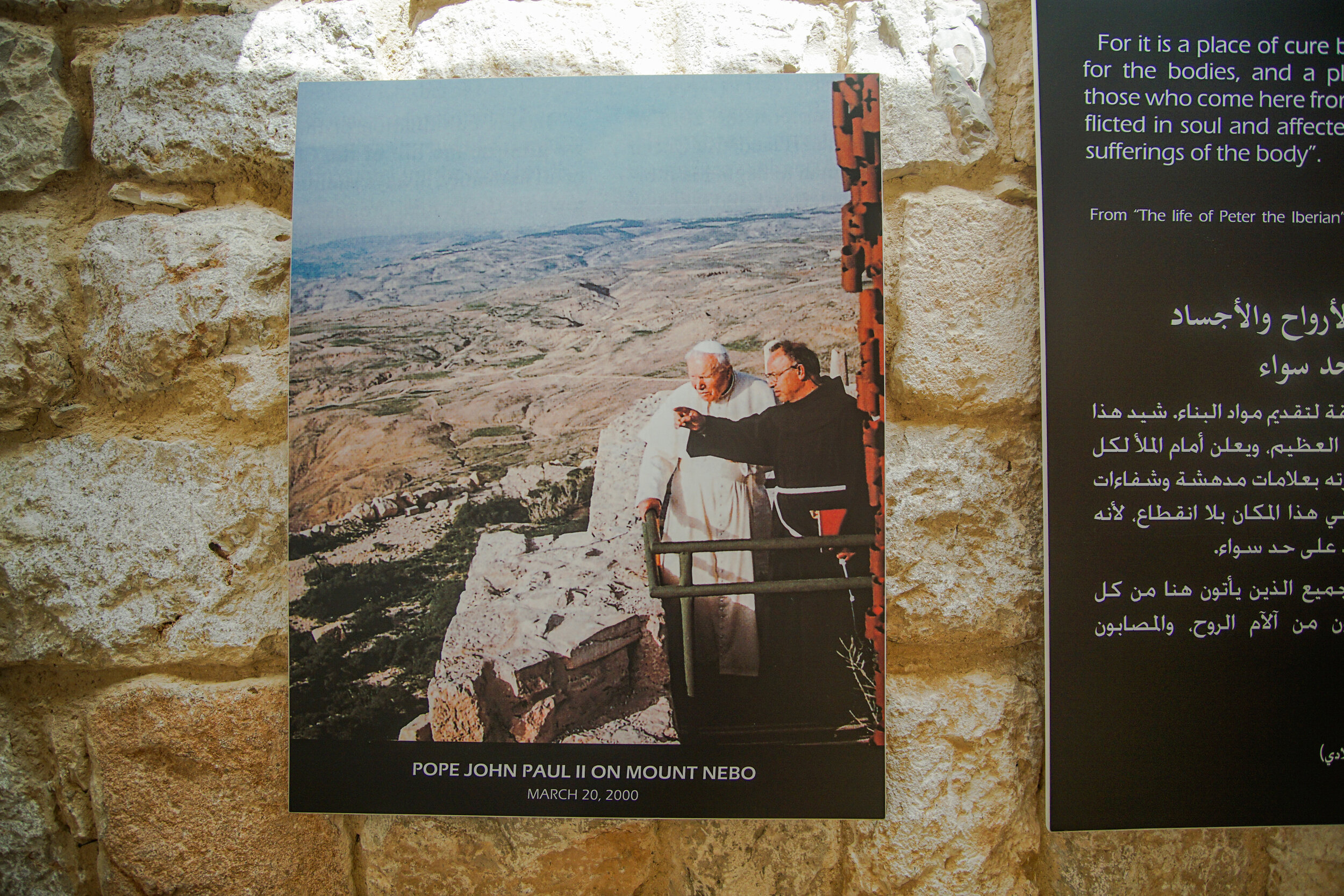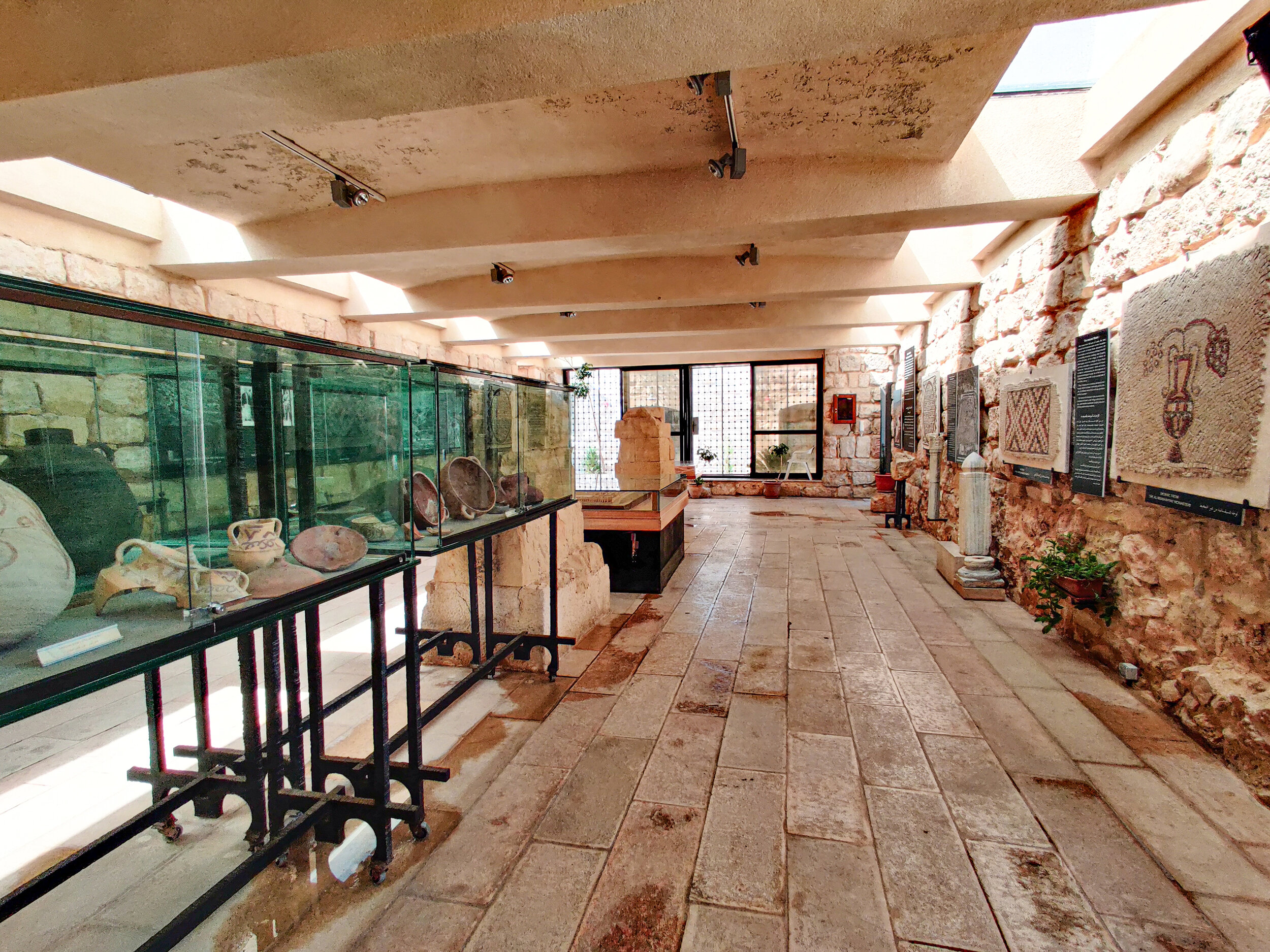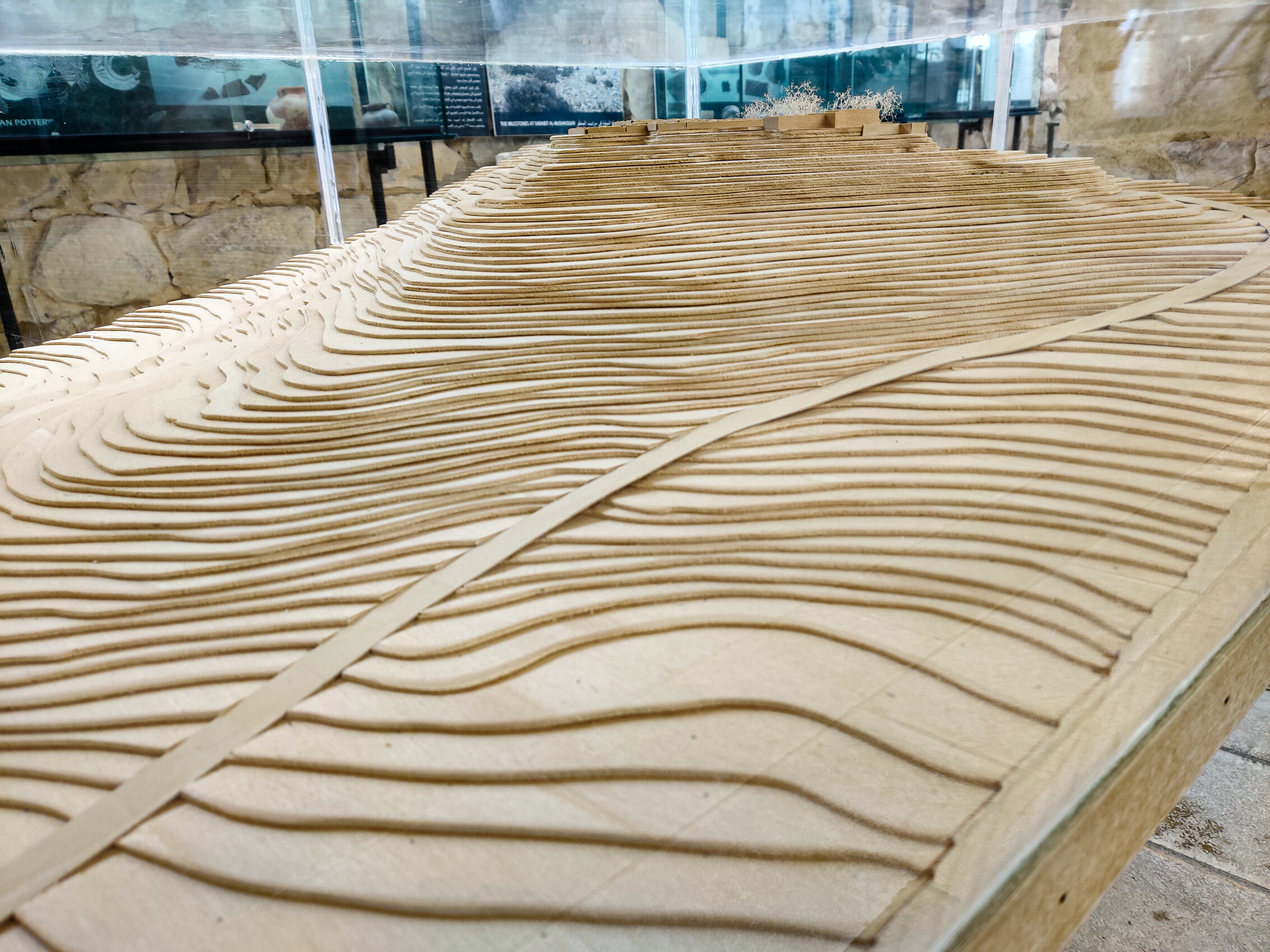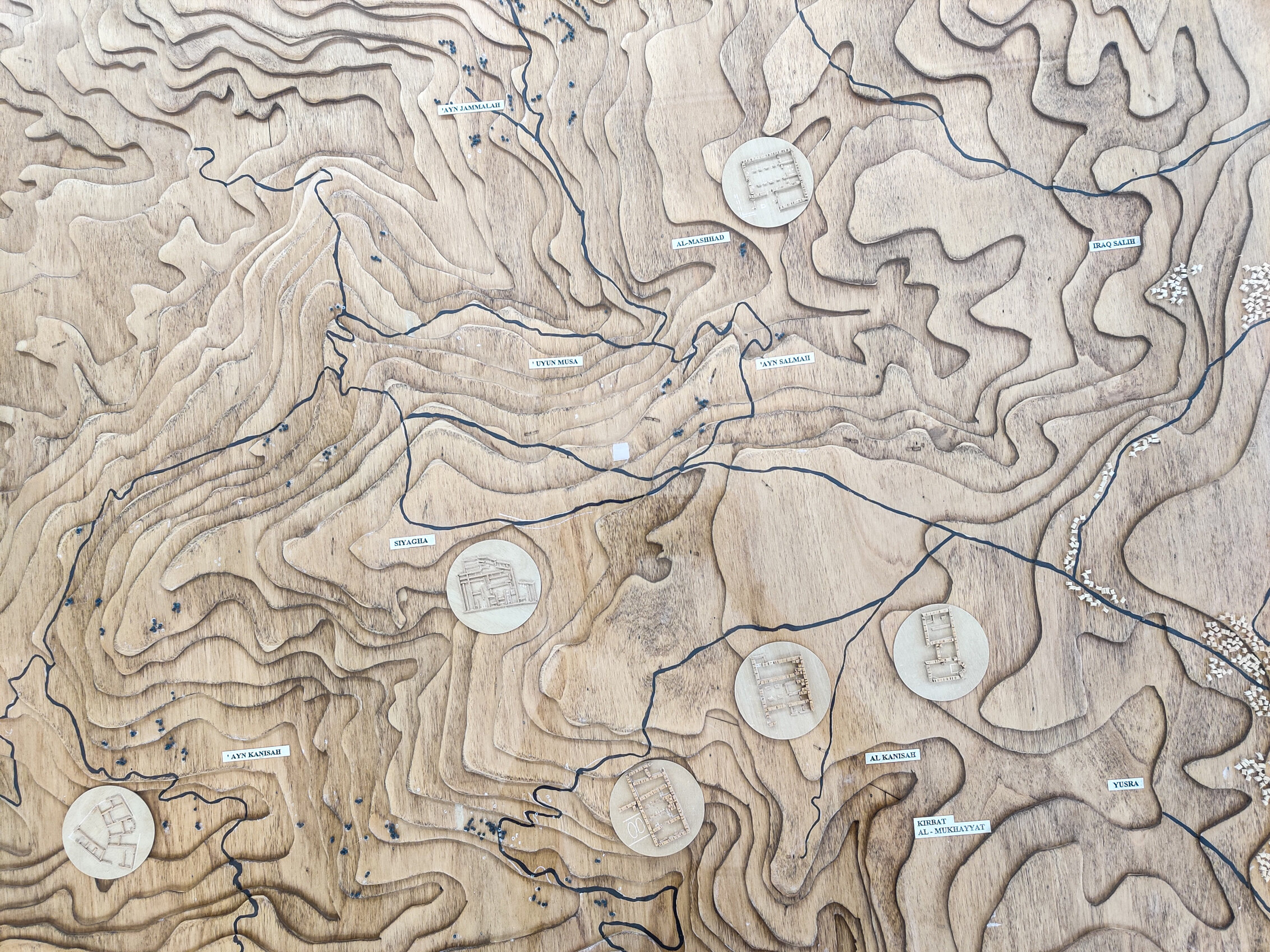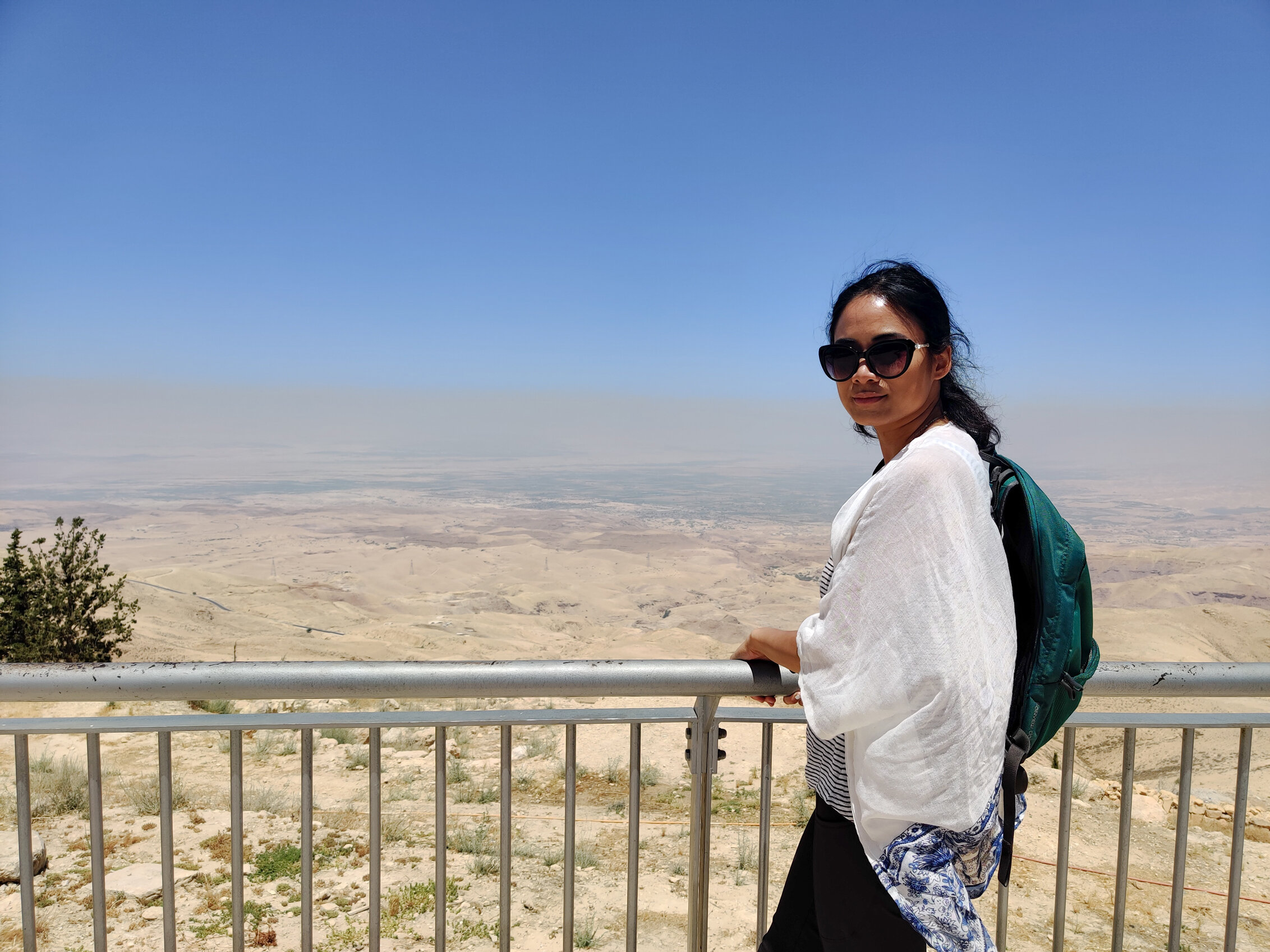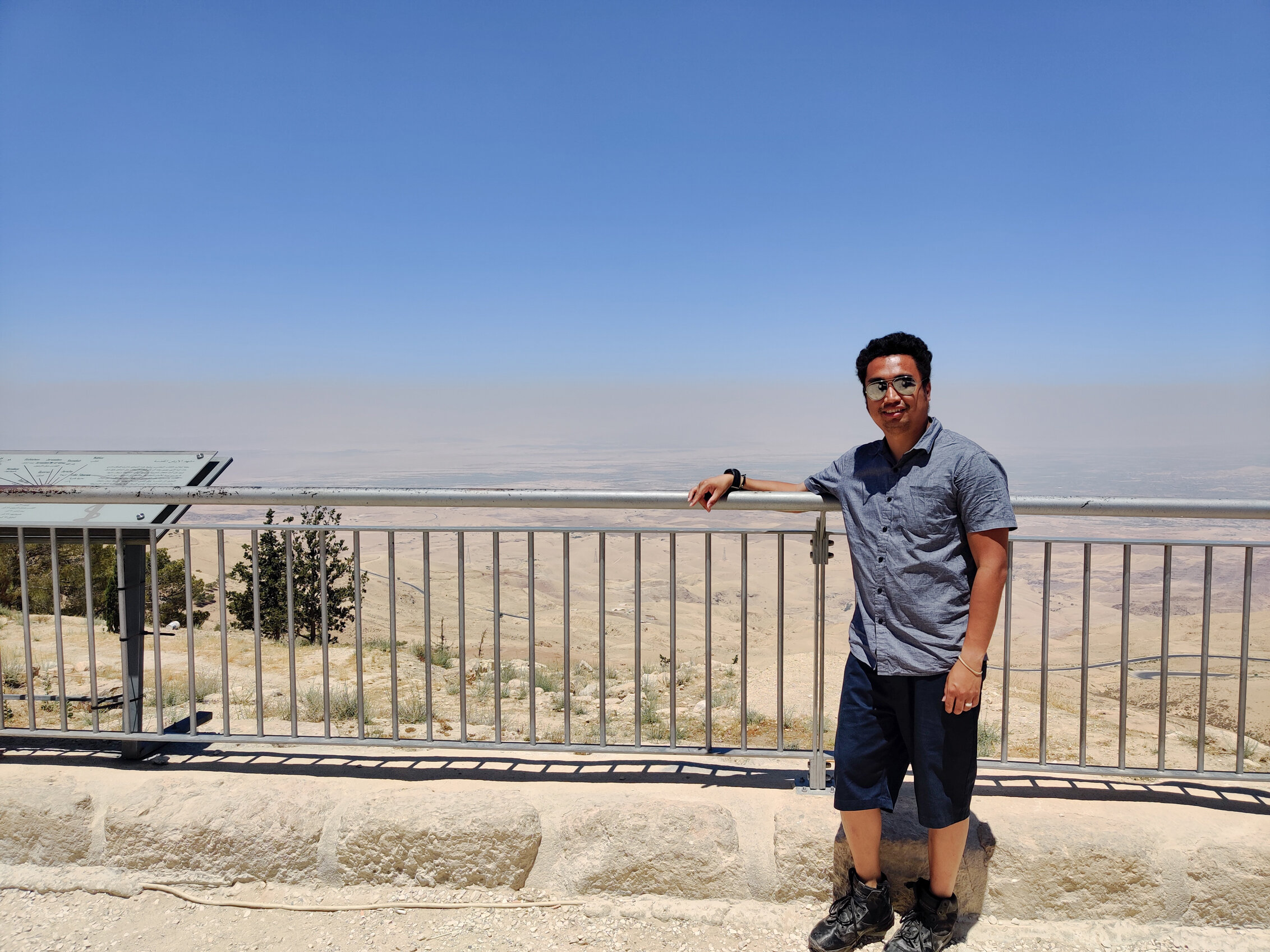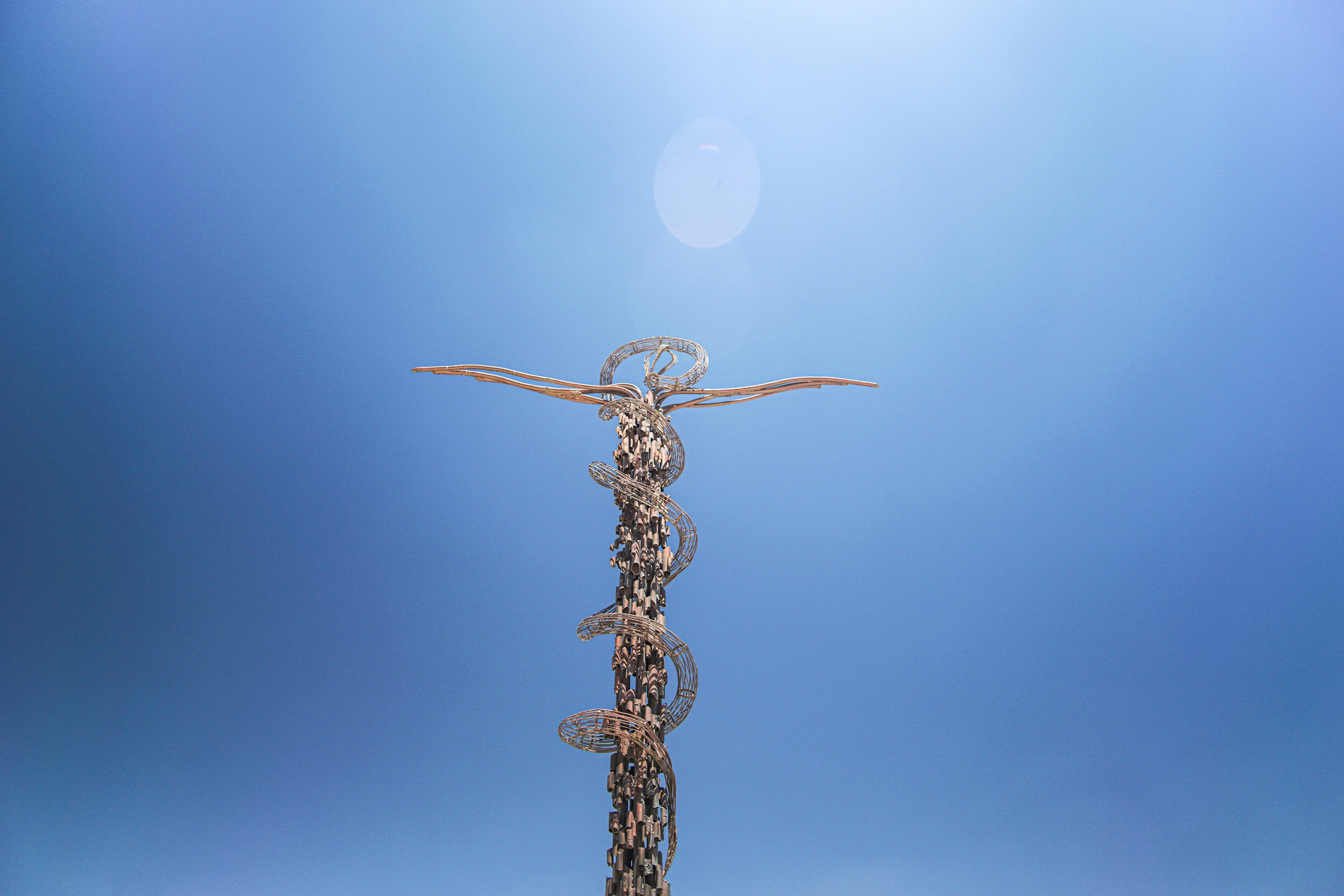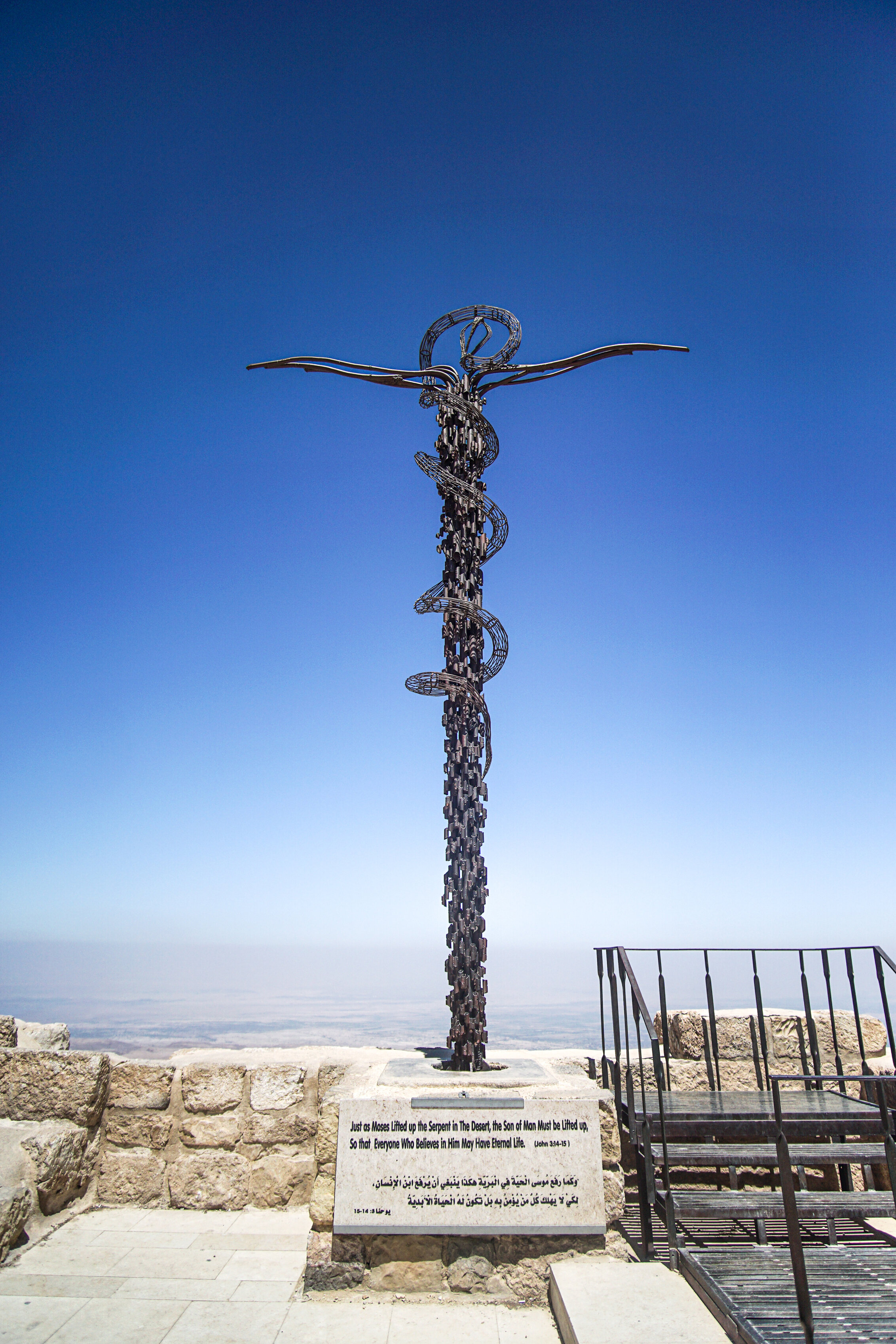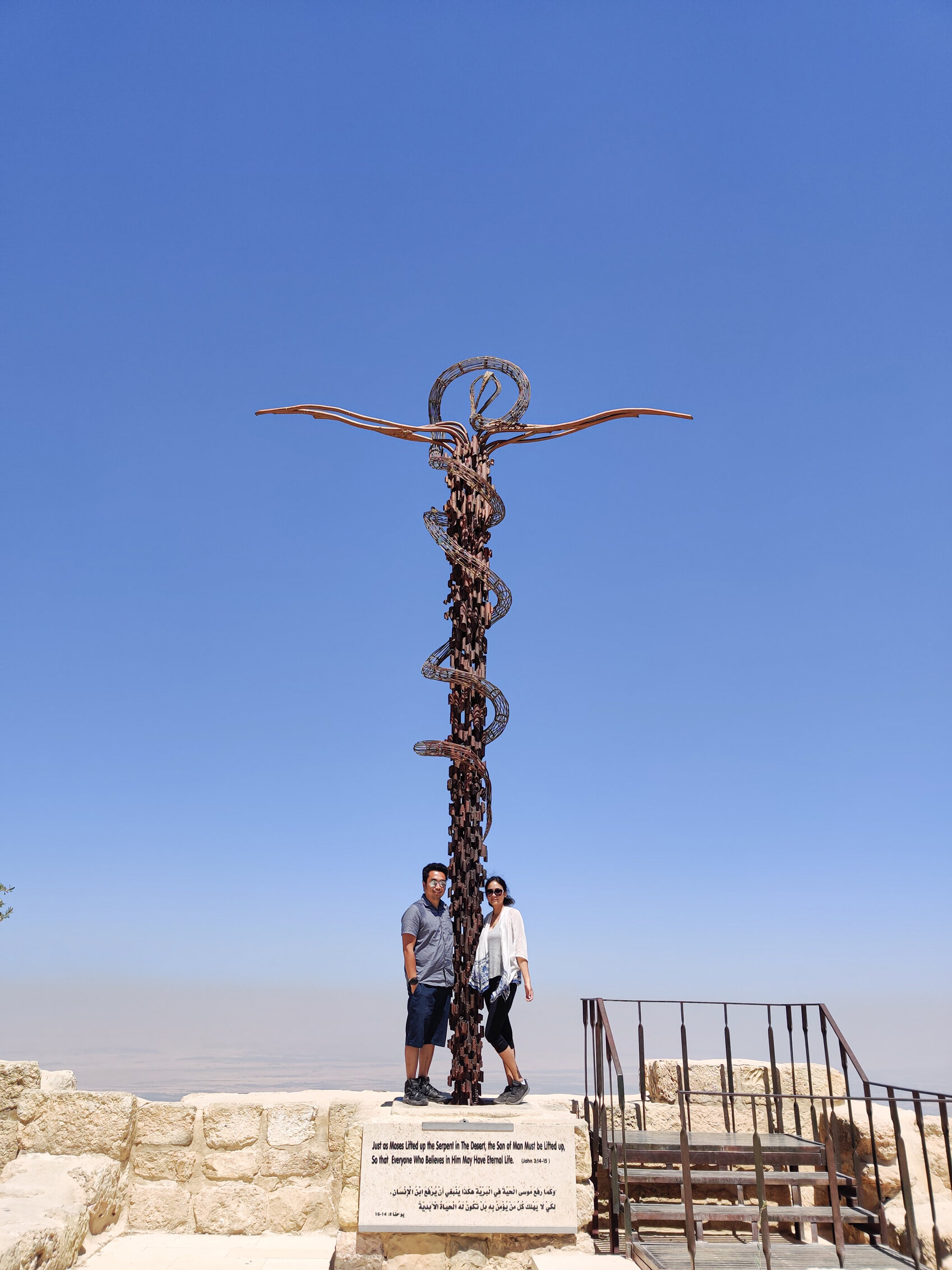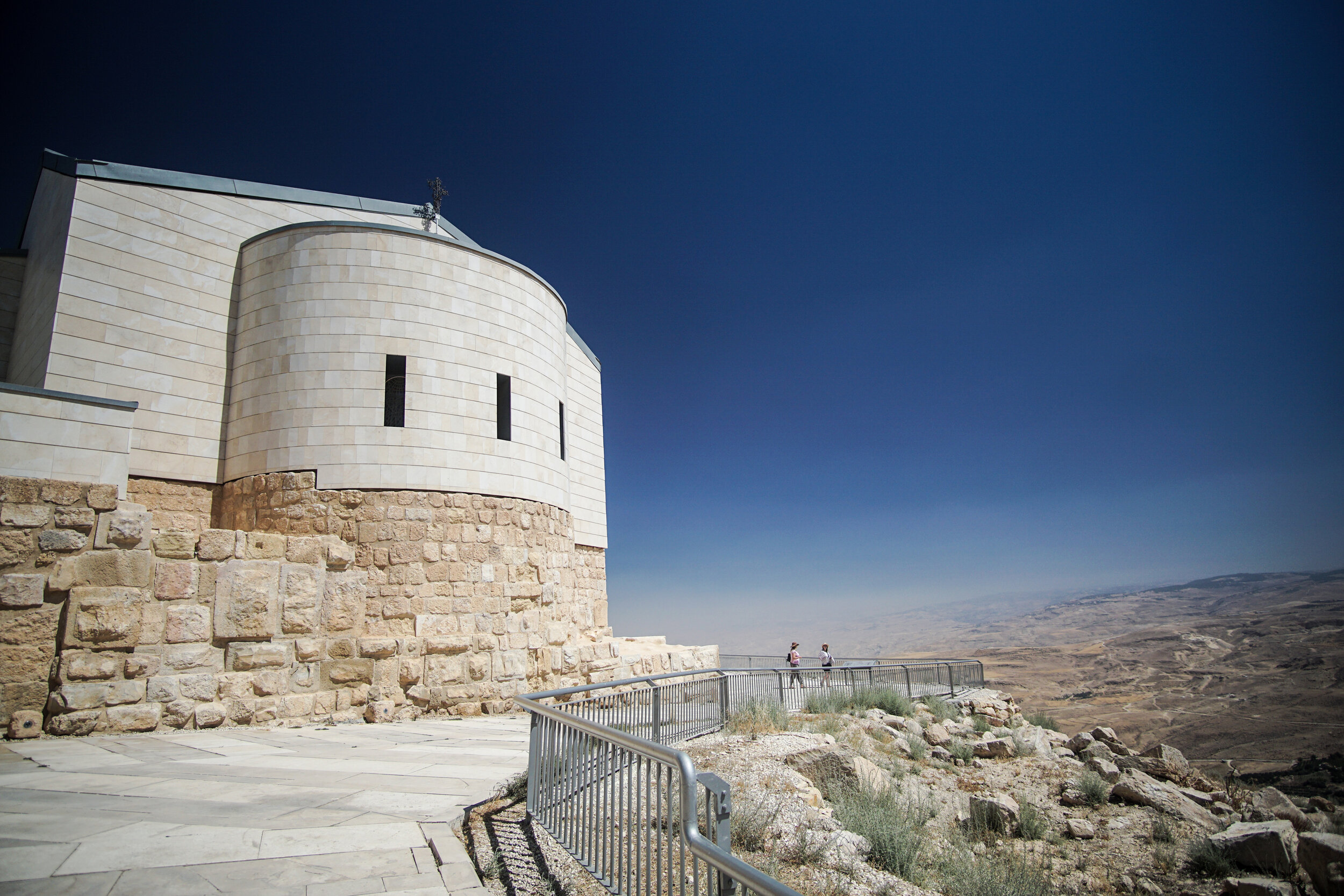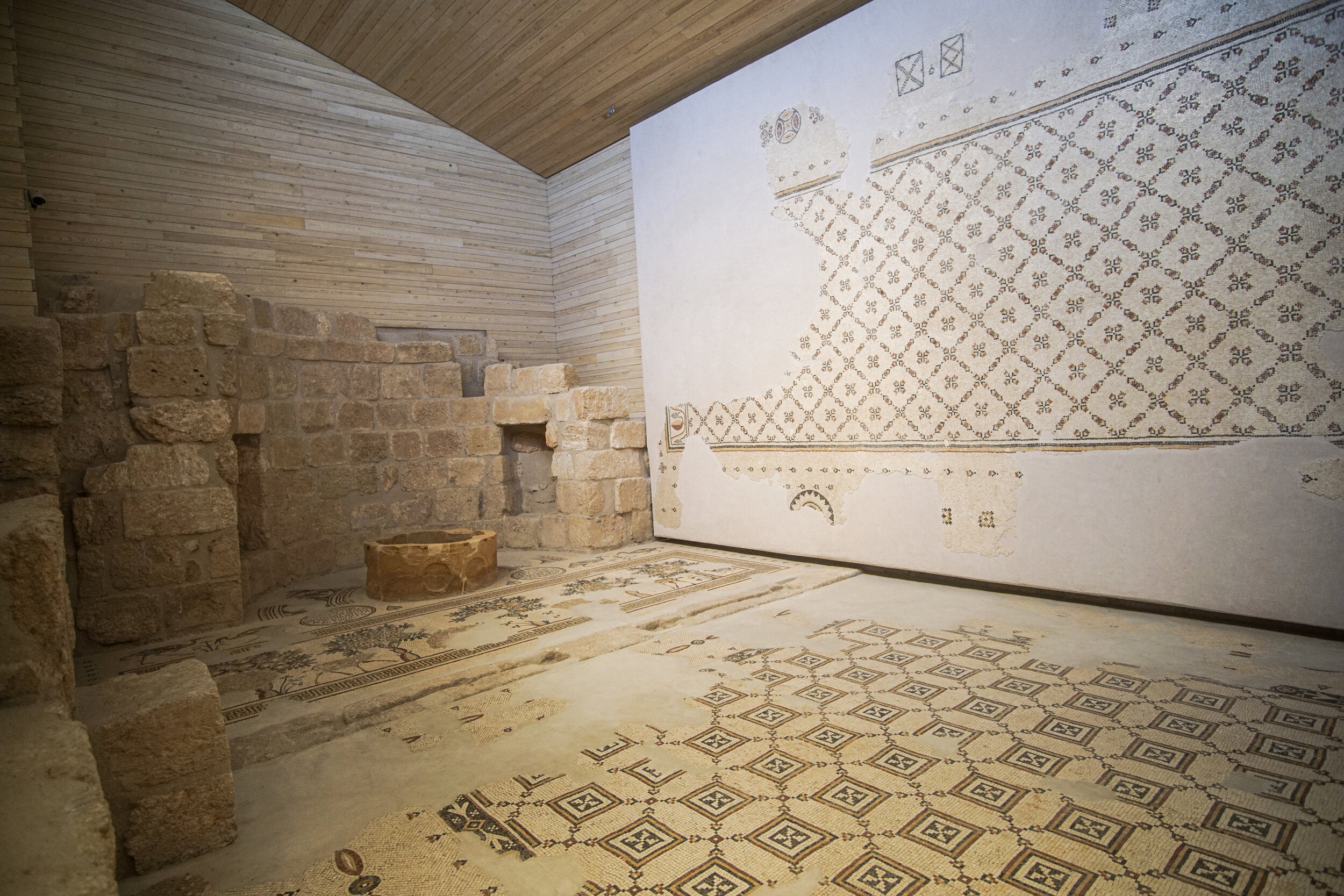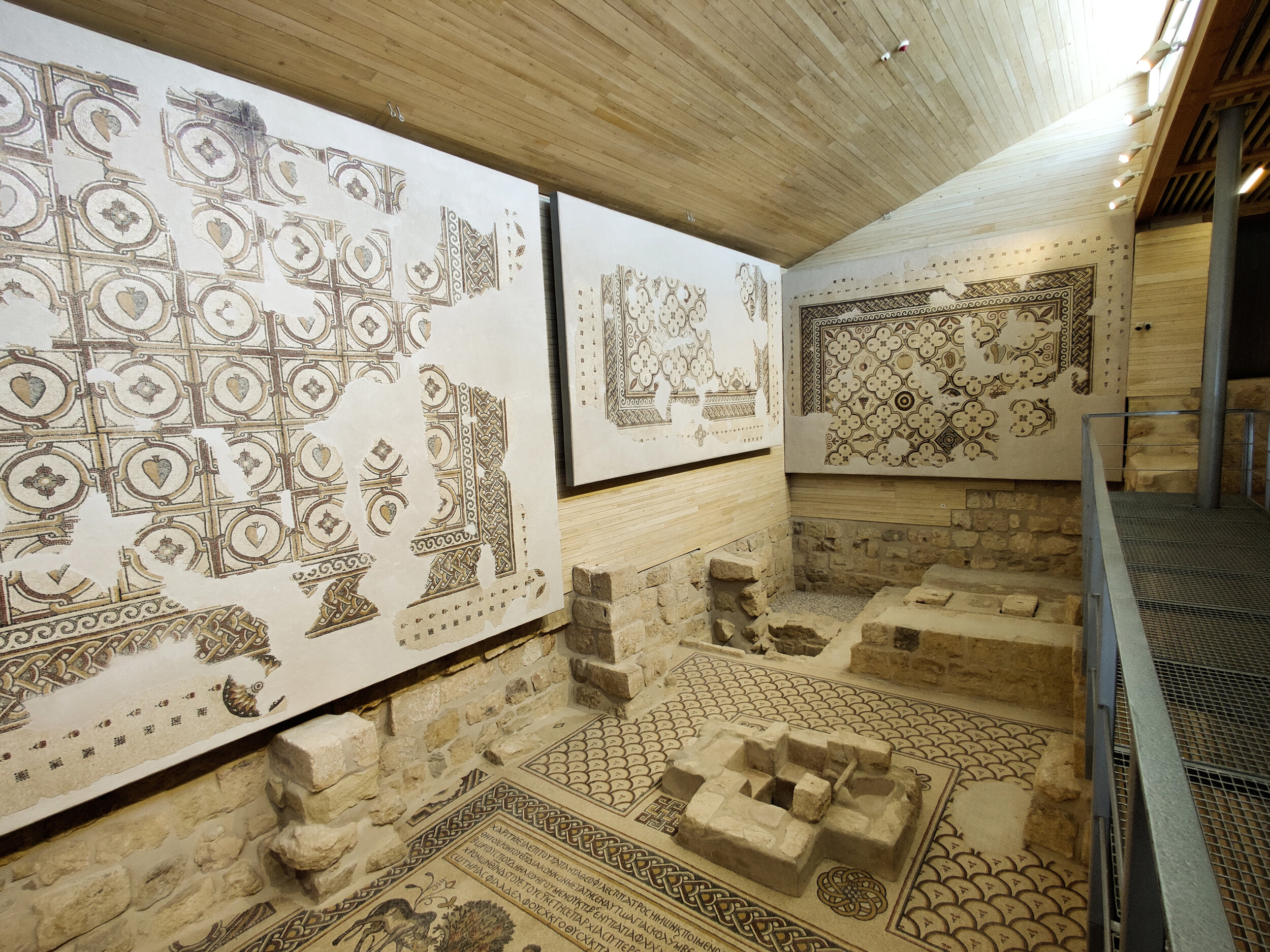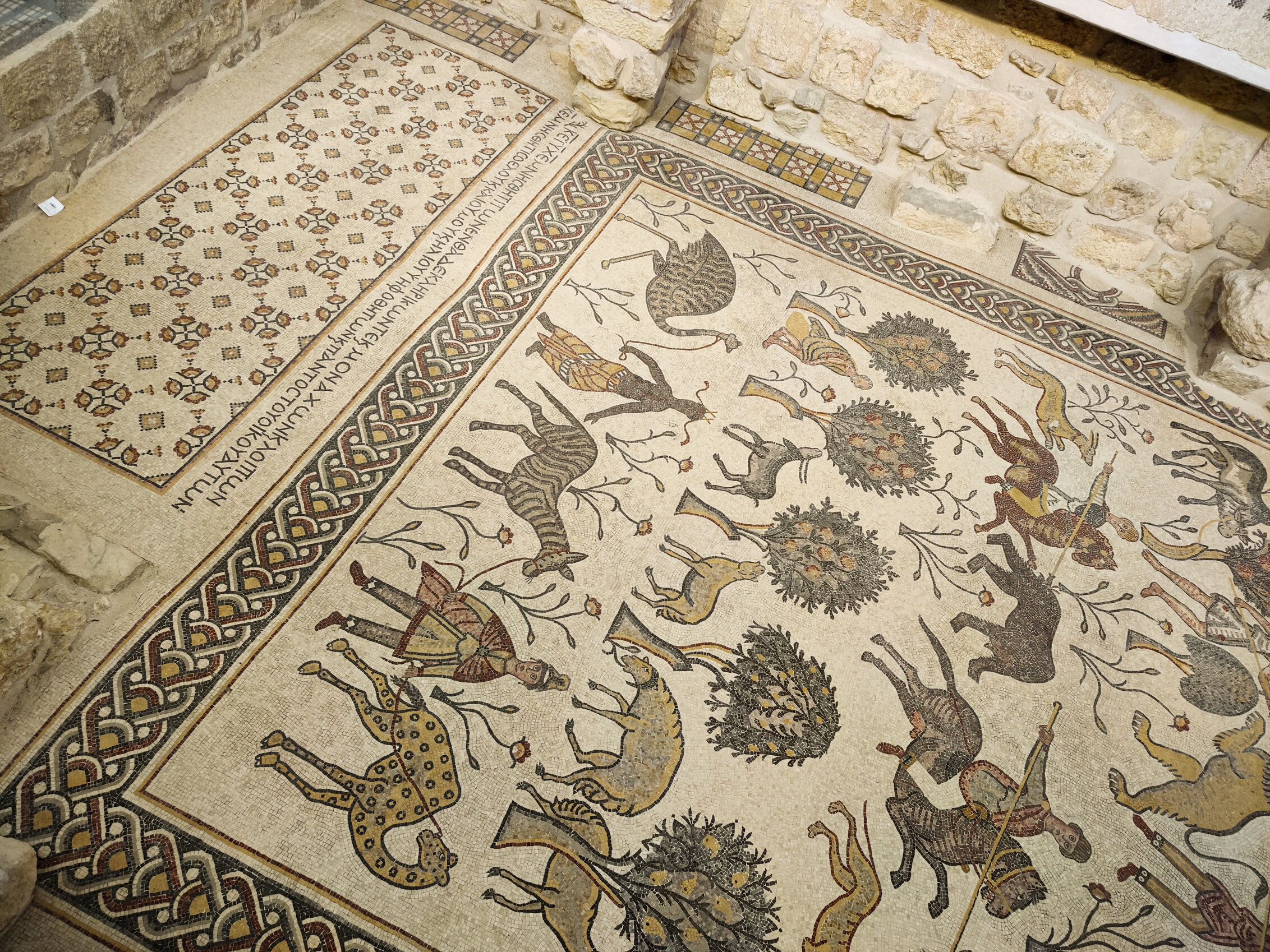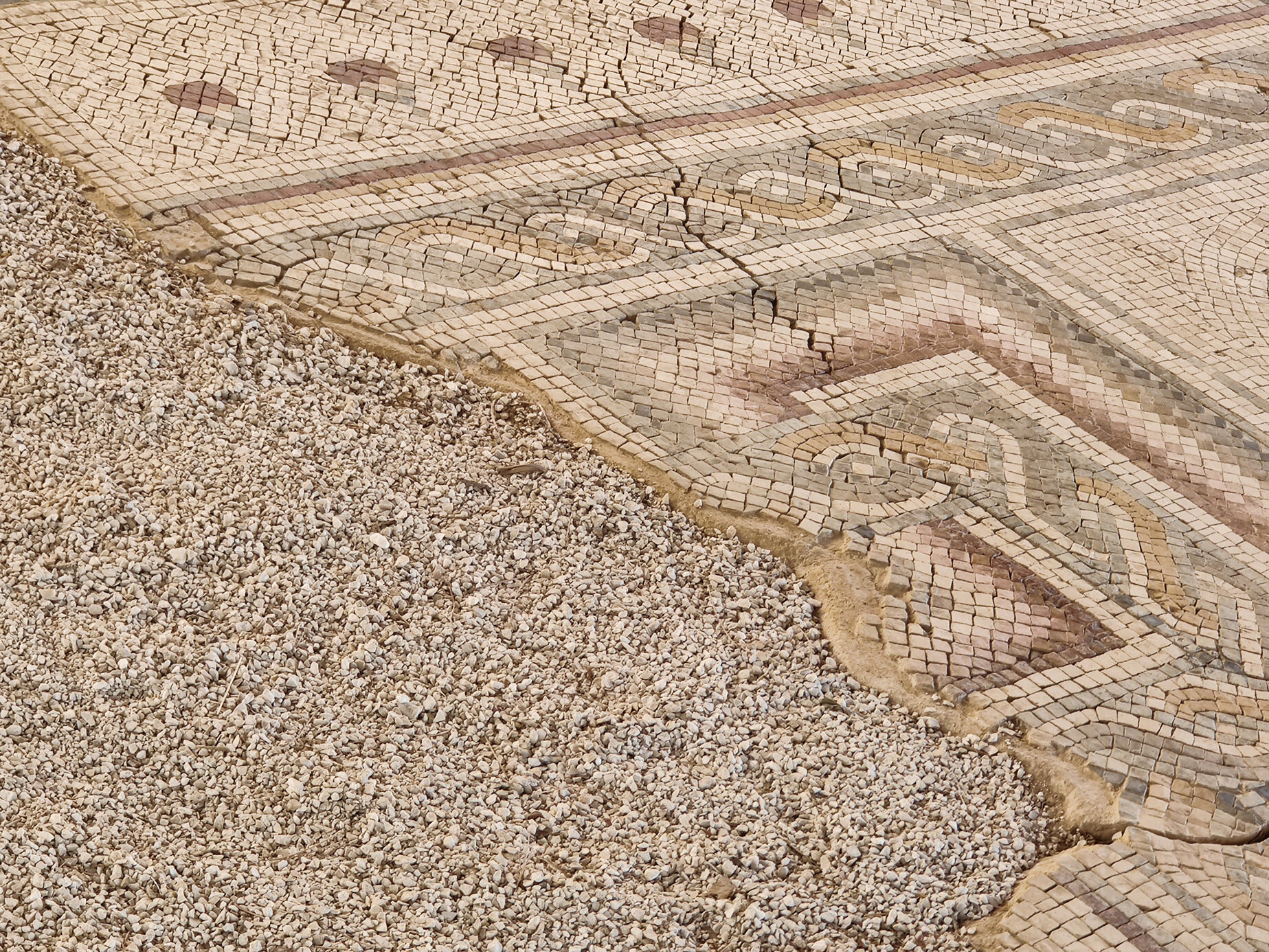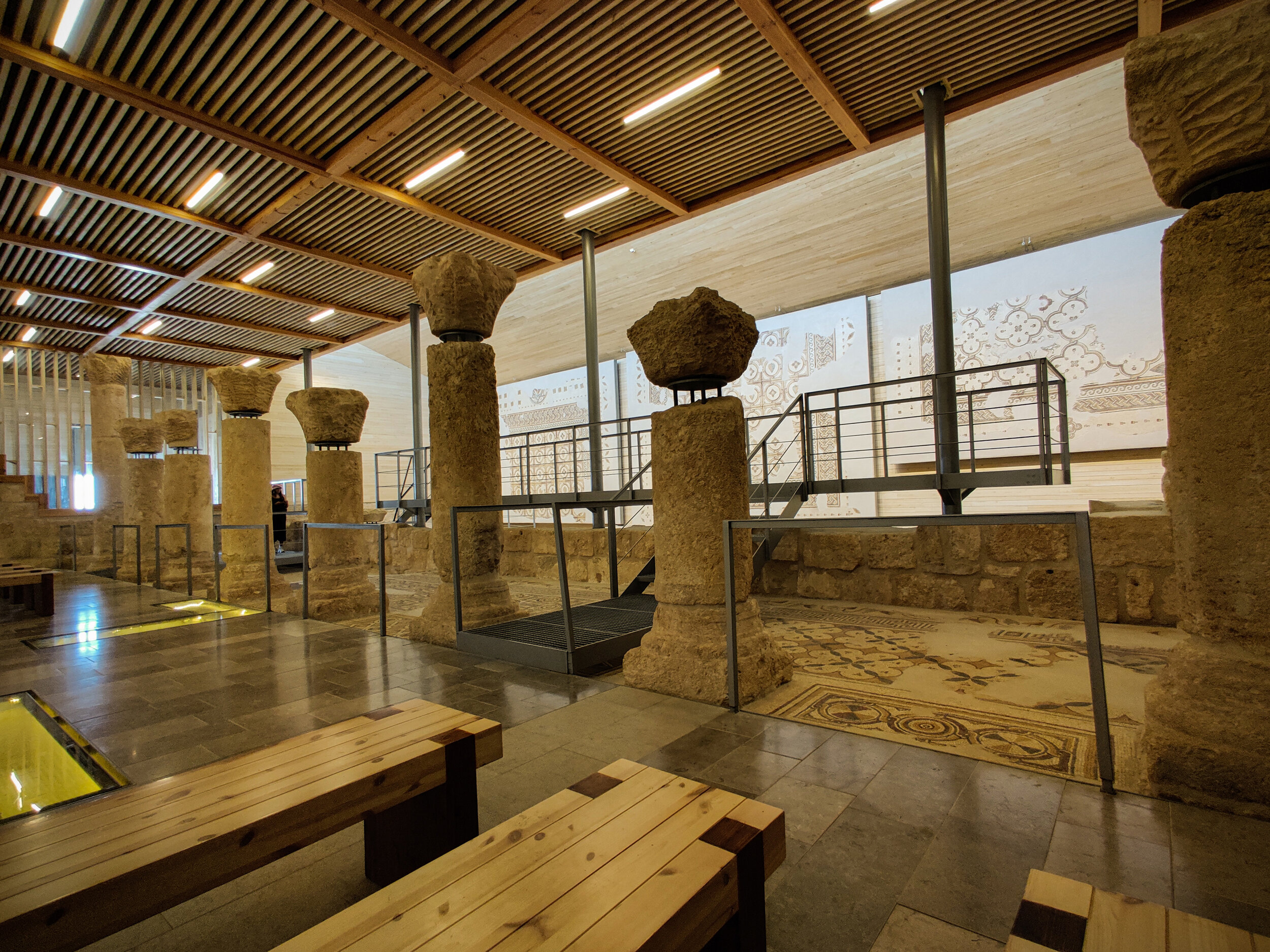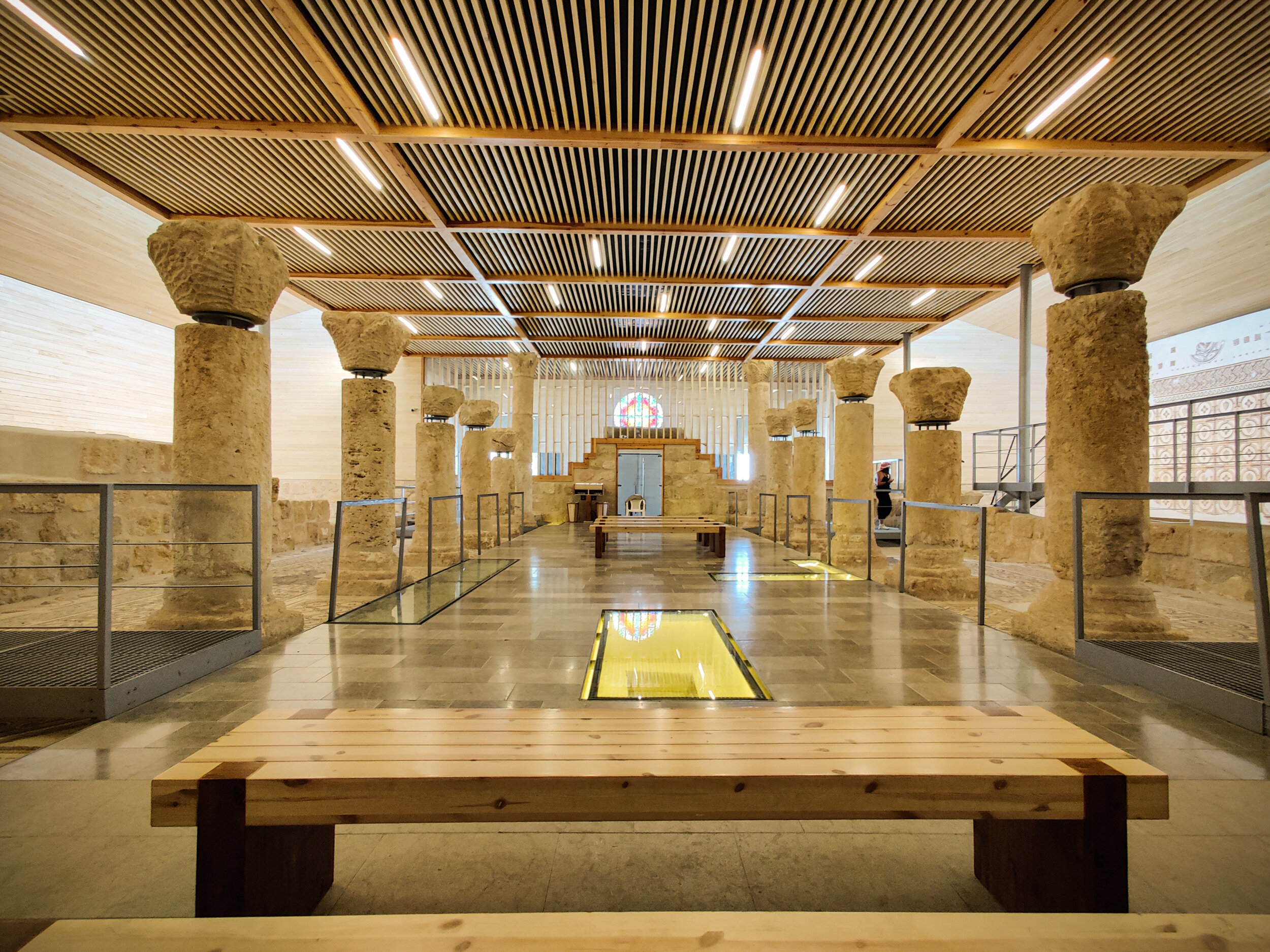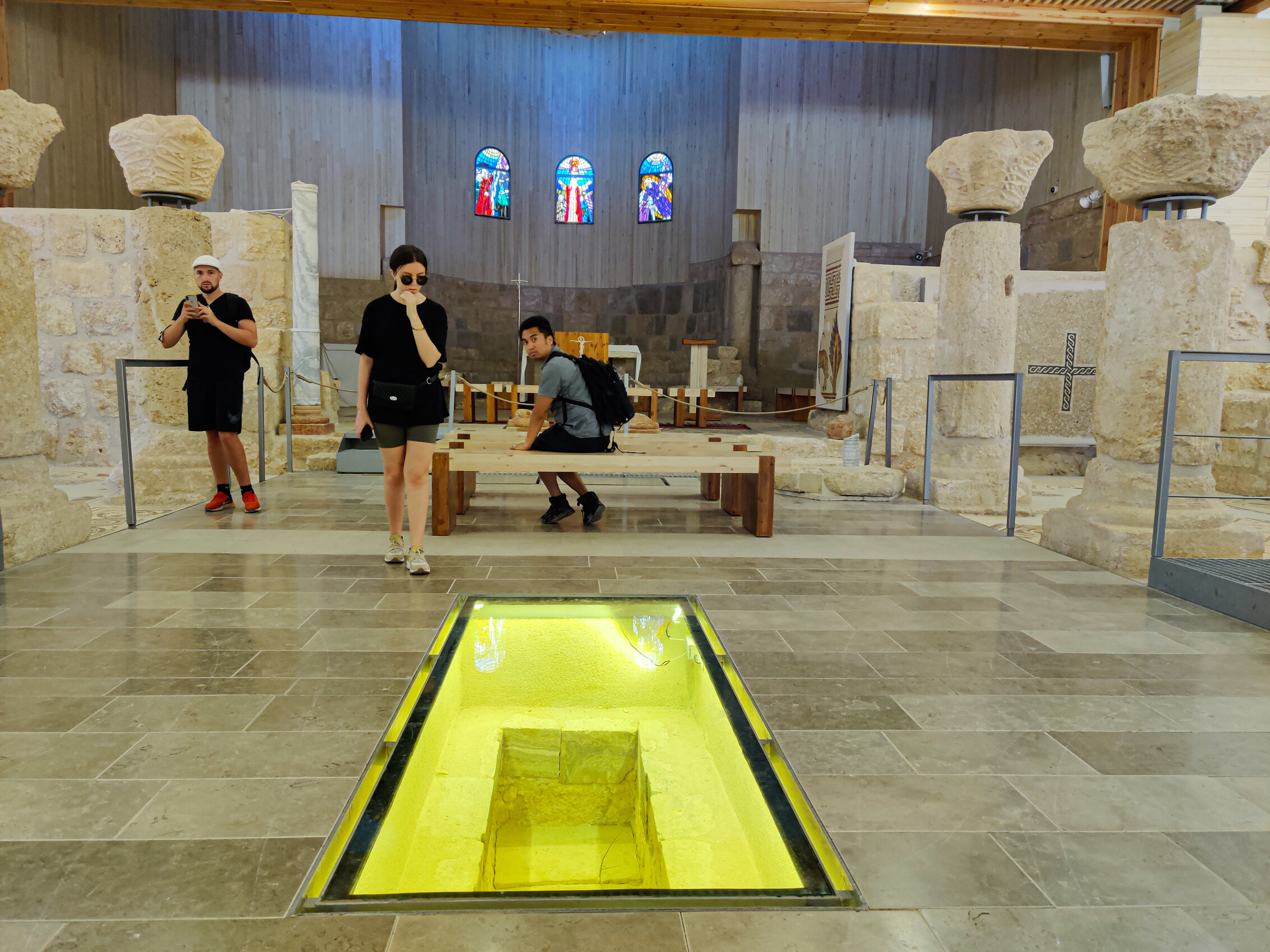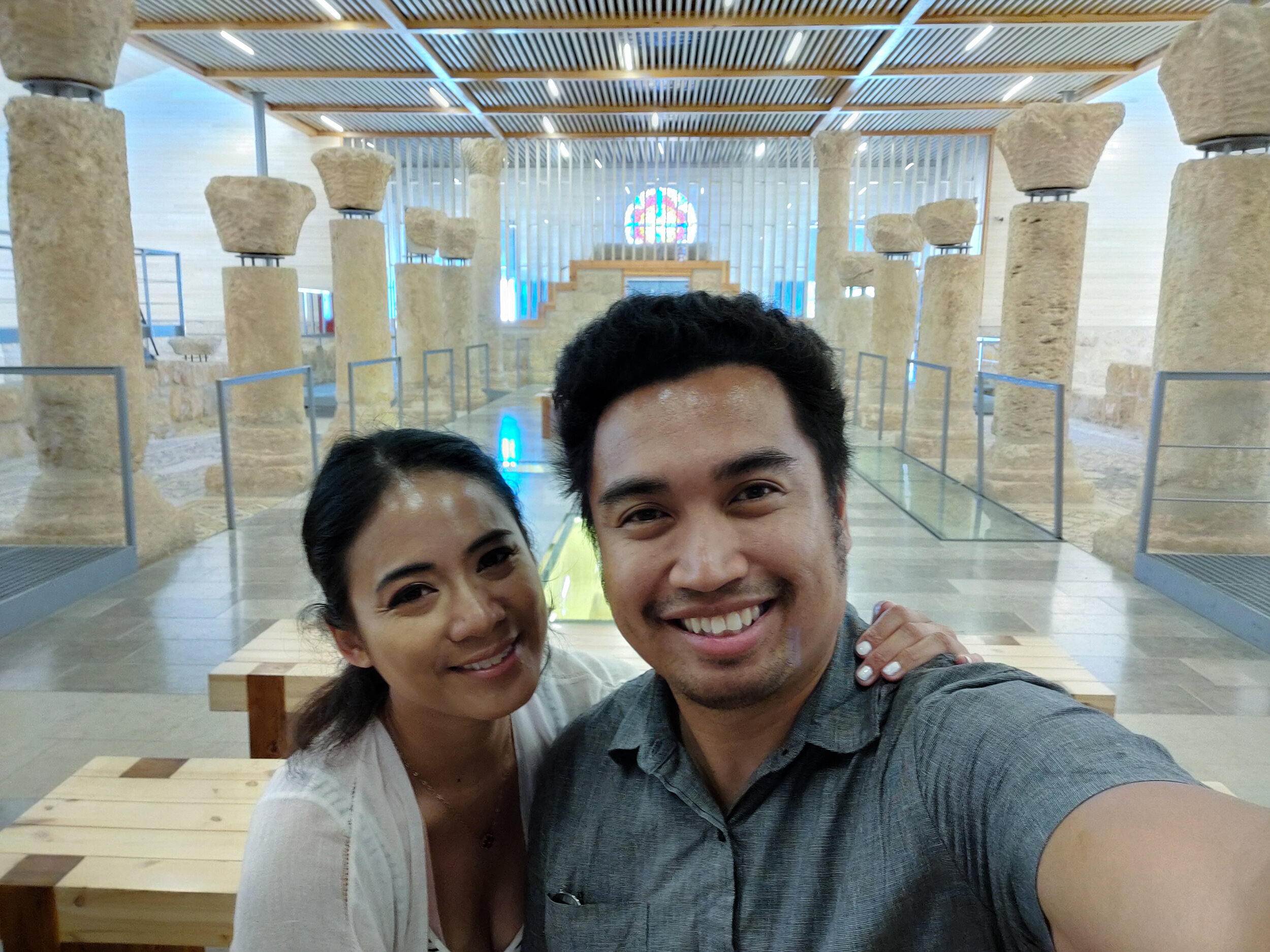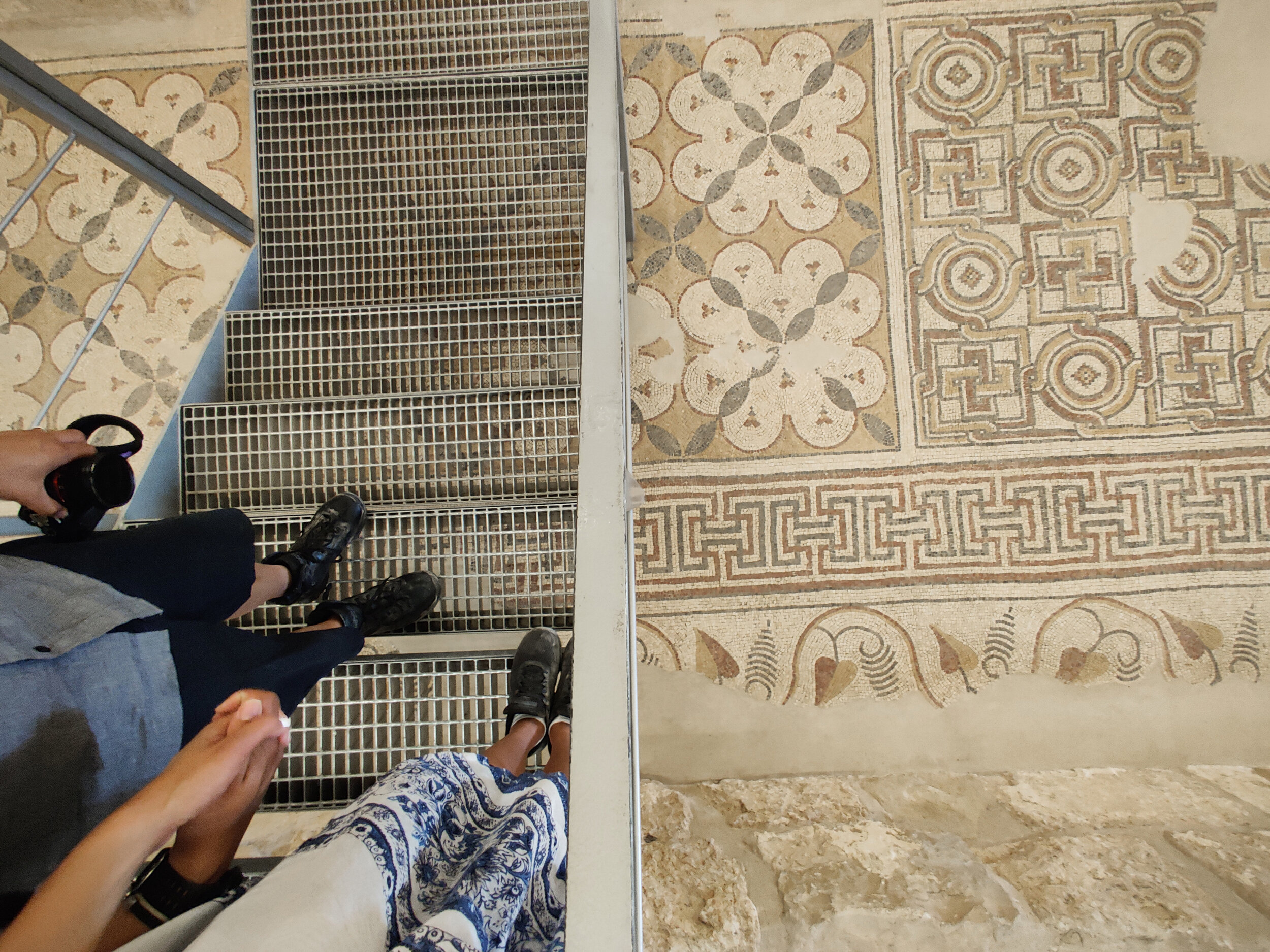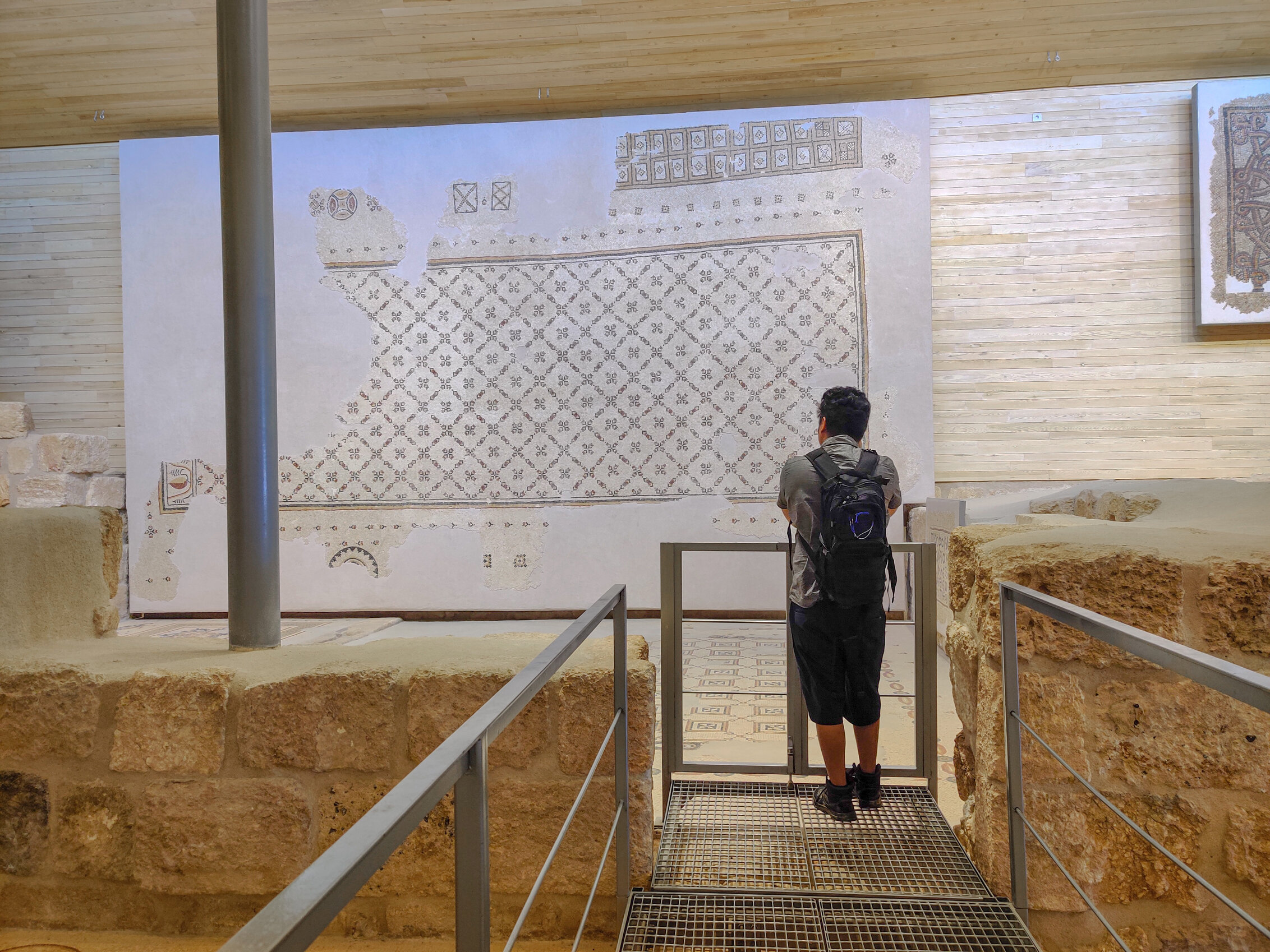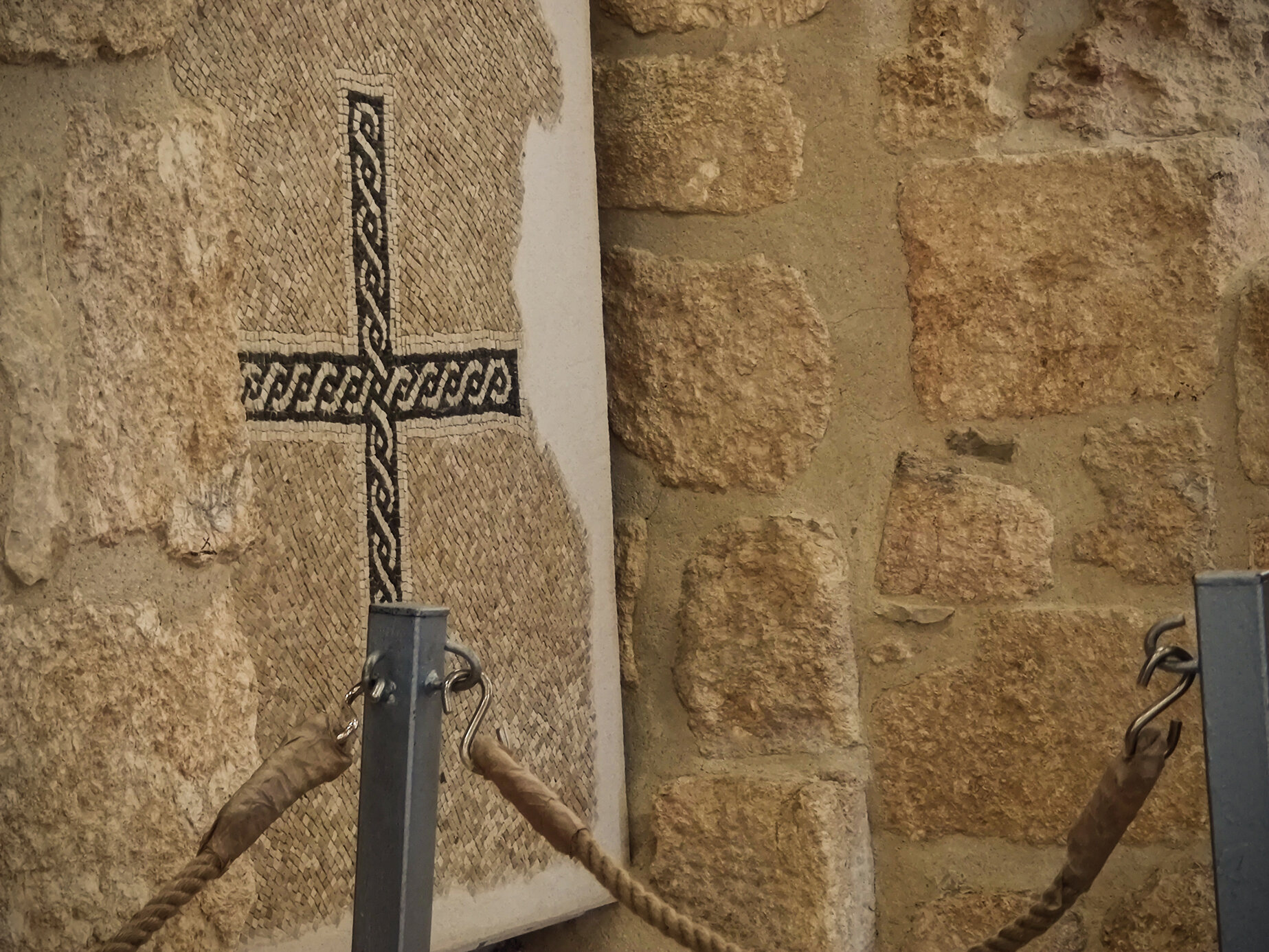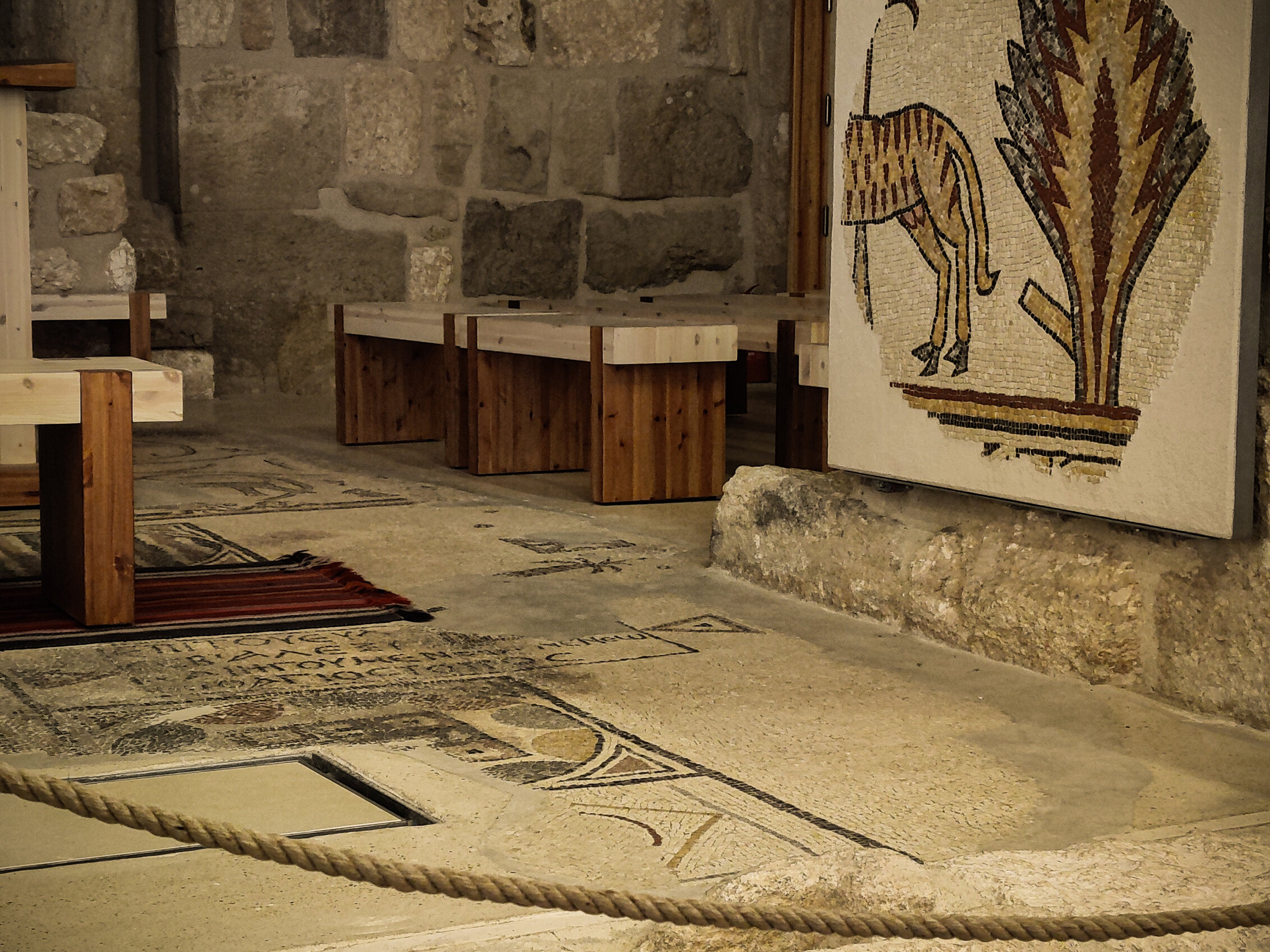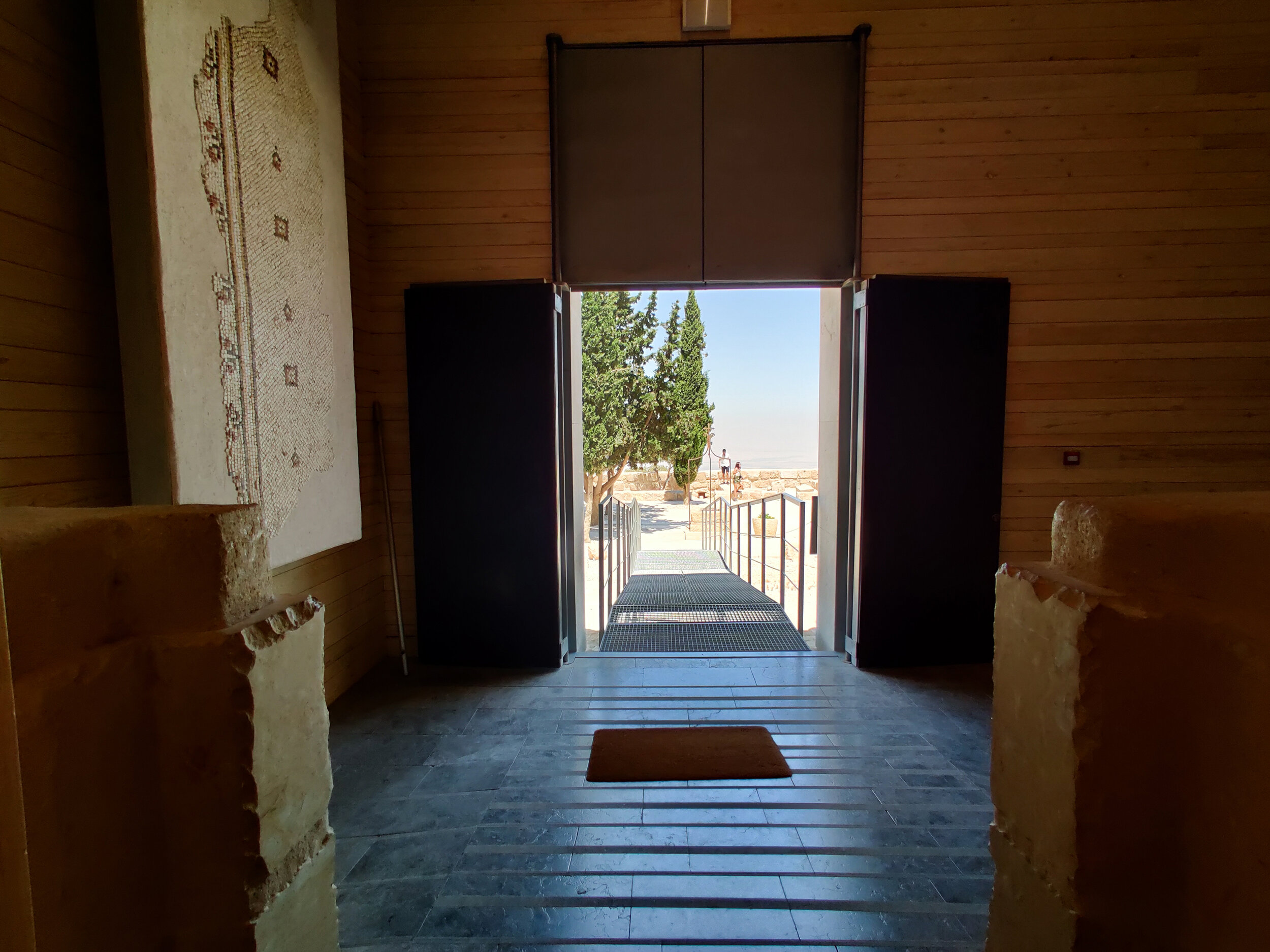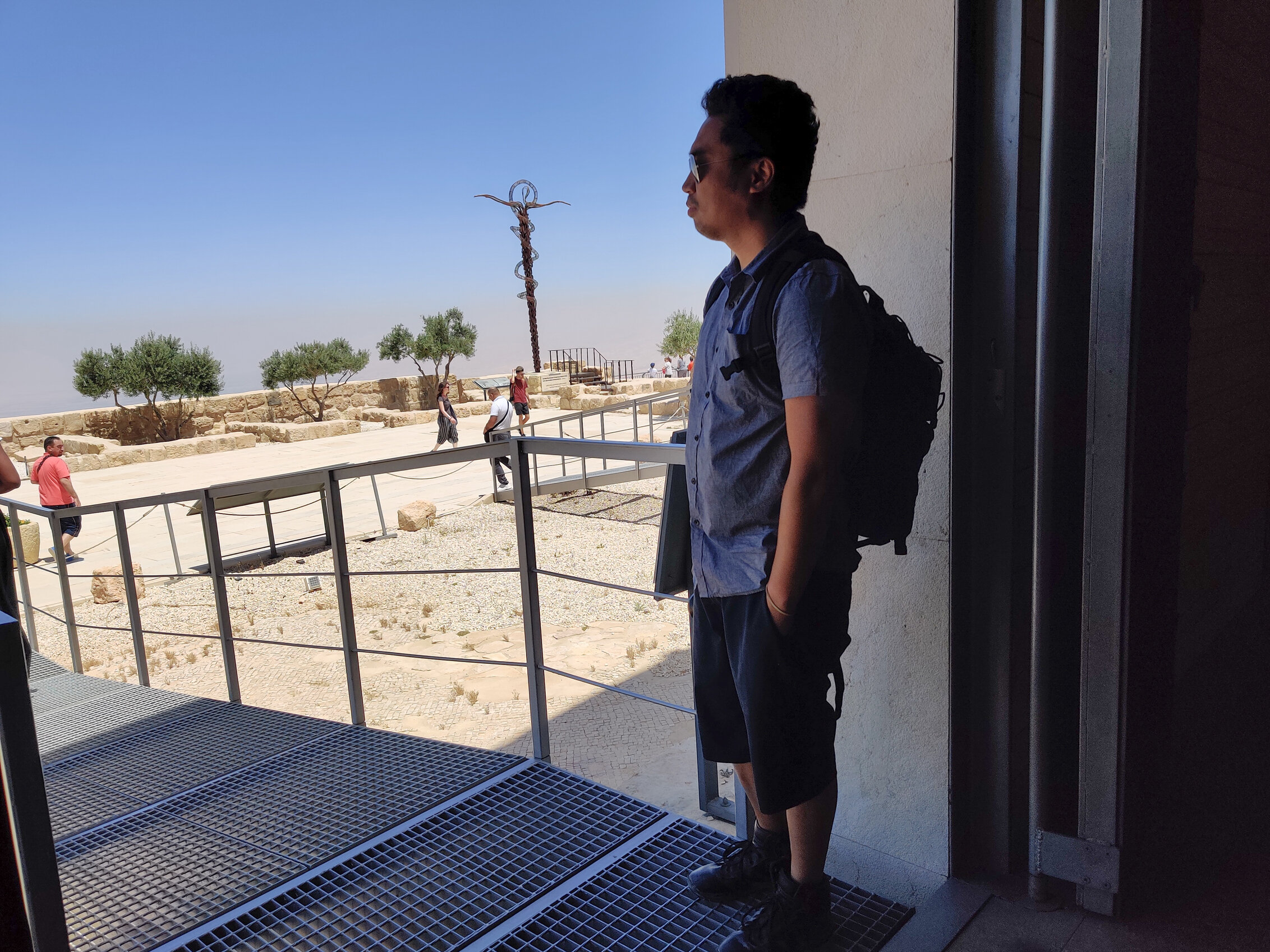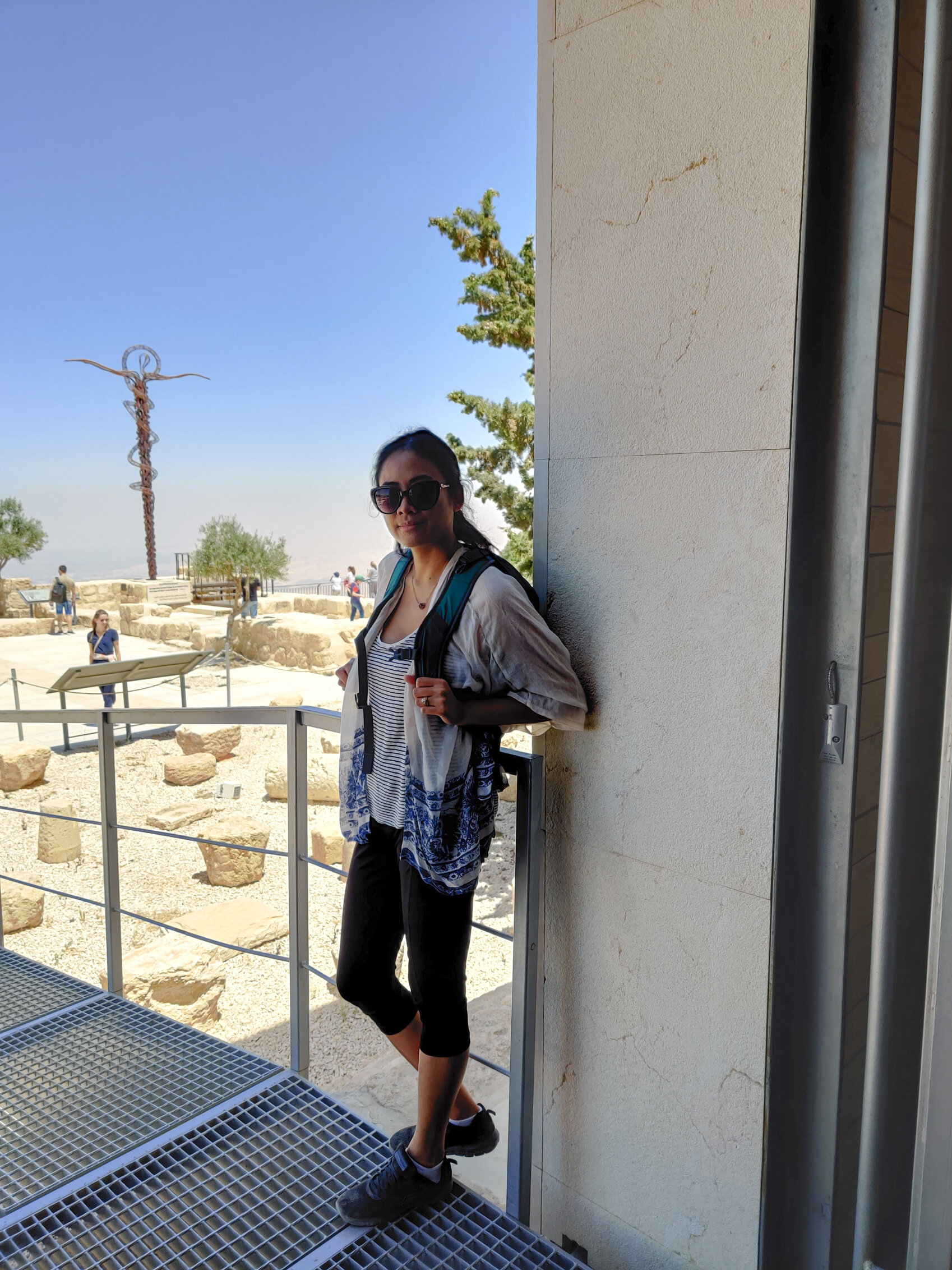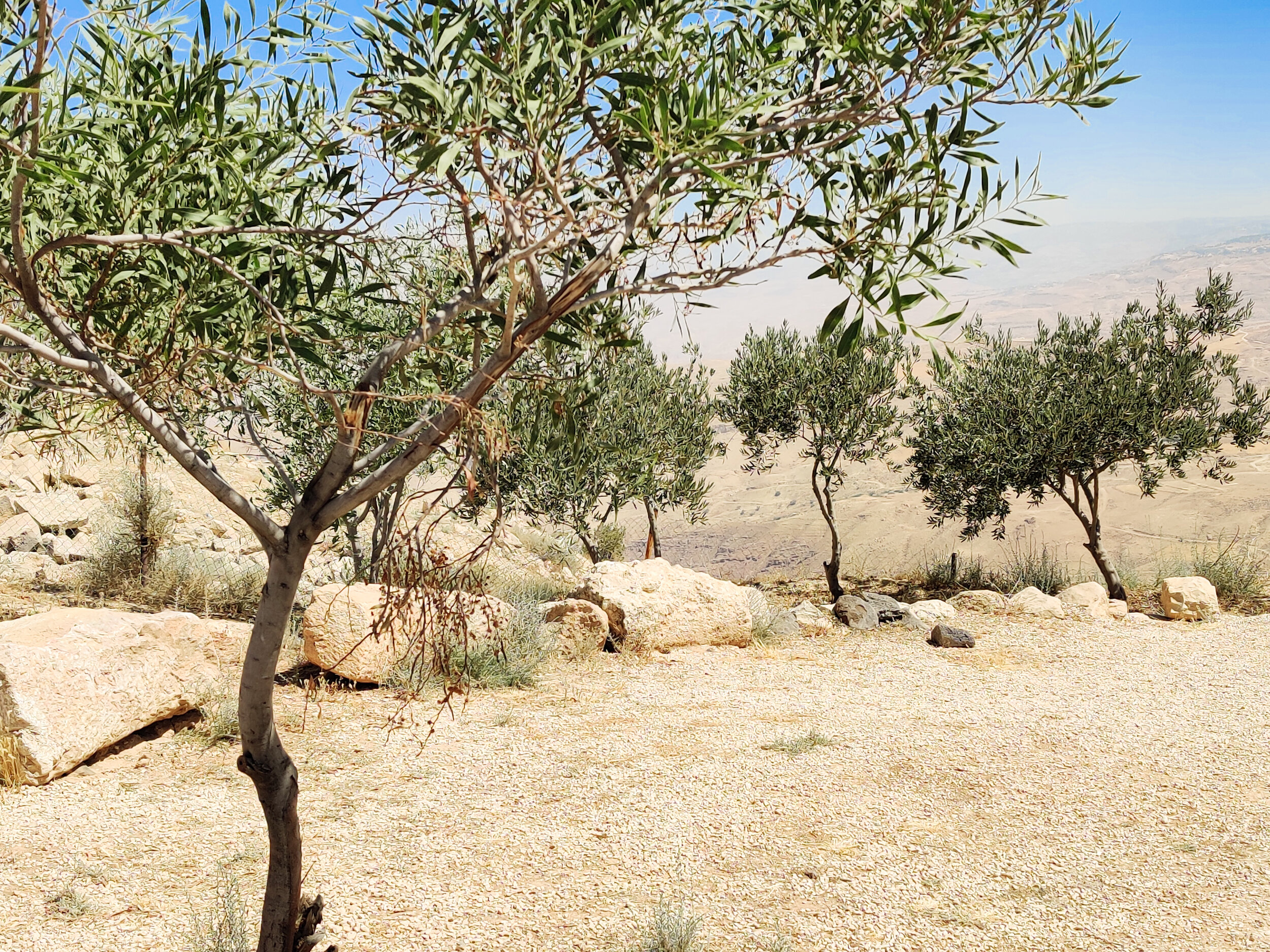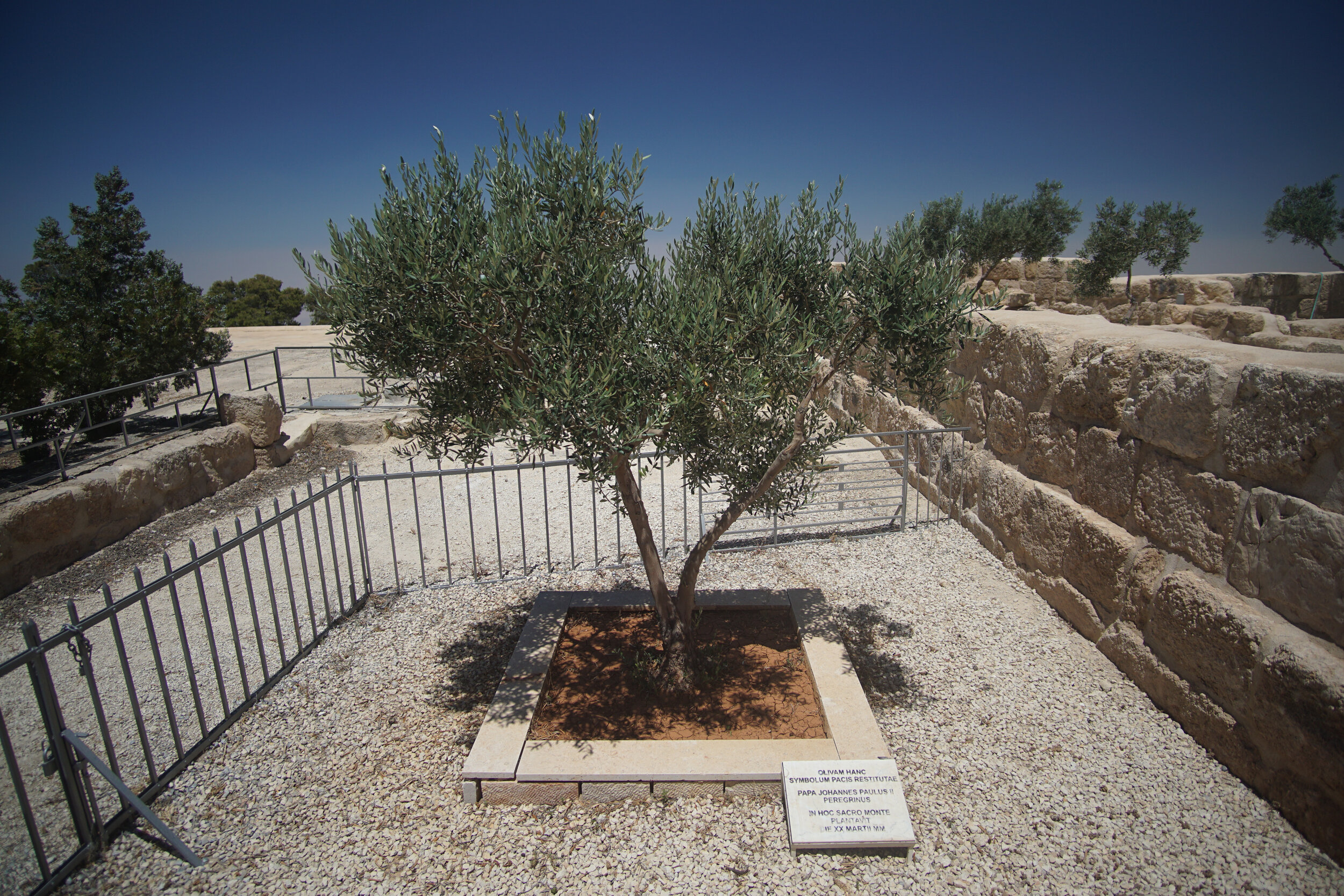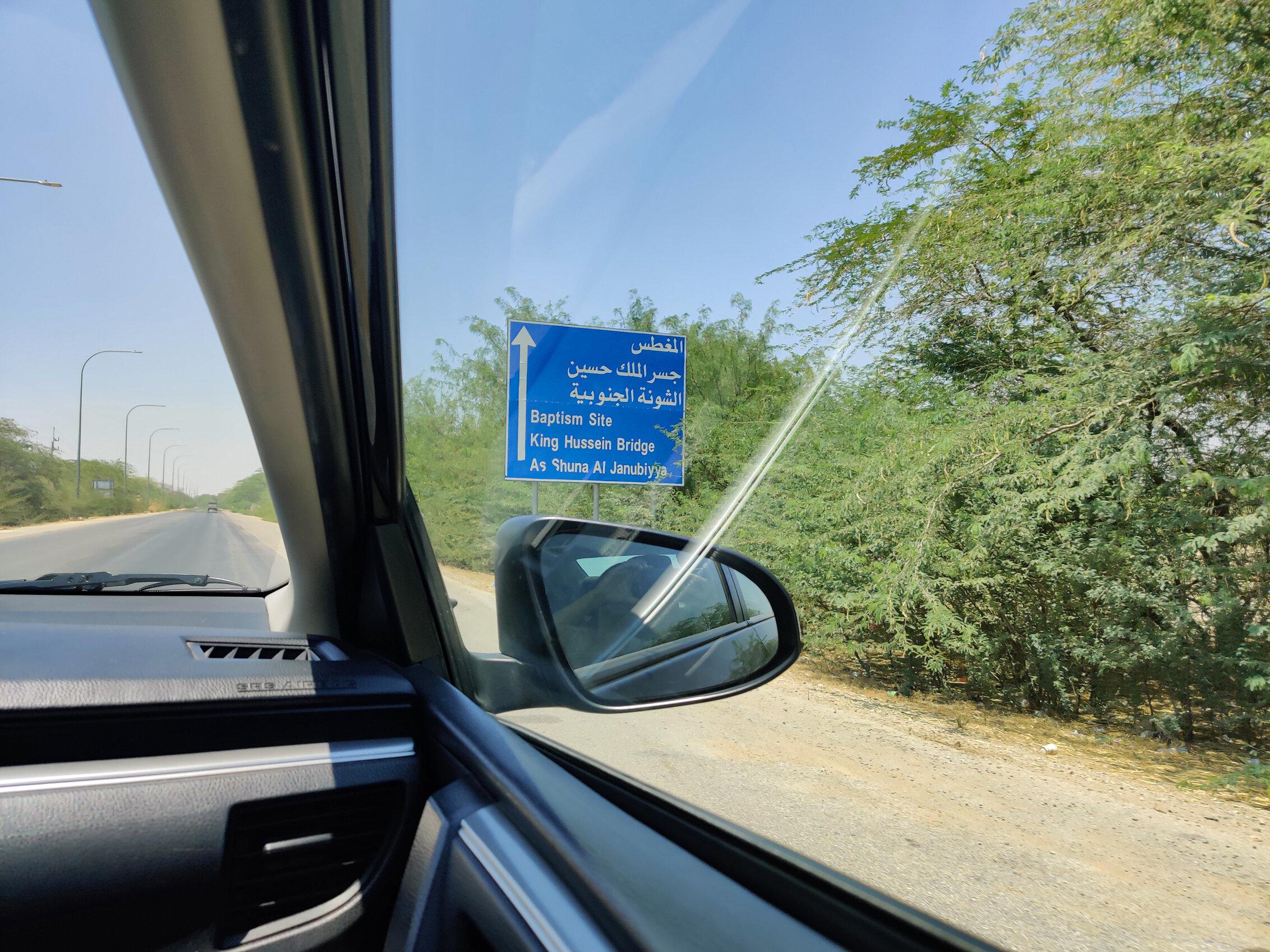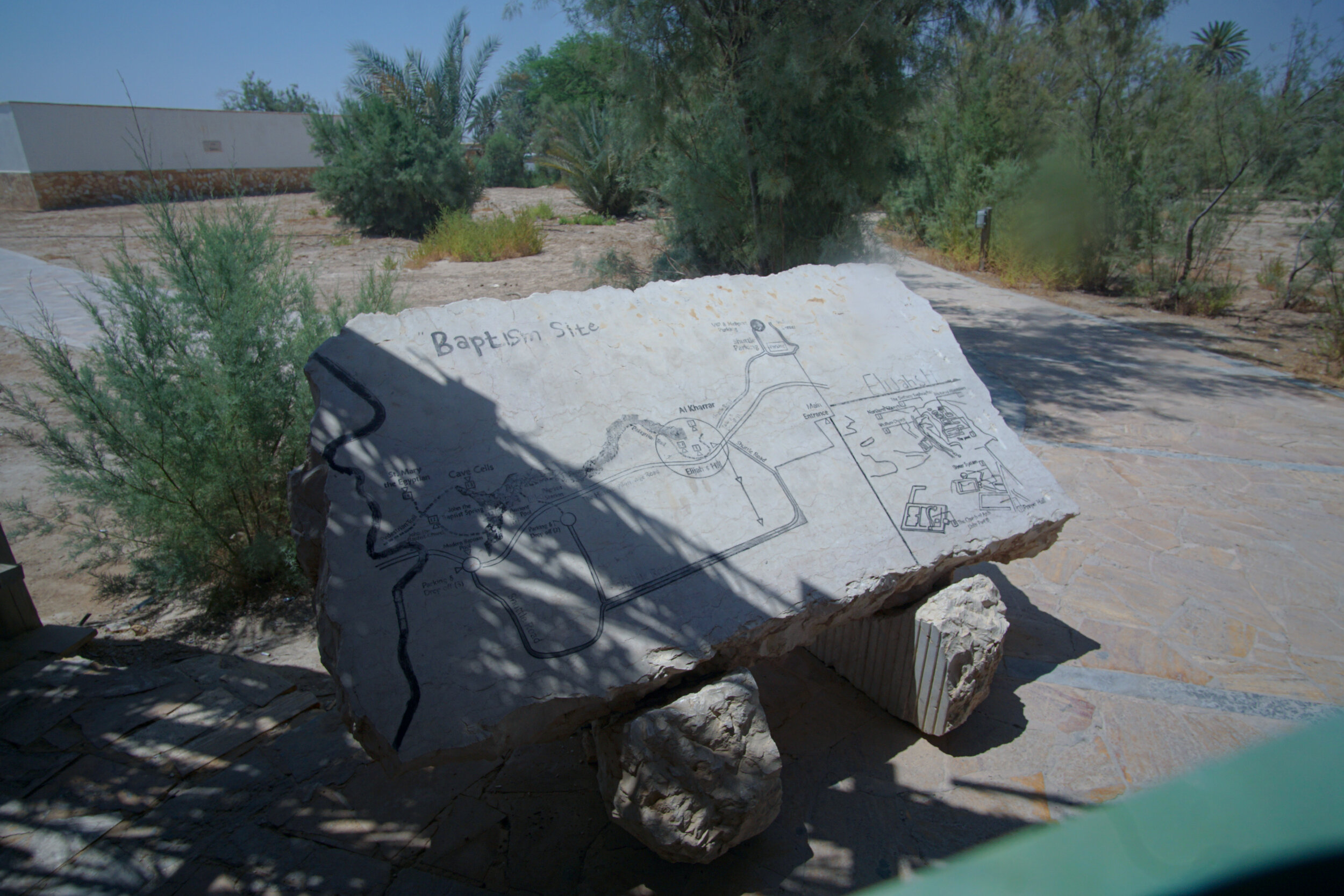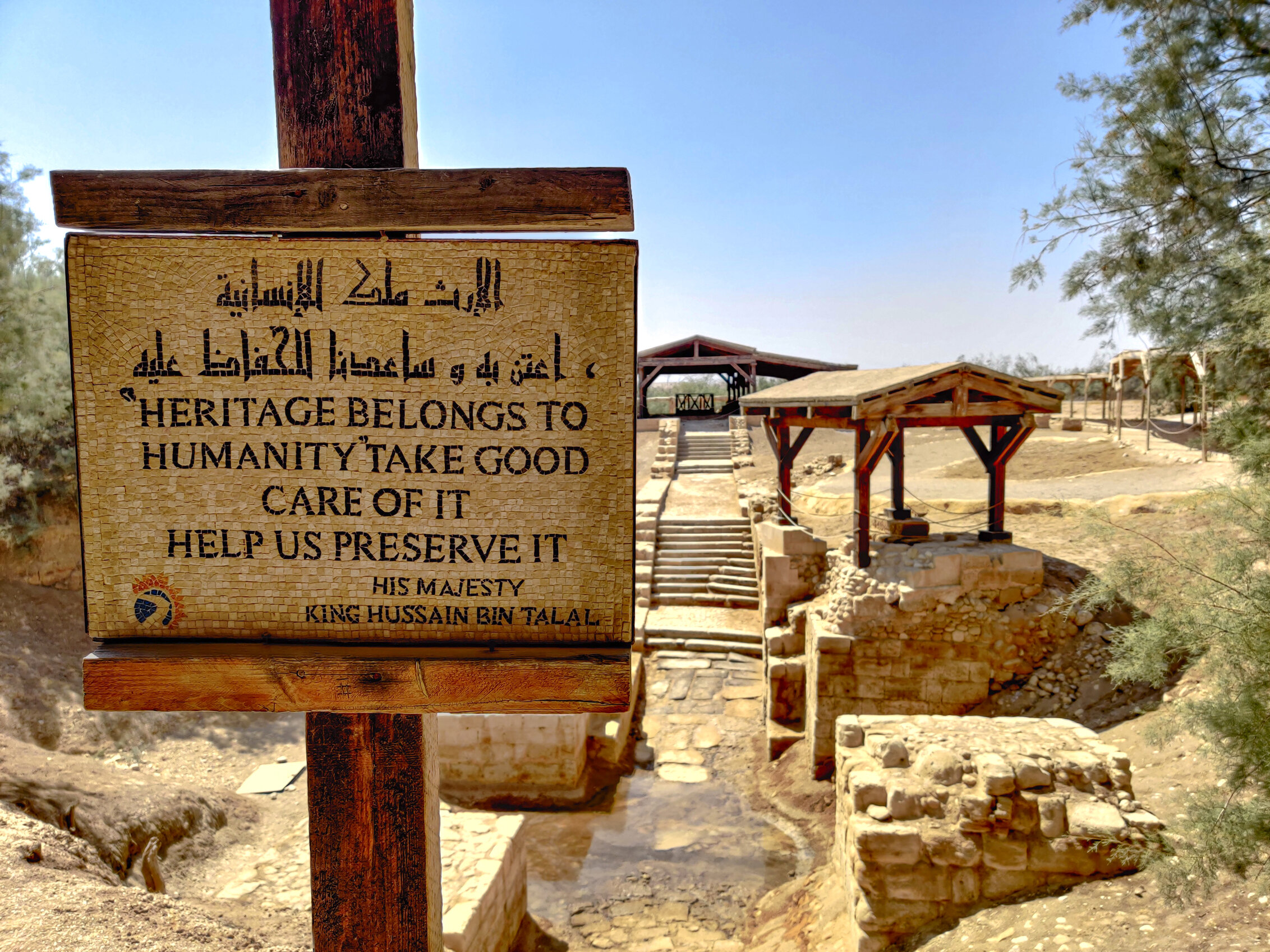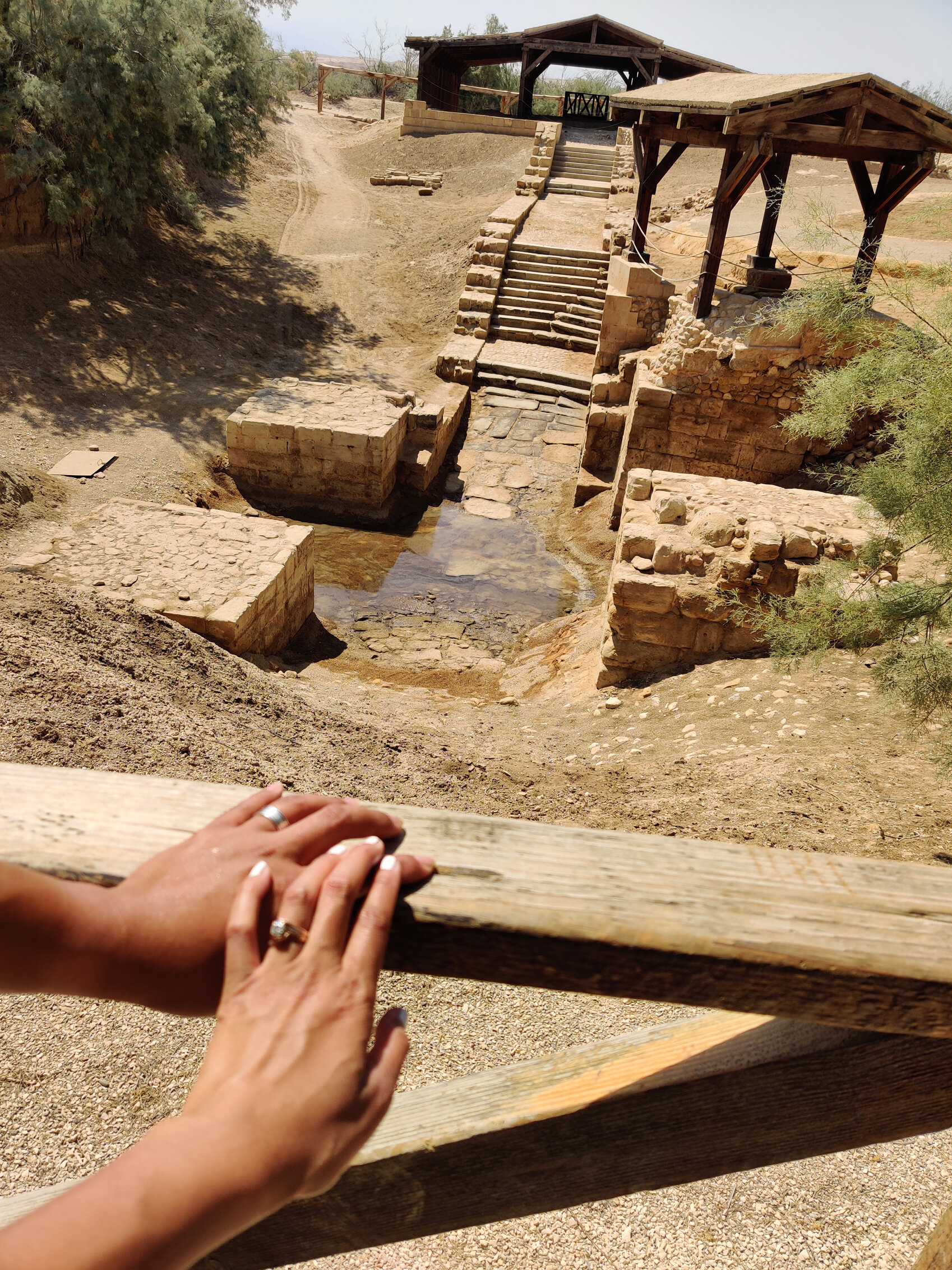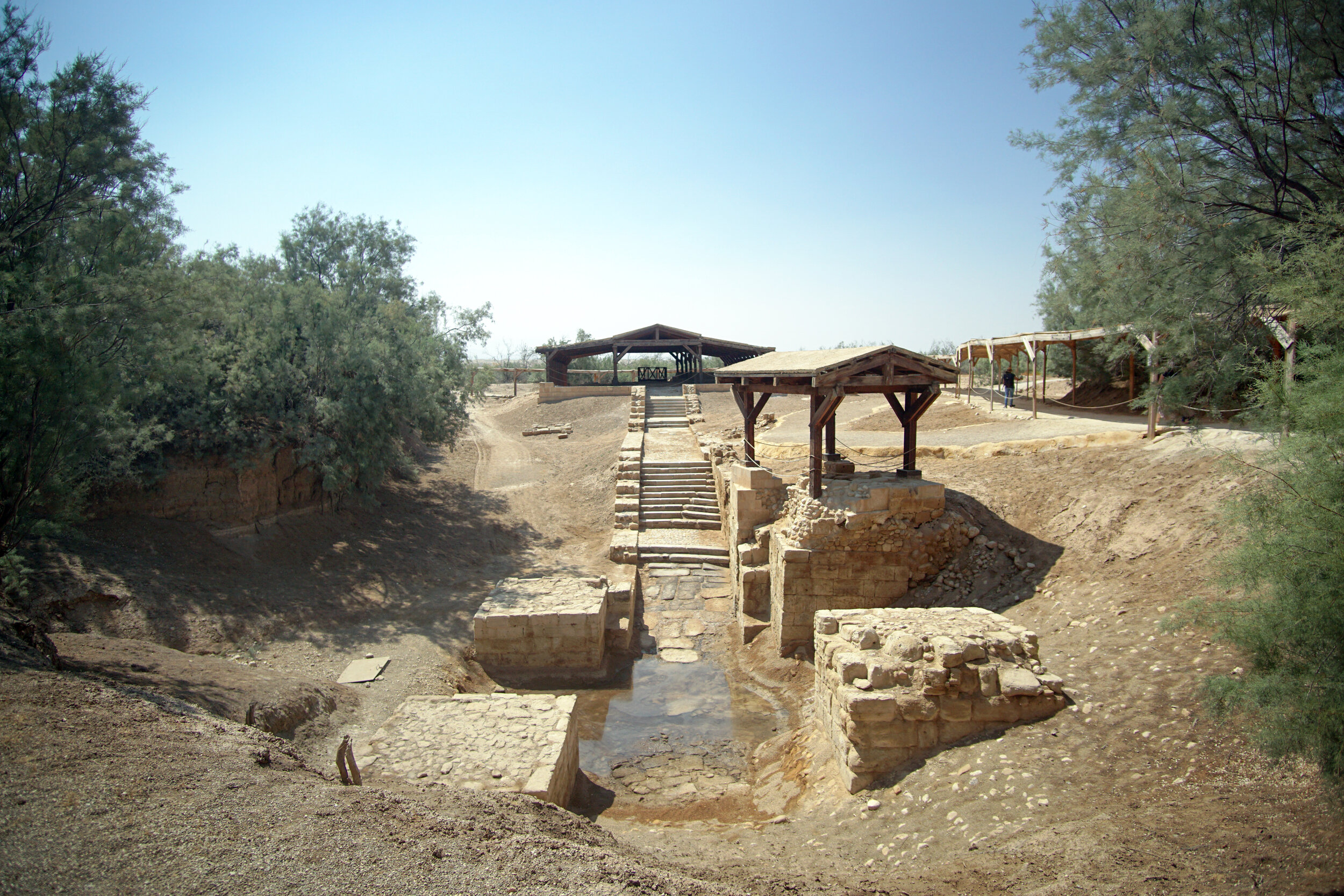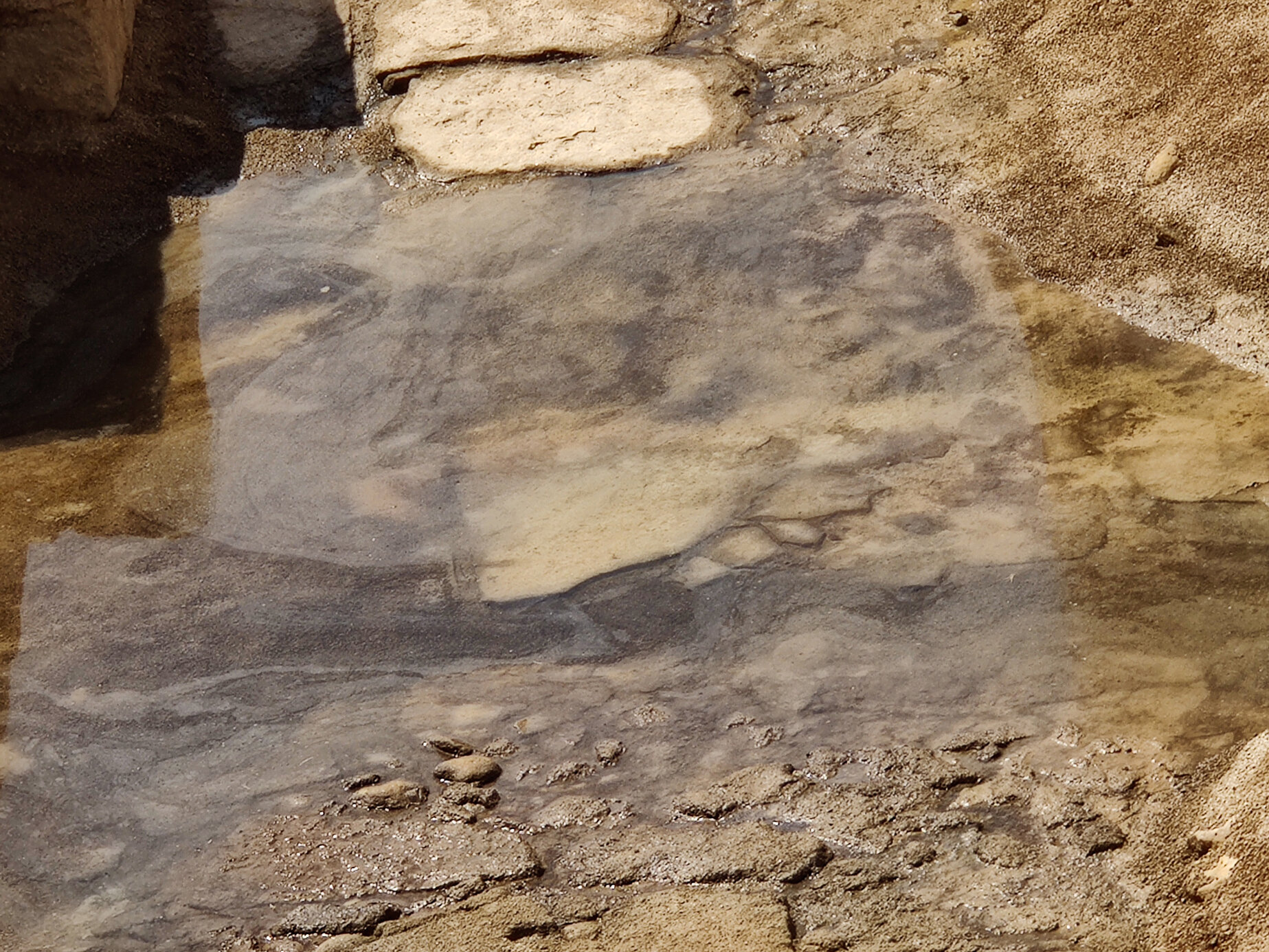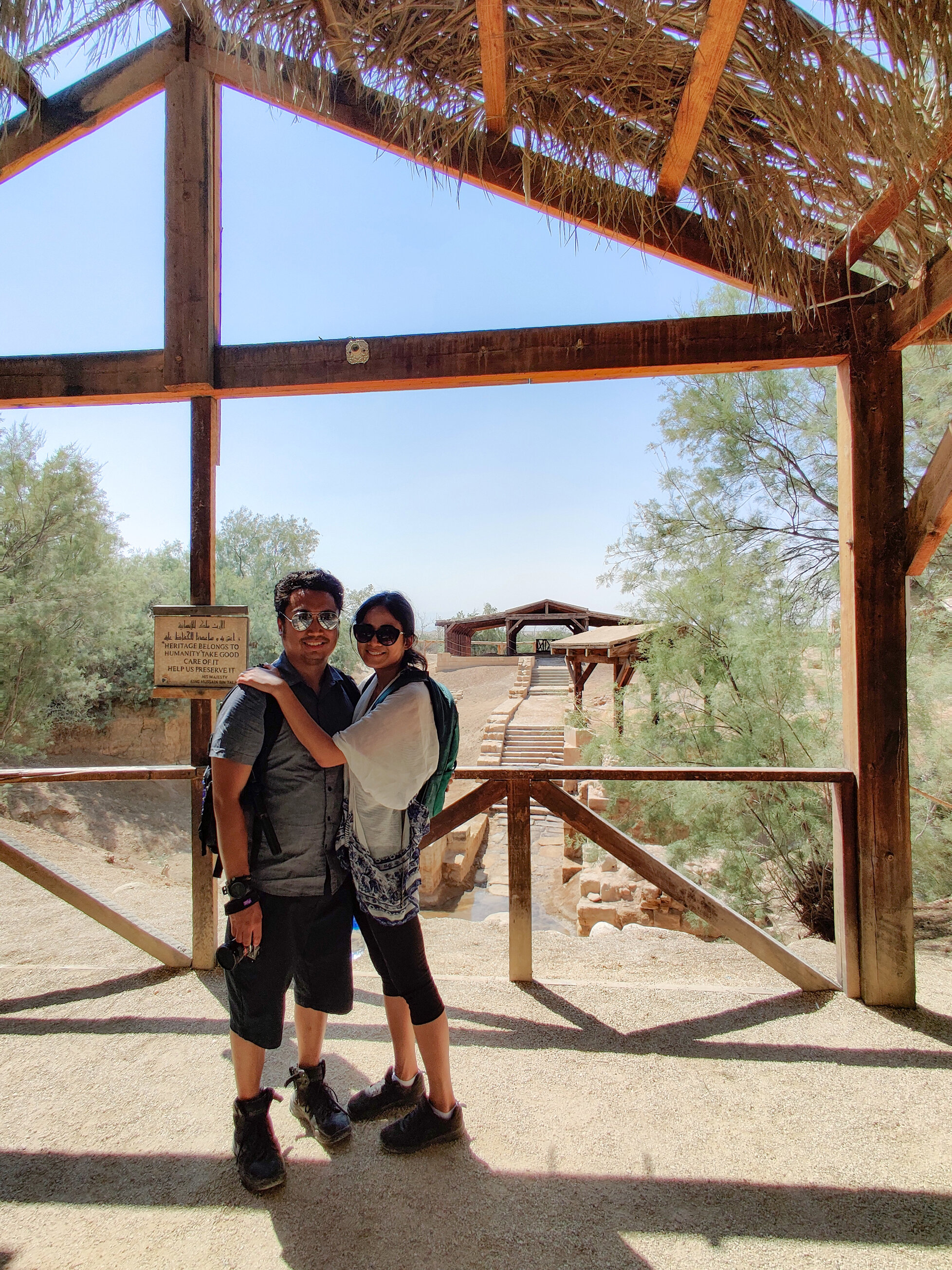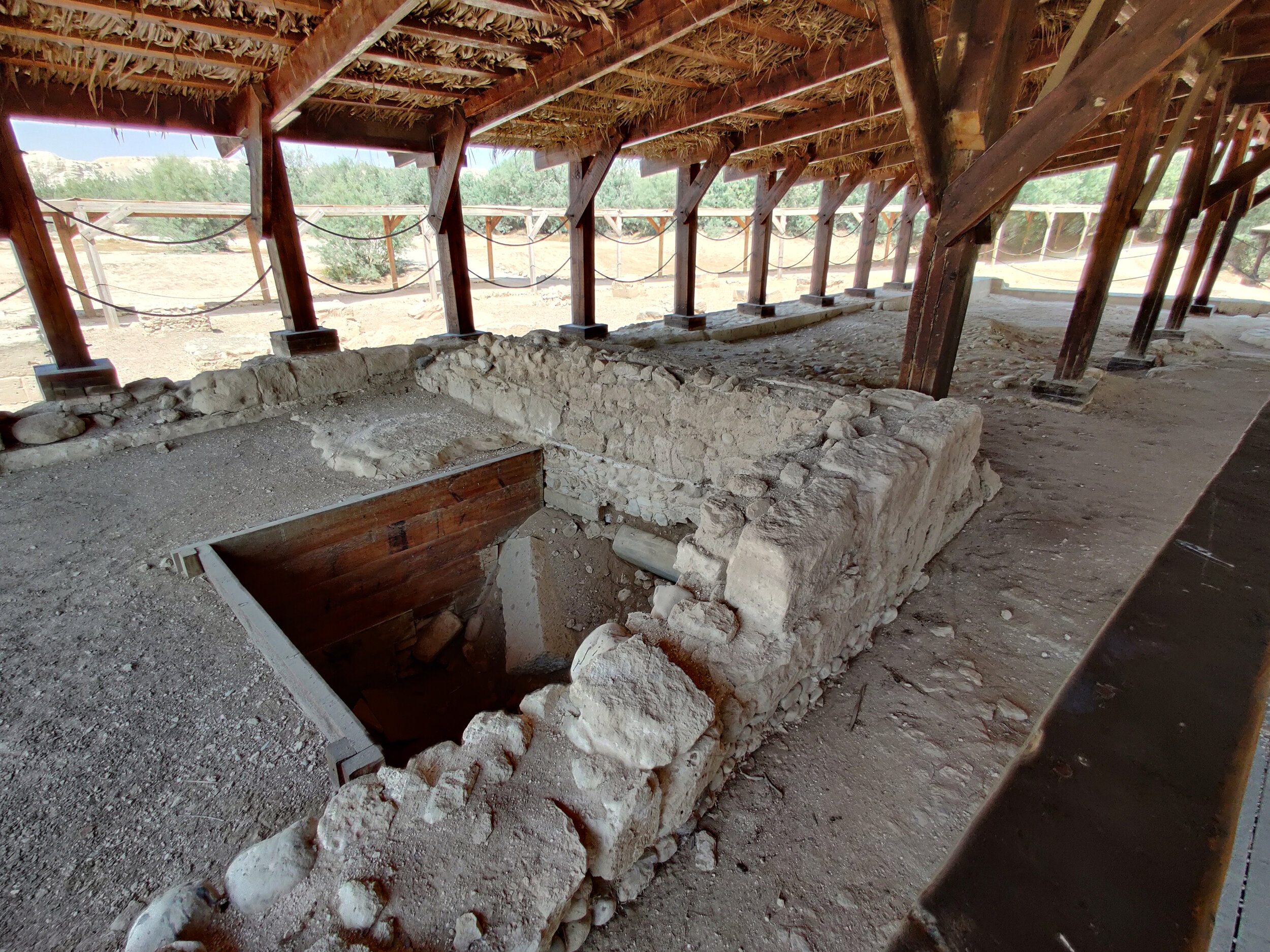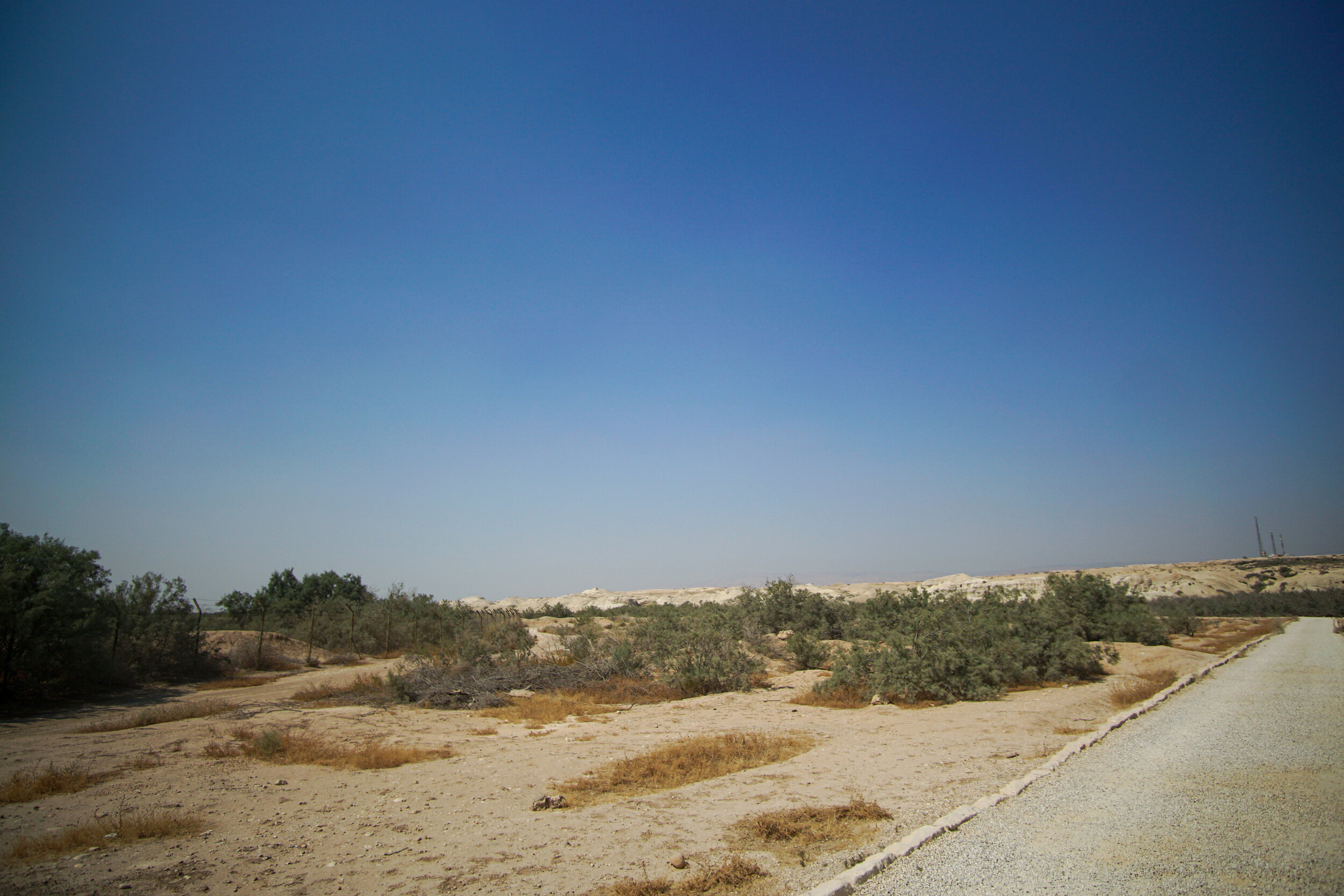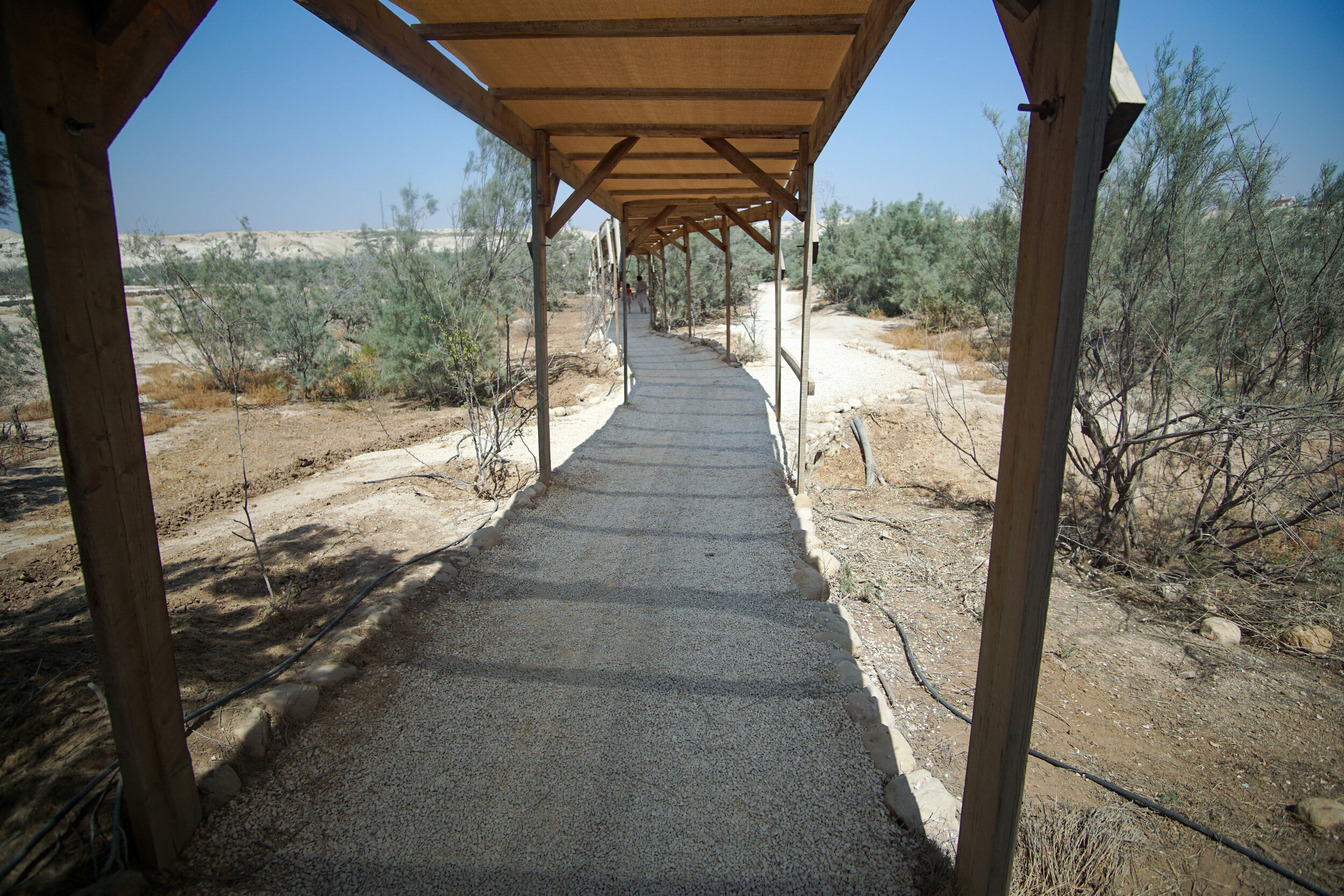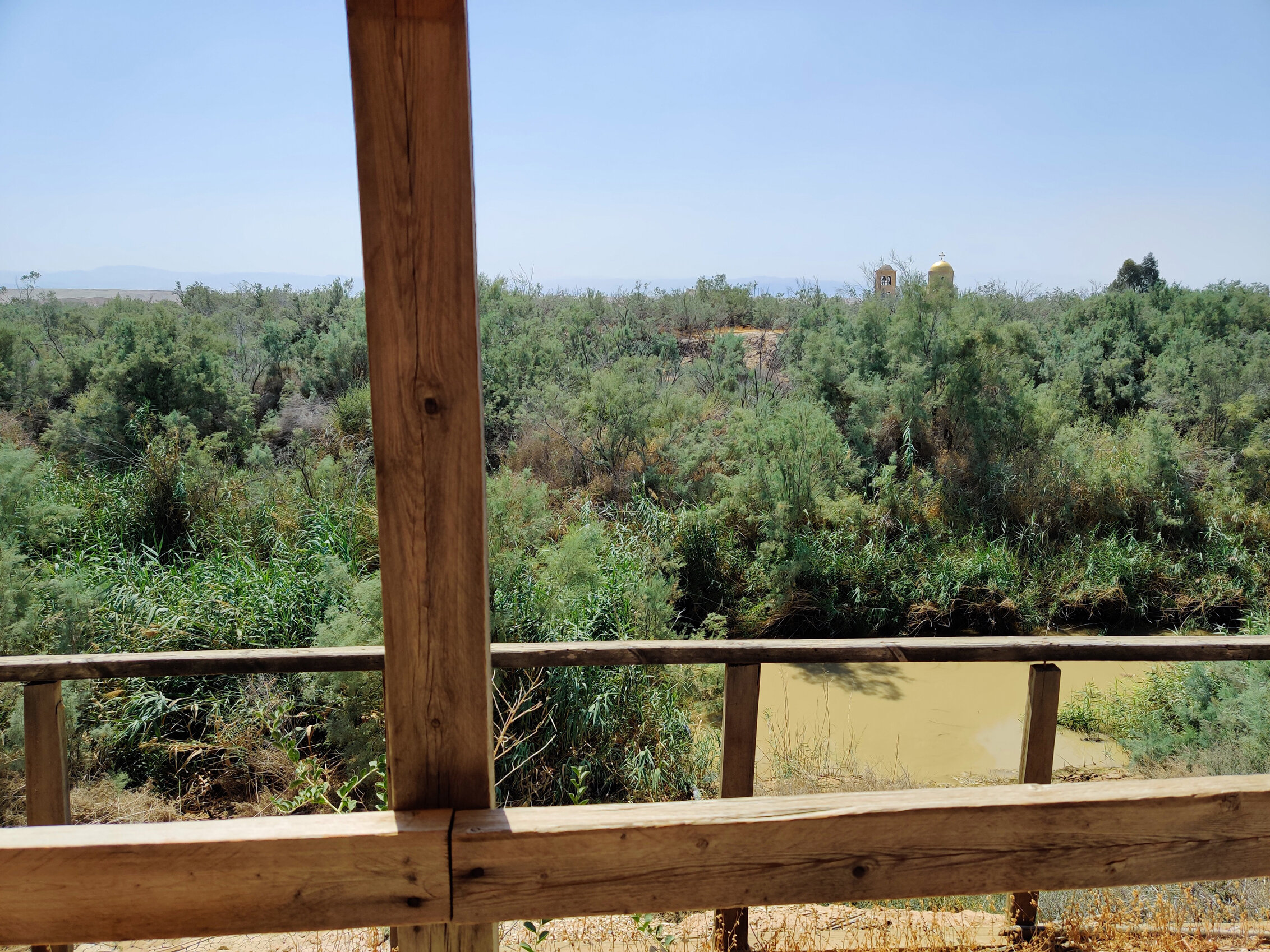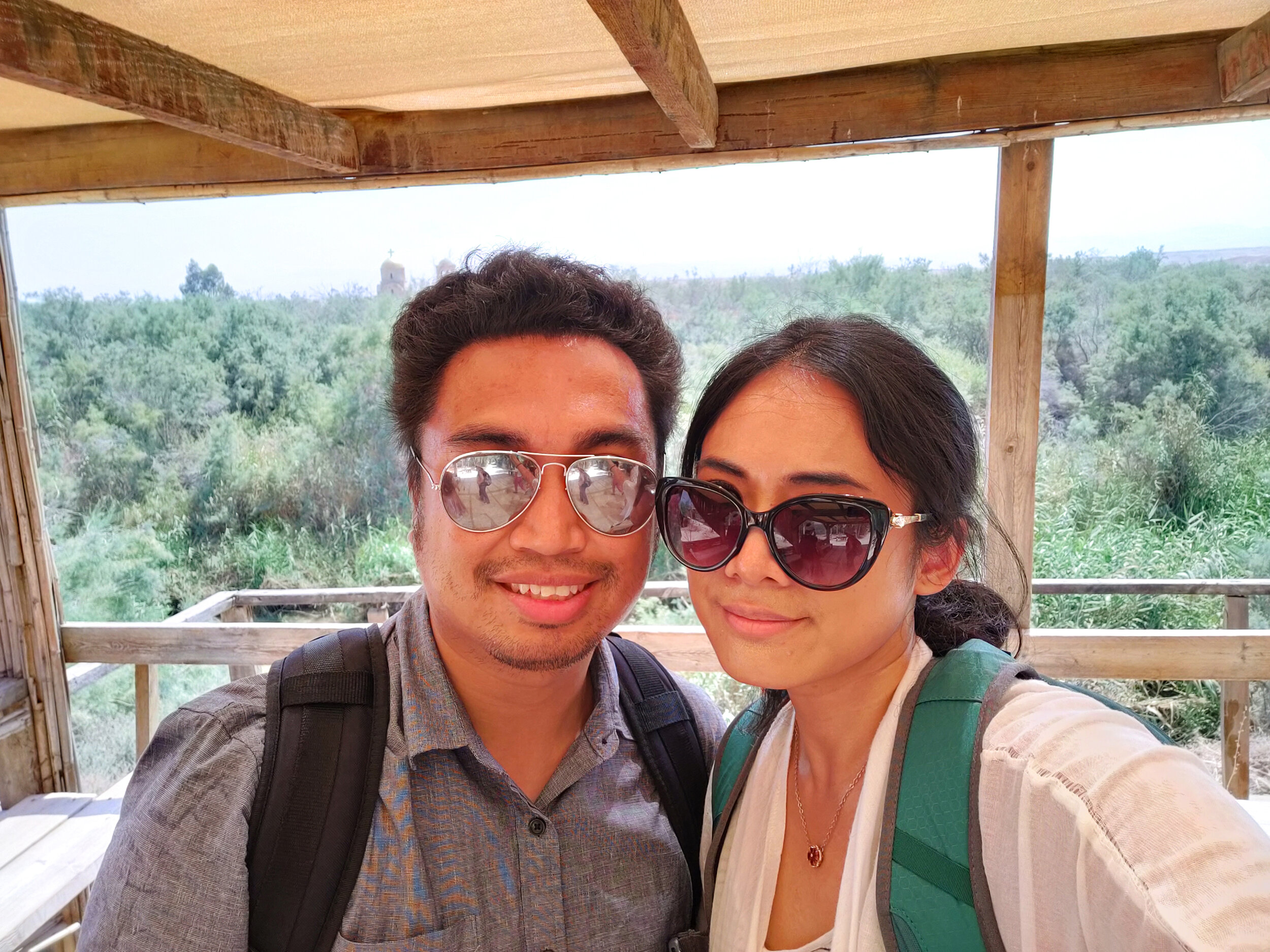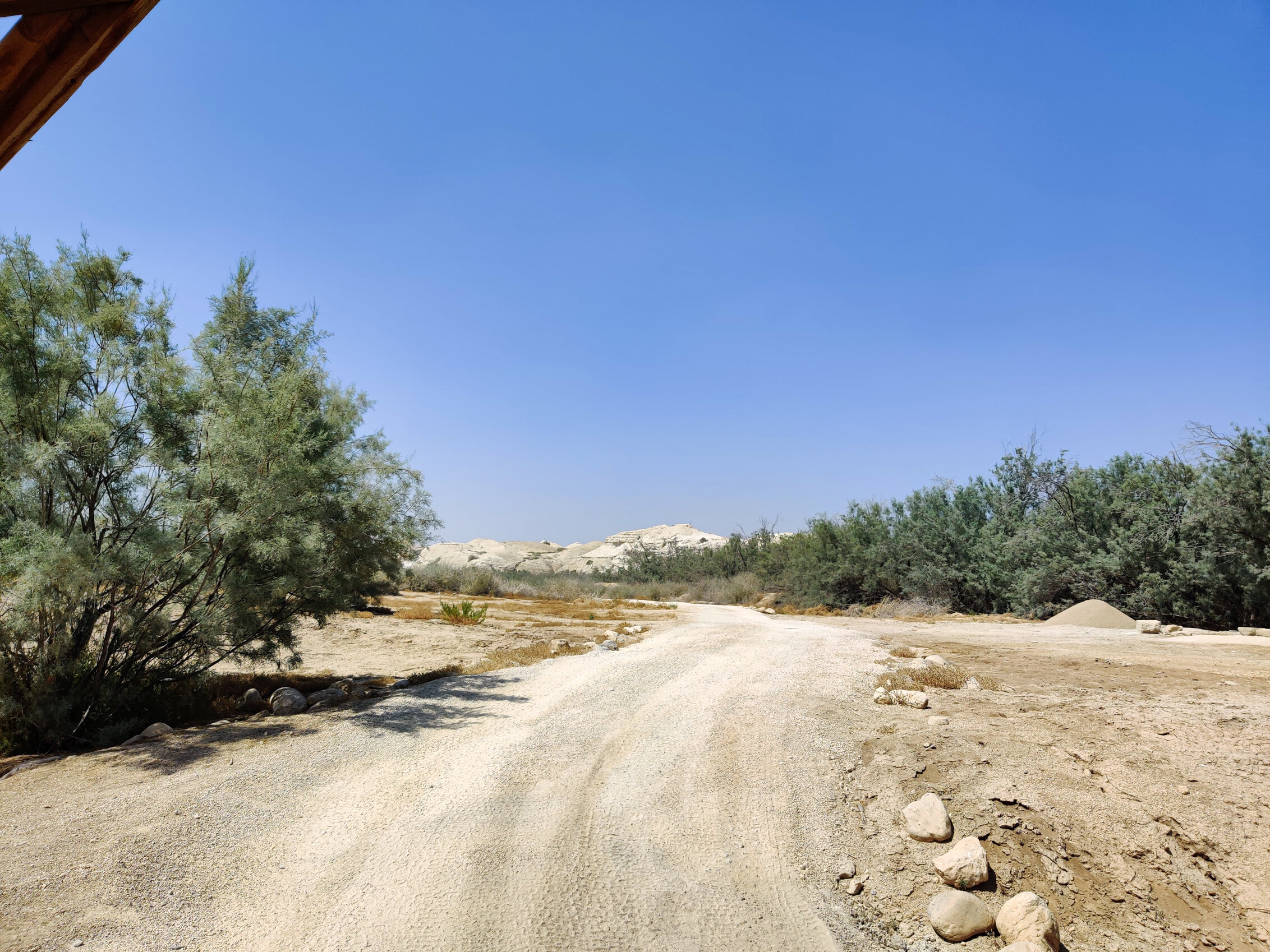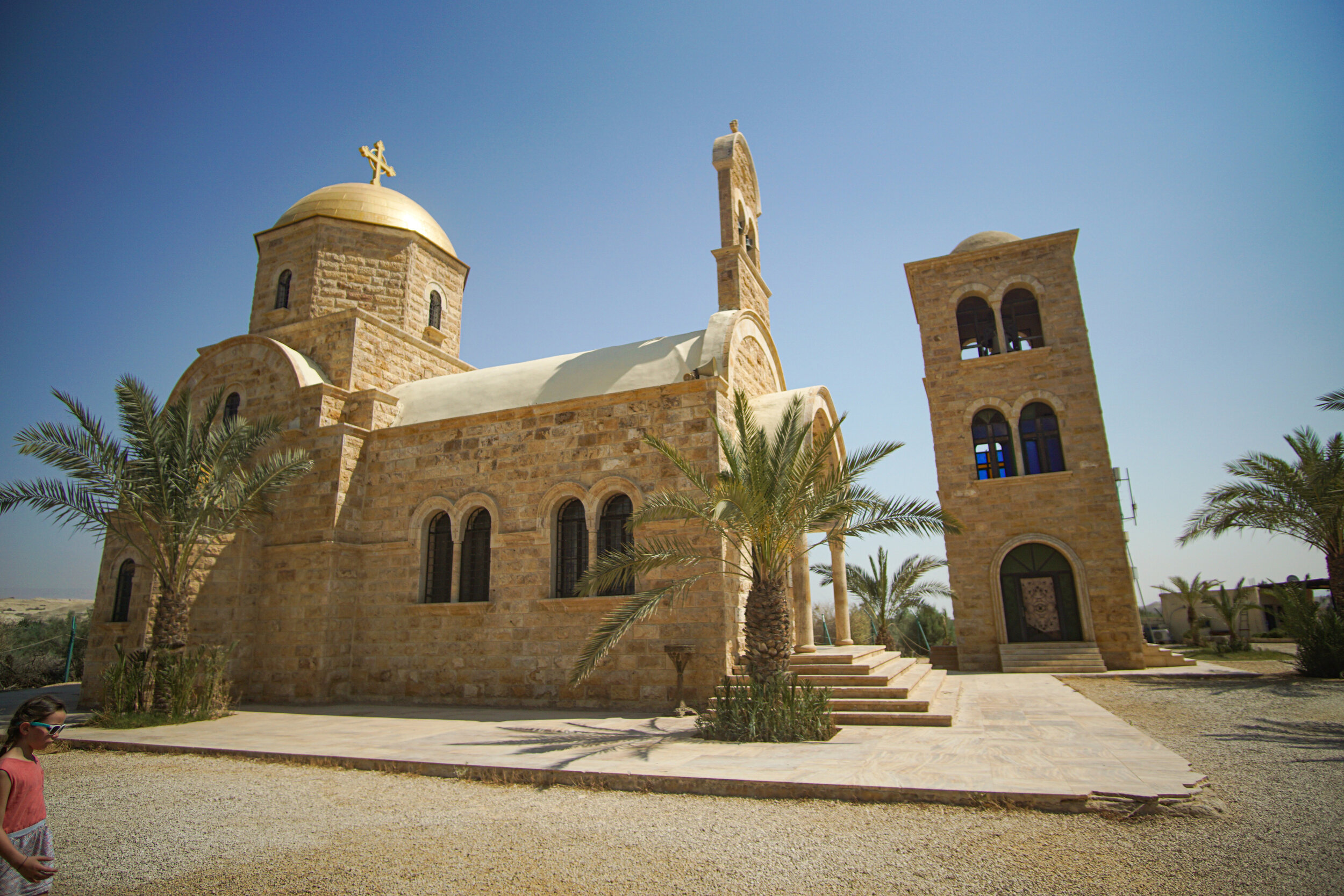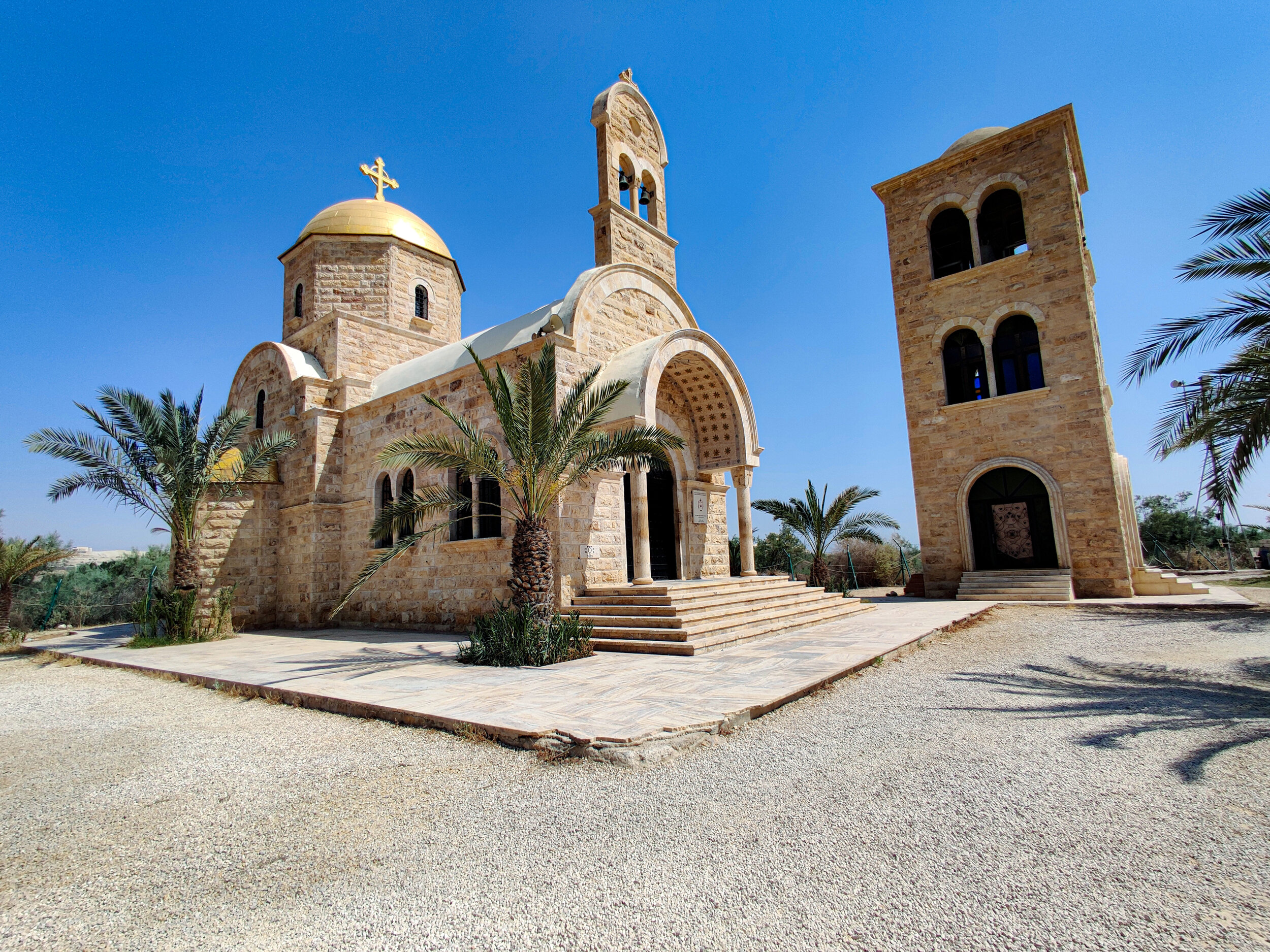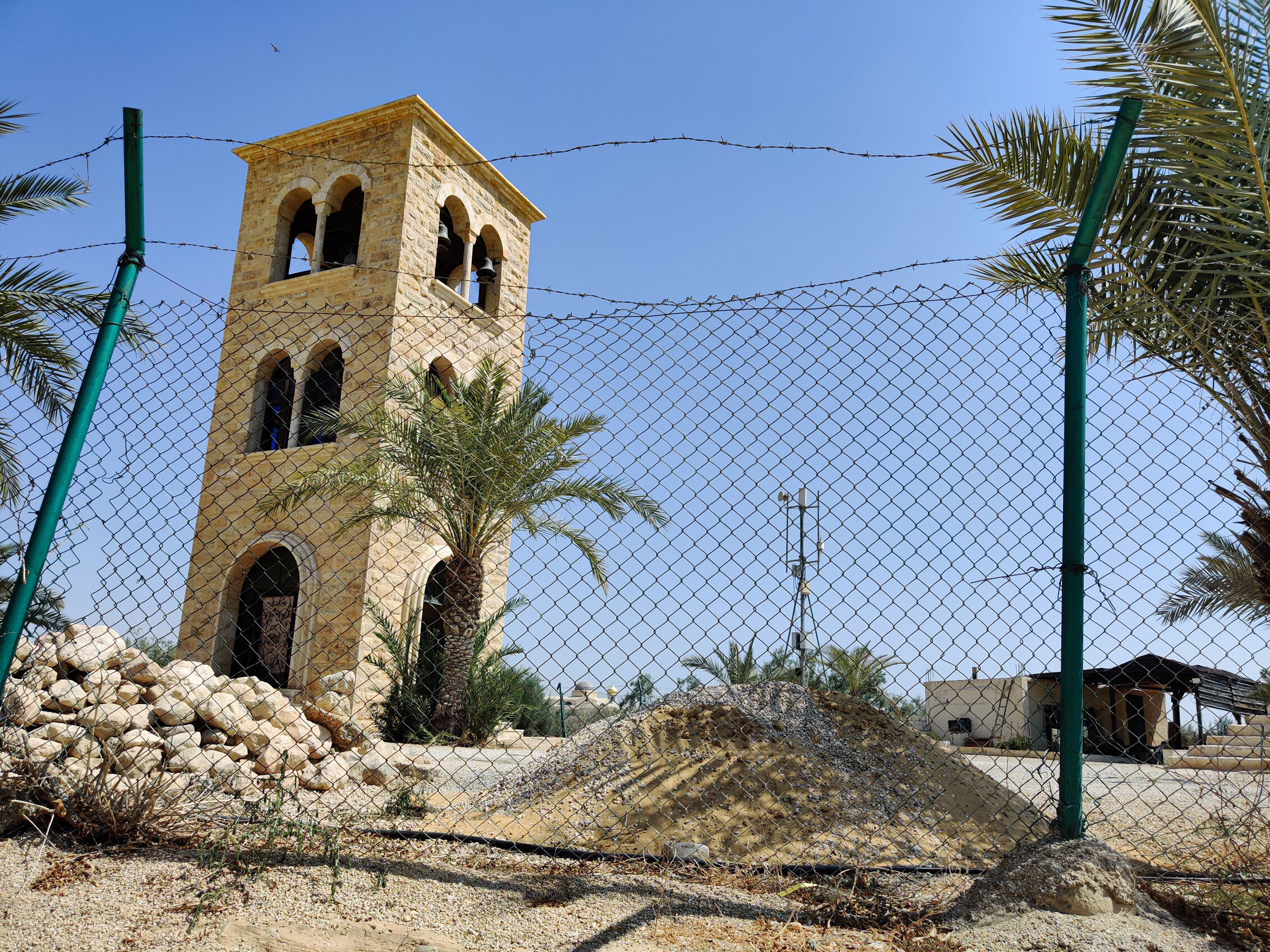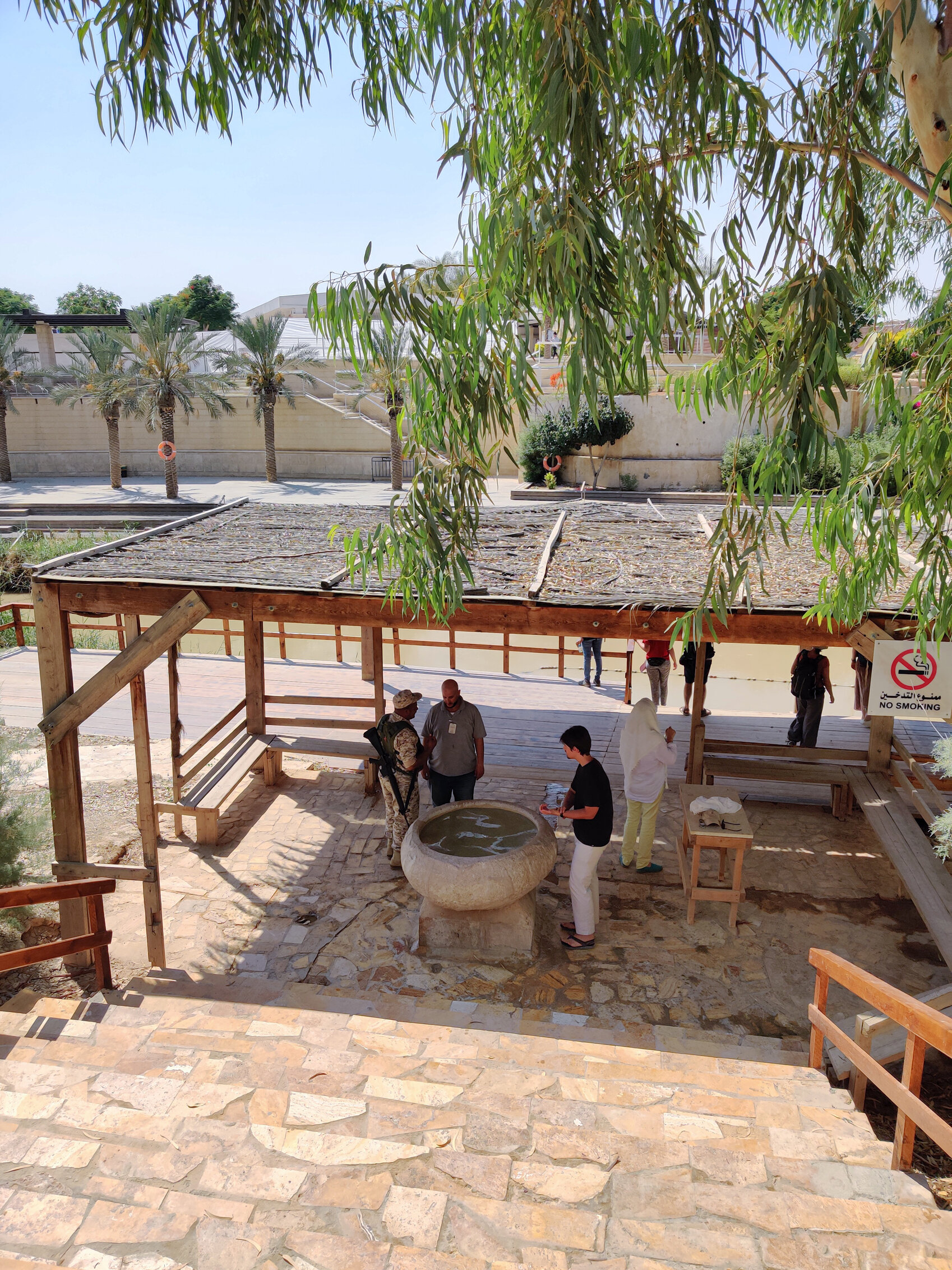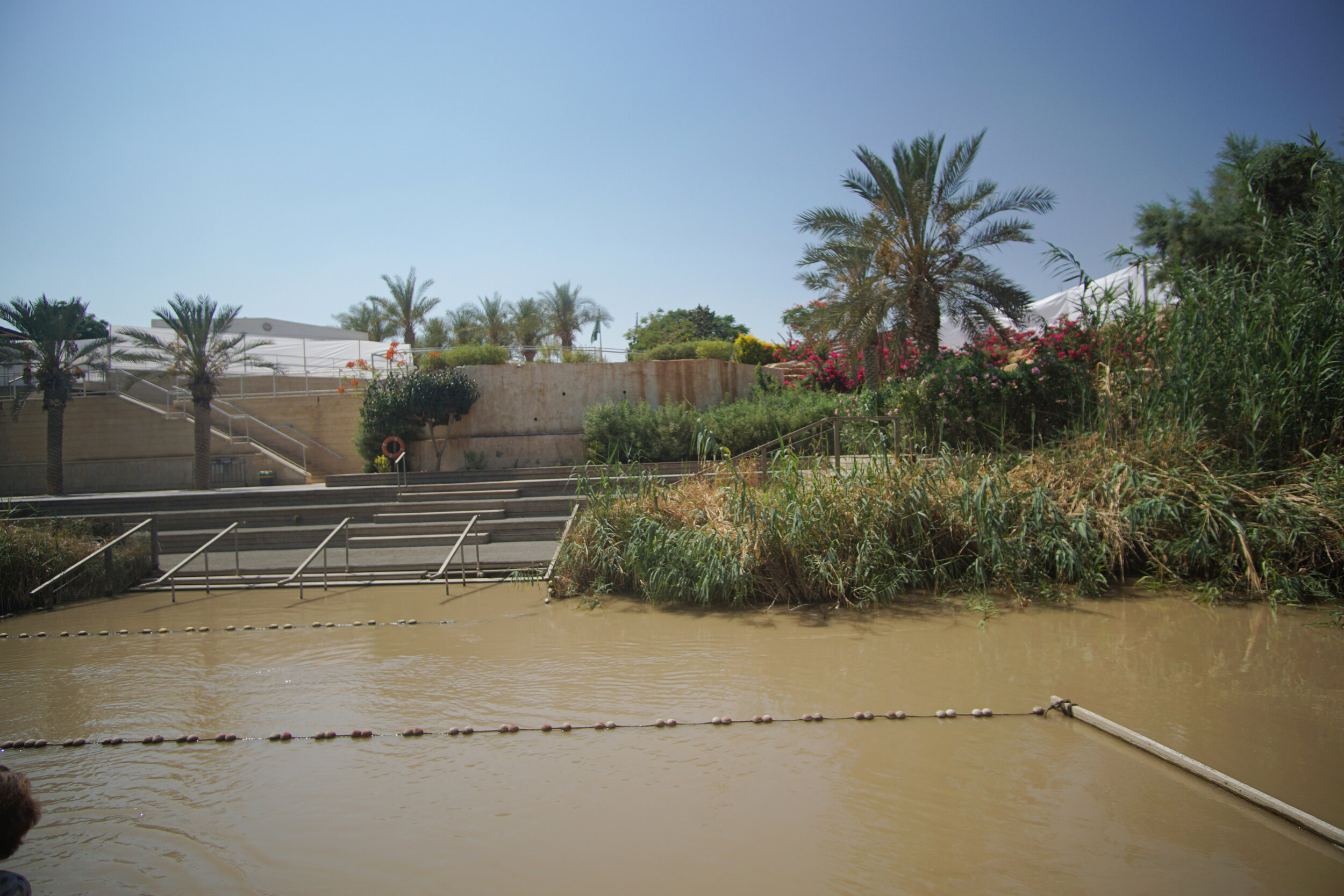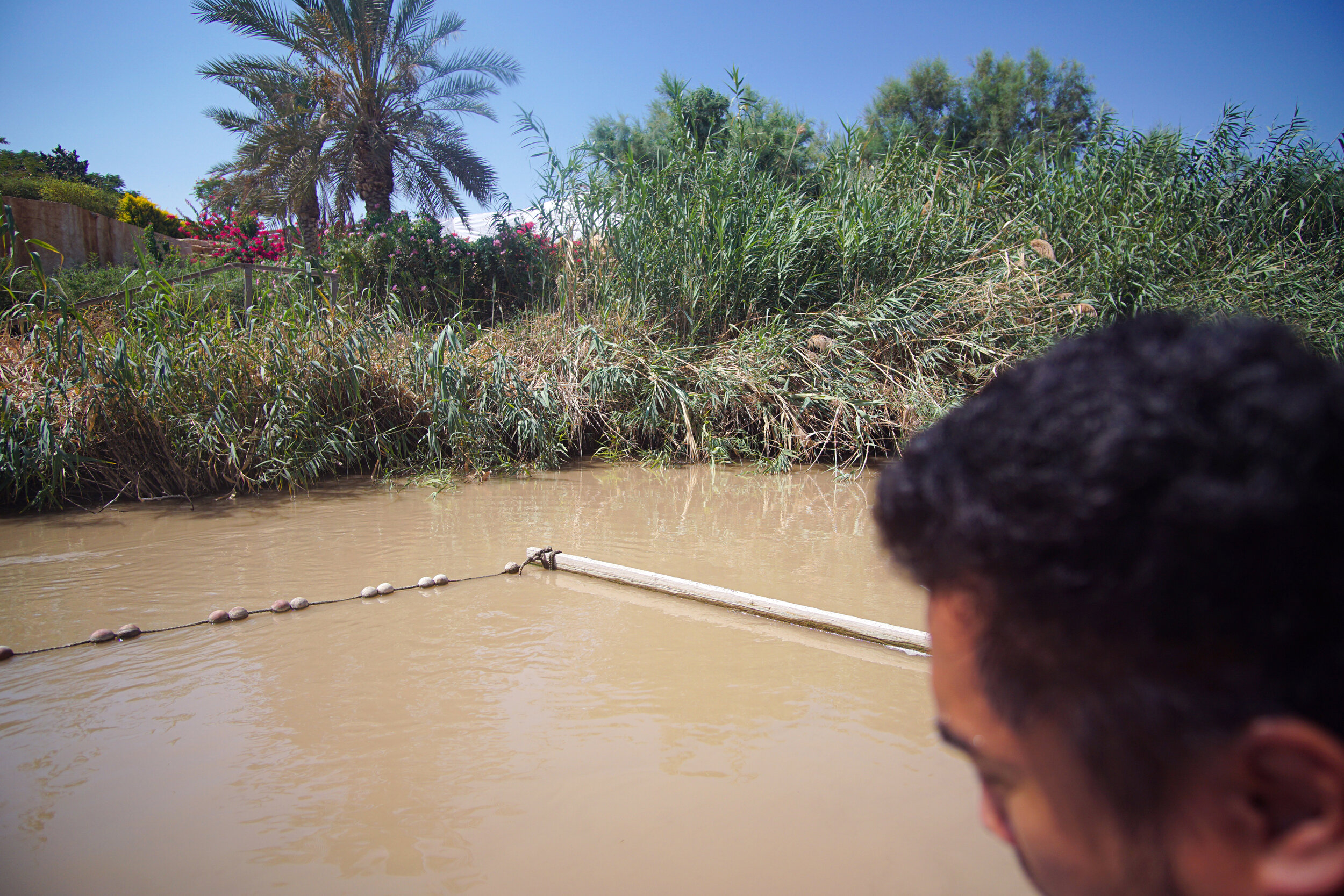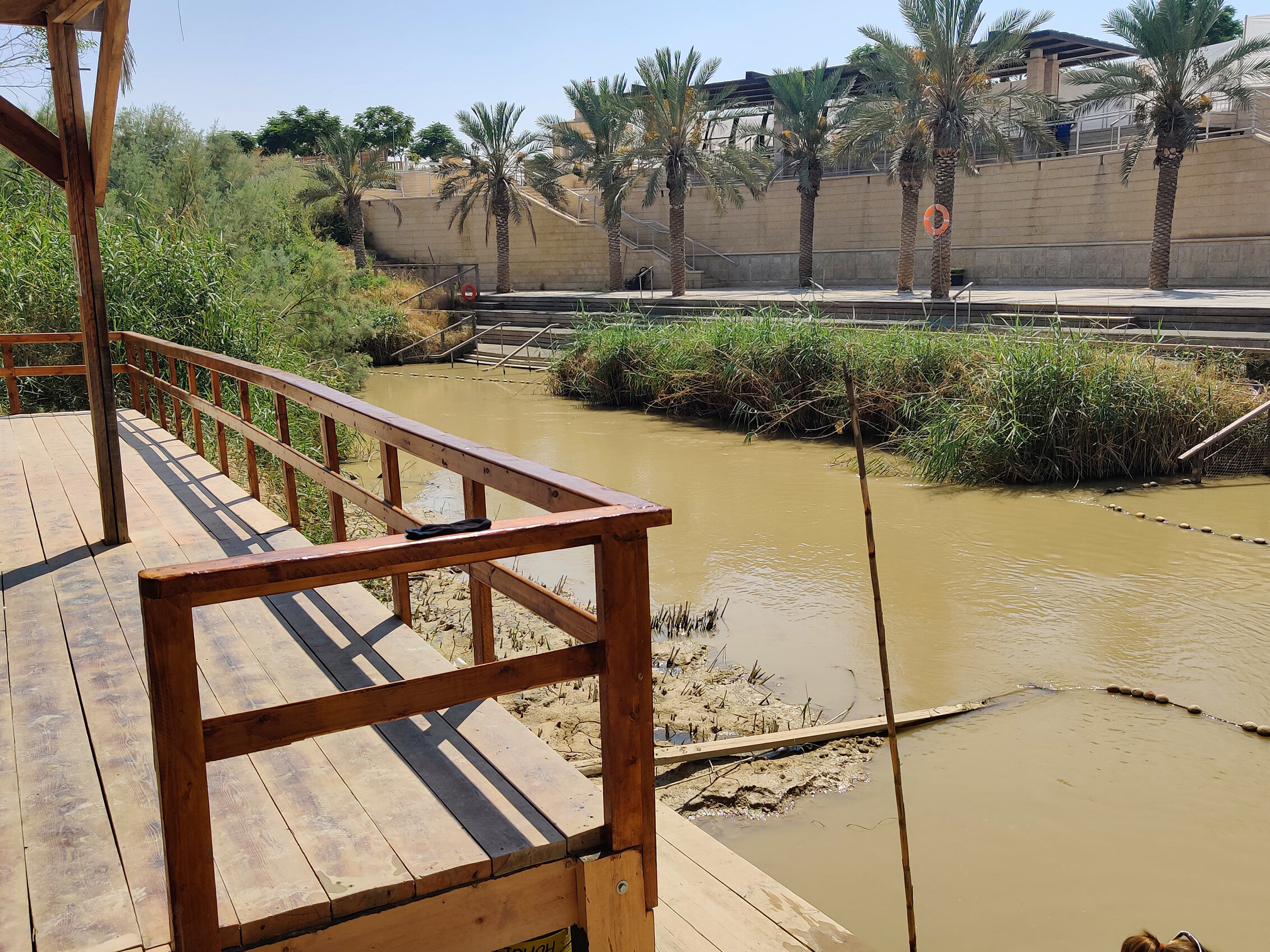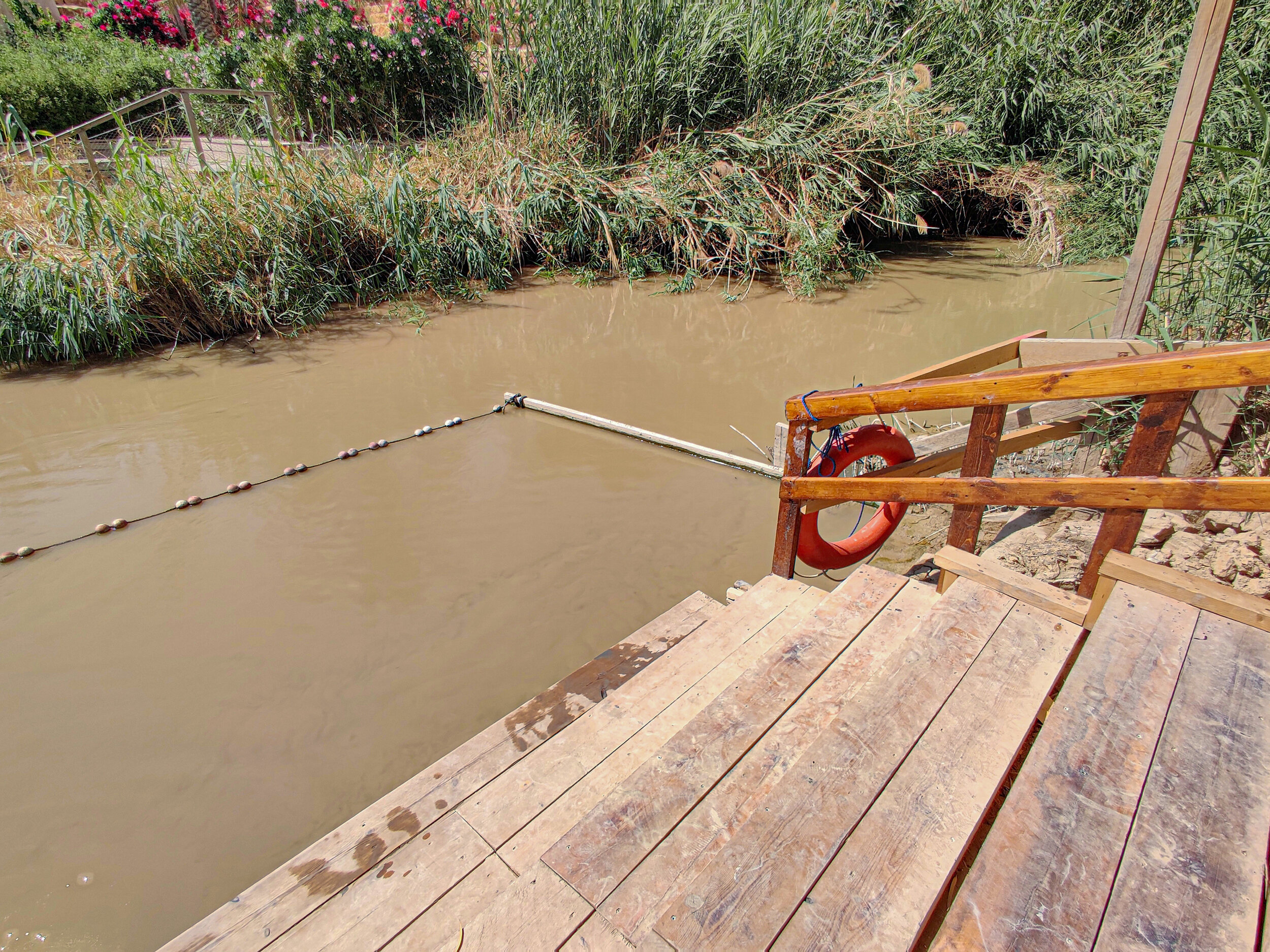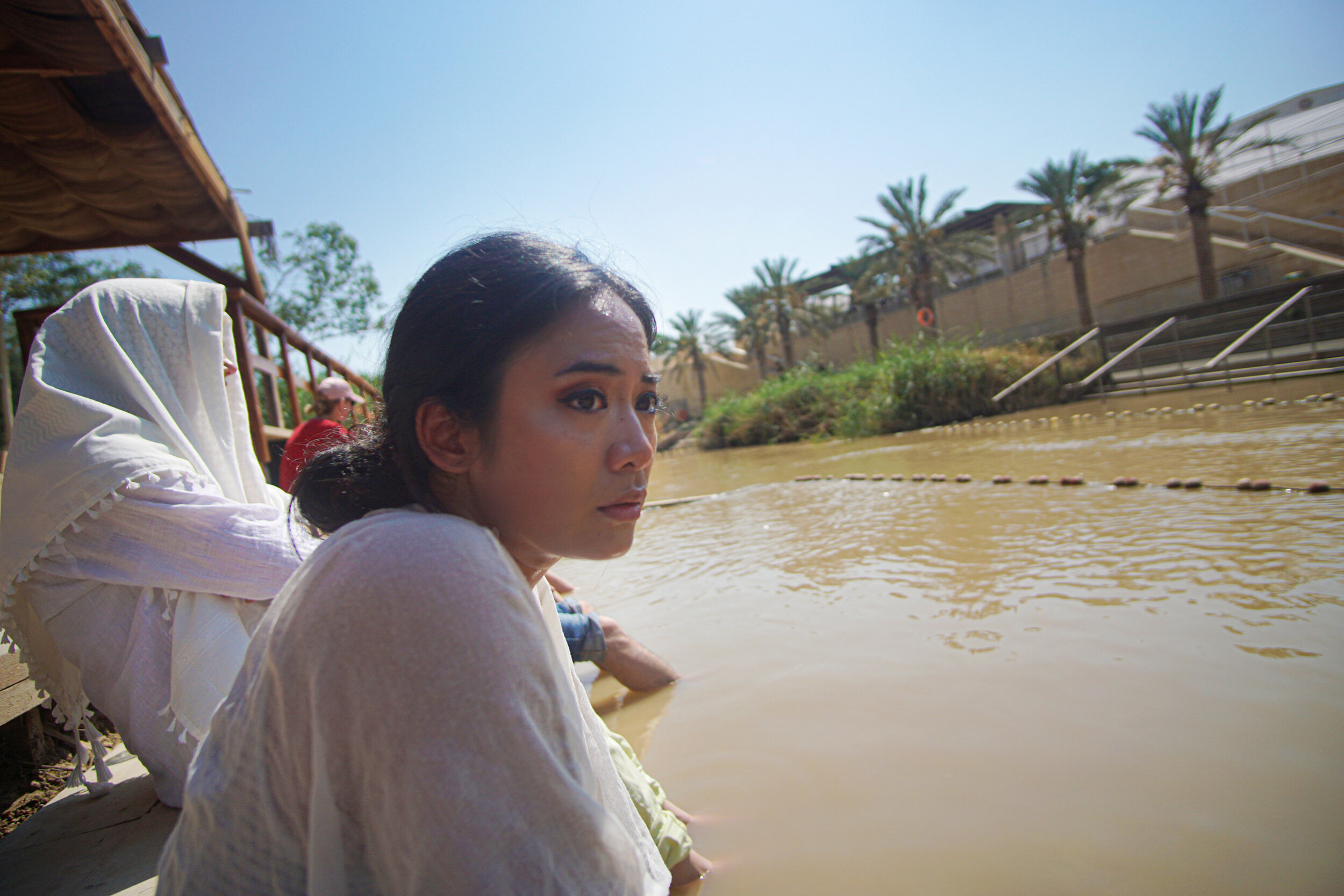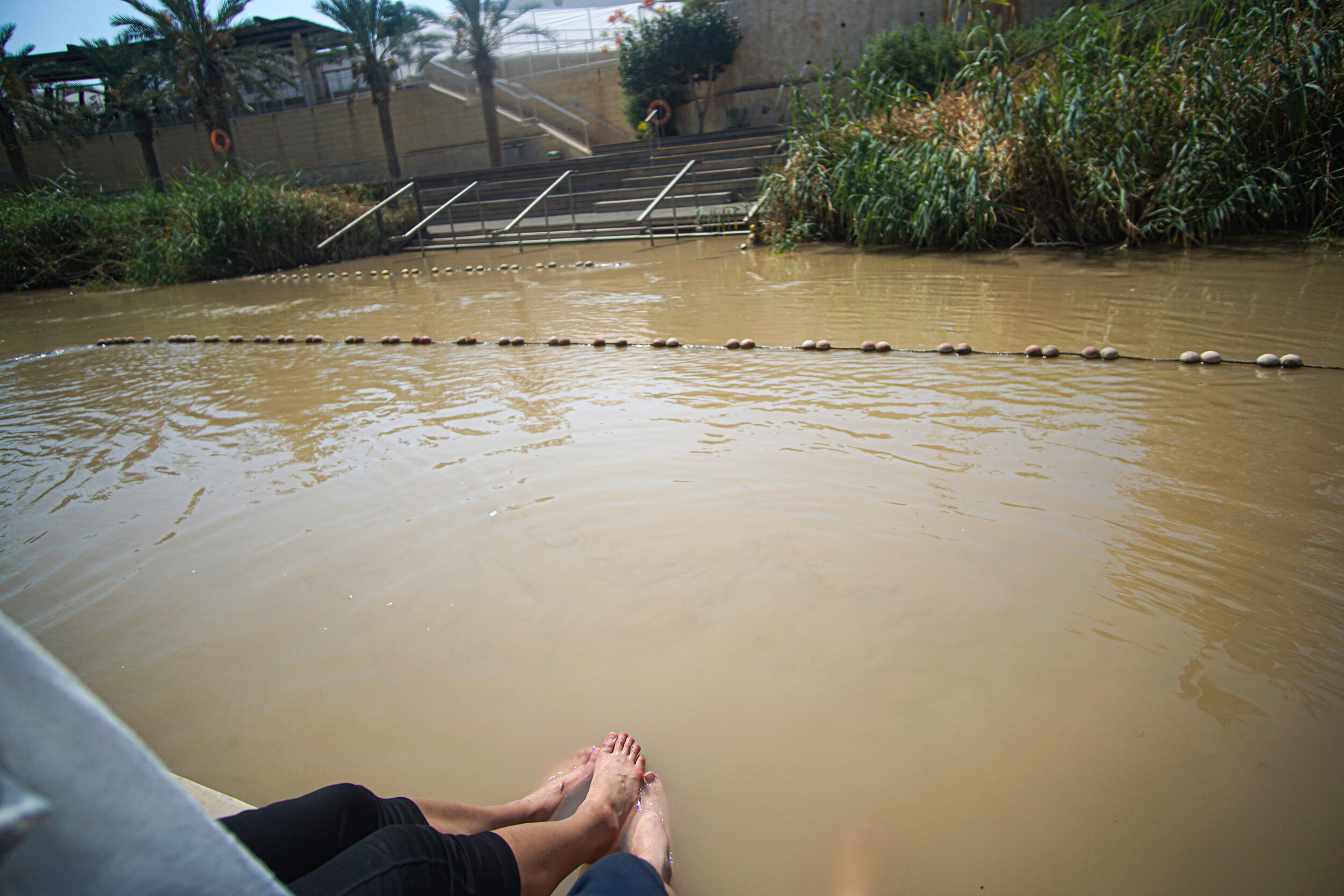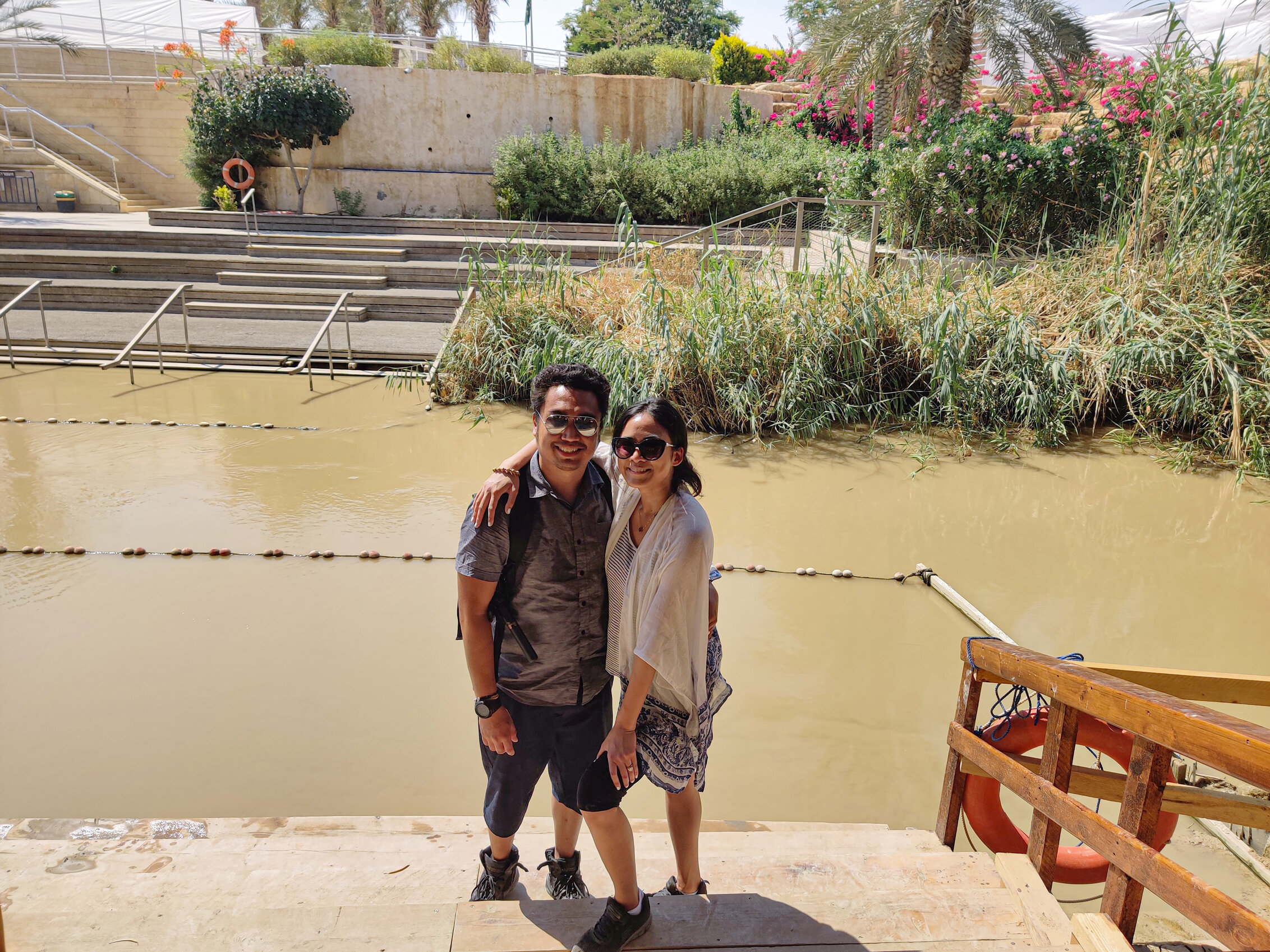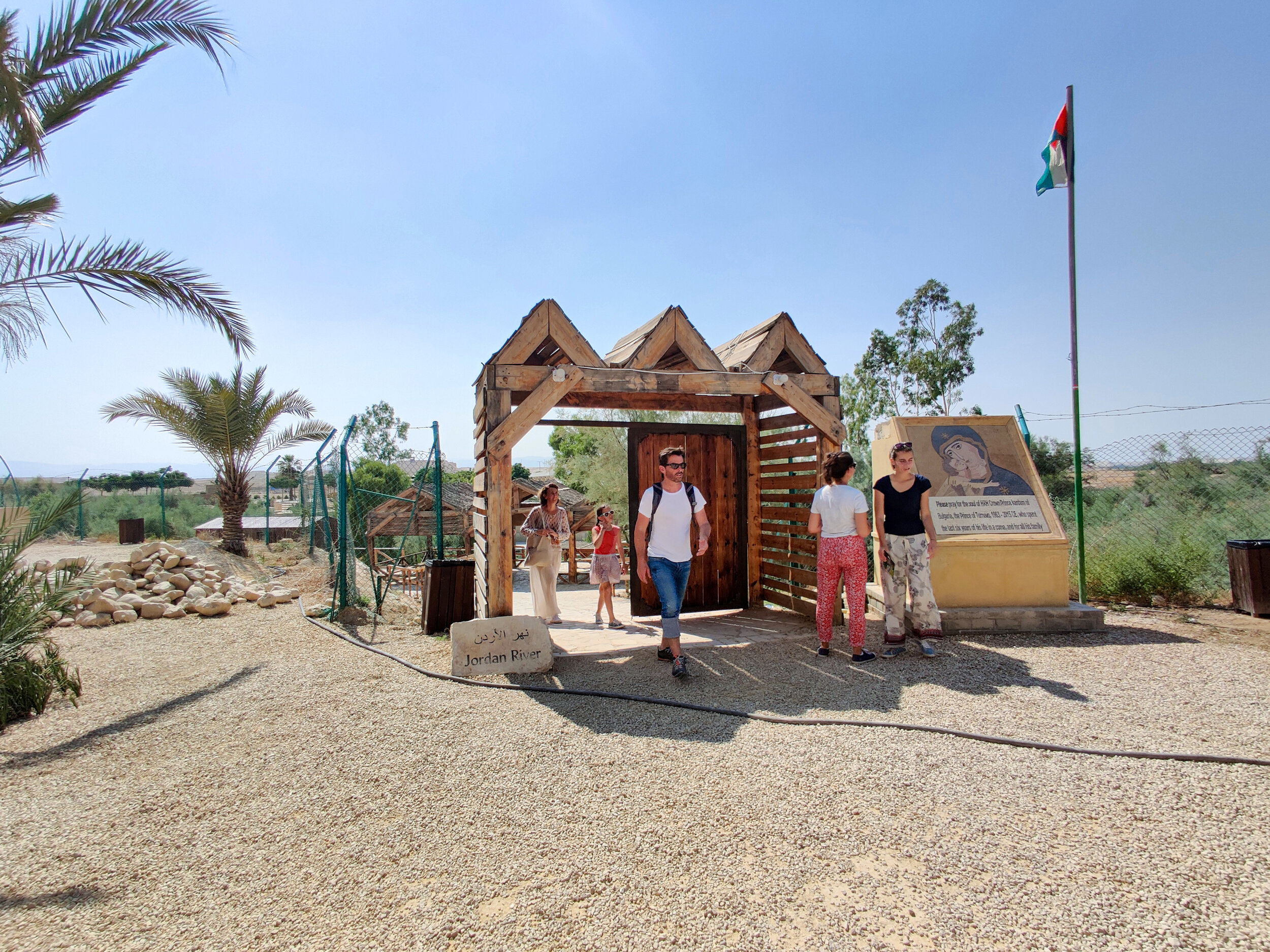TOURING MADABA: Dead Sea, Mount Nebo & Jordan River
Dead Sea, East Bank. Jordan.
Dear Foodie Fam,
Jordan has more to offer than Petra! Don’t forget about the Madaba area! In this ancient town, there’s 3 places we just had to visit!
In this entry:
Dead Sea
Mount Nebo - Syagha
Jordan River - Jesus Baptism Site
3 PLACES TO VISIT IN MADABA
Floating on the Dead Sea. Marriott Dead Sea Resort. Deets On Eats.
1
The Dead Sea
BASICS:
Here’s some interesting things to note before heading to the Dead Sea (Jordan side):
It’s landlocked af (it’s a lake - not a sea).
The Dead Sea has the lowest land elevation on Earth (1414.04 feet below sea level).
Though this area was once known as a lush paradise of papyrus and palm tress, the Dead Sea itself has so much salt in it that nothing we know as life can live in it.
Also known as the “Sea of Sodom,” “Sea of Asphalt”, “Stinking Sea.” and “Devil’s Sea.”
It’s known as the “Sea of Salt” with 10 times the amount of salt in the ocean (salinity level of up to 35%). At 300 feet below the surface, the water can no longer hold the salt and it builds up on the sea floor. If you took all the salt out of the Dead Sea and set it on land, National Oceanographic and Atmospheric Administration (NOAA) says the layer would be 500 feet high.
With at least 0.29 pounds of salt in every gallon, it’s the deepest hypersaline (salt-concentrated landlocked body of water) lake in the world. The most salty hypersaline lake is actually in Antartica (Don Juan Pond, 44% saline).
Its main tributary is the Jordan River. Since the 1960s, large-scale irrigation from the Jordan and low rainfall have effected the recession of the Dead Sea.
HISTORY:
In the Bible: It’s known as the “Sea of Lot.” The Hebrew Bible (the Old Testament) makes frequent notes about the Dead Sea as a boundary. It notes that people lived in caves by the Dead Sea before the Israelites came to Canaan. It was very much inhabited during the reign of King David (who was said to have hidden from King Saul at neighboring Ein Gedi). Sodom and Gomorra - cities from which Abraham’s nephew Lot fled destruction (Genesis 18) - were located near the southeastern shore of the Dead Sea. Prophet Ezekiel predicted that someday, the Dead Sea will have fresh water and fishermen will spread their nets along the shore.
To this day, the salt of the Dead Sea is prized in the world of skin treatment and holistic care. Aristotle, the Queen of Sheba, King Solomon, Cleopatra and King Herod all knew about the health benefits of the Dead Sea (the latter of which built the first “health resort” there).
TODAY:
The Dead Sea is a simple, pretty drive from Amman or Madaba.
From the Jordan (Eastern) side of the Dead Sea, one can see the West Bank and Jerusalem.
The minerals in the water, the absence of much allergens and solar radiation, and the higher atmospheric pressure have made this area an ideal place to study health. Because it is at such a low point, UV rays are low here.
TIPS:
Major Key Bucketlist TO-DO: Float on the Dead Sea. The salinity level causes extreme bouyancy. Float facing upward.
OTHER Major Key Bucketlist TO-DO: Enjoy a mud treatment and the healthy skin benefits of the Dead Sea. At resorts, you can find pits and deposits near the shore filled with mud ready to smear on skin. If there is no mirror, make sure you bring one!
DO NOT put your face under water. The salt water can sting your eyes terribly and taste bitter af... Make this extremely known to kids you take into the water. I’ve seen kids get devastated after getting salt water in their face. Mood killer!!!!
On that note: before entering the Dead Sea, note where you can immediately access clean water. If there’s nowhere nearby to flush your face, a water bottle will do the trick.
Bring water shoes with grip. Parts of the Dead Sea shore do not have a mud or pebble floor. Much of the floor is made of larger smooth rocks. Look out for sink holes if you are not visiting the water at a resort. Do not enjoy the Dead Sea when it’s dark out.
Digital gear on the water? The choice is yours. The salinity level in the water will certainly damage any phones or cameras dropped into it. If you want that perfect insta photo, have a friend take it from shore and leave your camera there, too!
Stay at a resort: It’s pretty darn affordable to stay at a pleasant resort along the Jordan side of the Dead Sea. The dollar goes a long way in Jordan . These resorts are gorgeous, very well protected and usually include a private strip of shoreline to enjoy the sea. One may even grab a room at a 5-star property at a uniquely reasonable price. As a budget traveler, I will say: It is very well worth it. One can access the Dead Sea by way of Public Park but at a resort, one is guaranteed the safest way to enjoy the Dead Sea. ALSO: At resorts, it’s easier to access food and communicate with locals in English than elsewhere in Madaba.
As a woman in the area: While this area sees floods of tourists of different walks of life, women choosing to expose their legs, arms, chest or bums off resort properties can expect a level of harassment. For tips on how to dress to best avoid negative interactions, check out this post I wrote on how I dressed in Muslim-majority countries.
Below are some pictures we took at our resort: Dead Sea Marriott Resort. I loved the property and would suggest it to anyone interested.
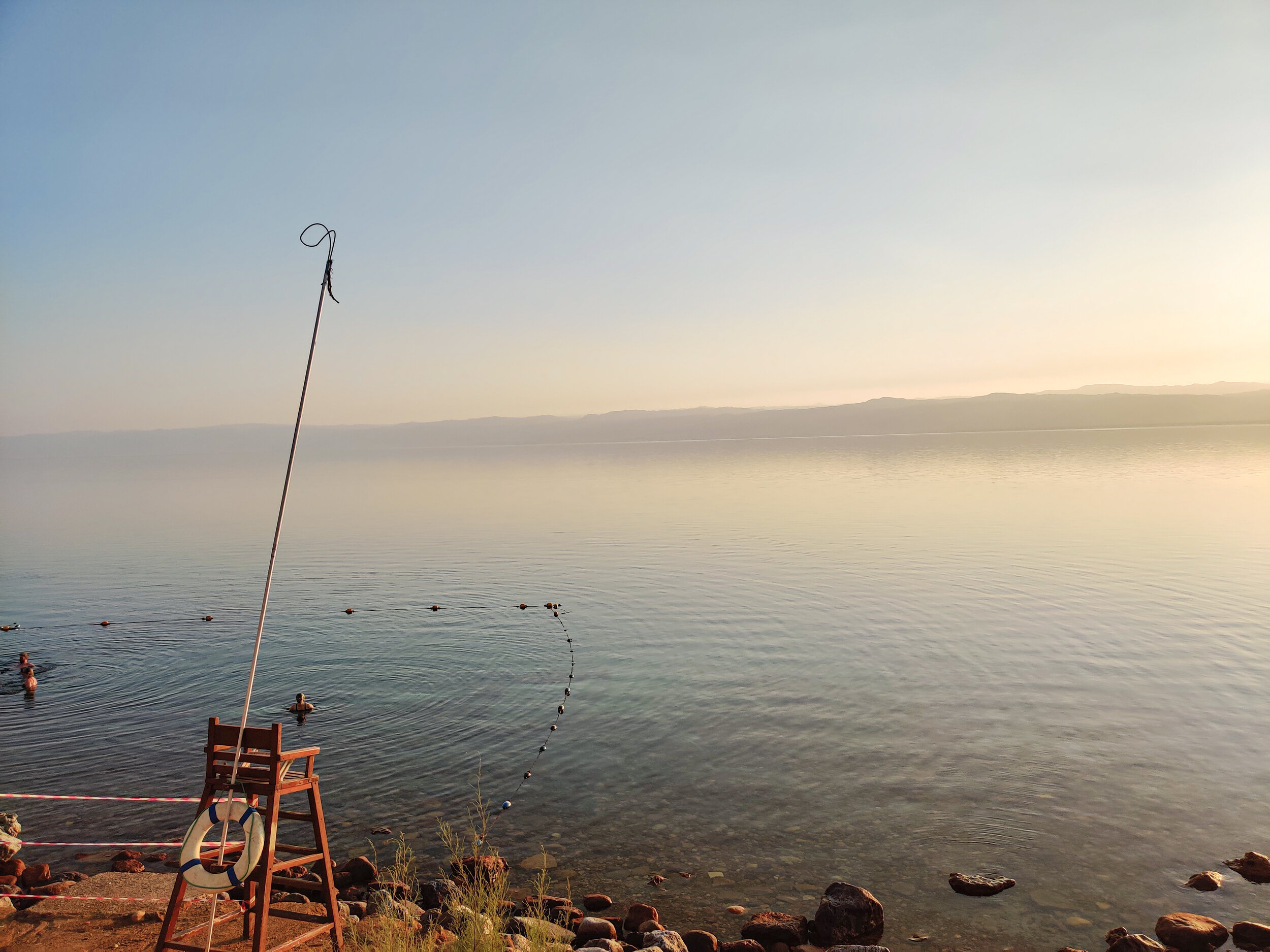
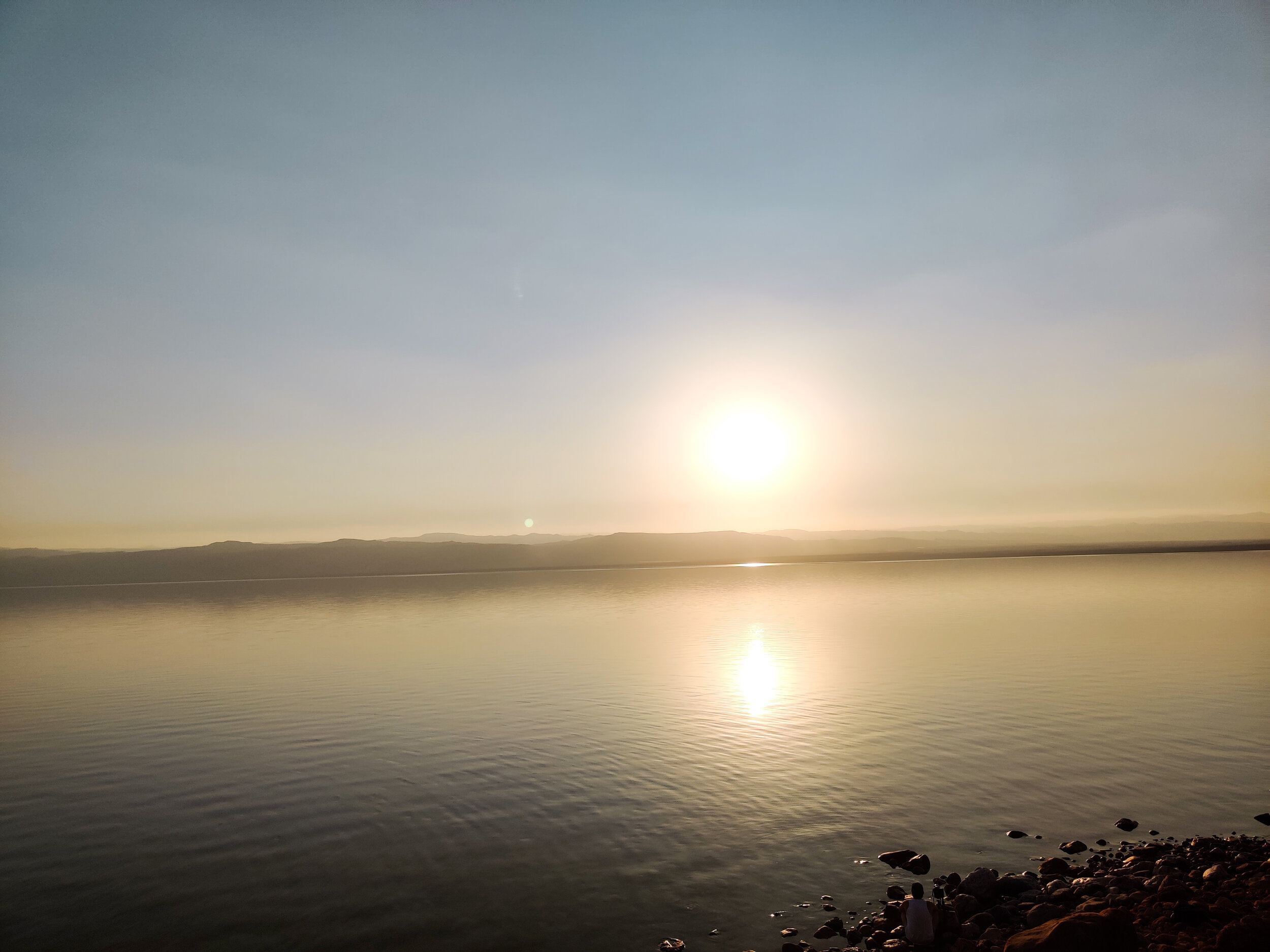
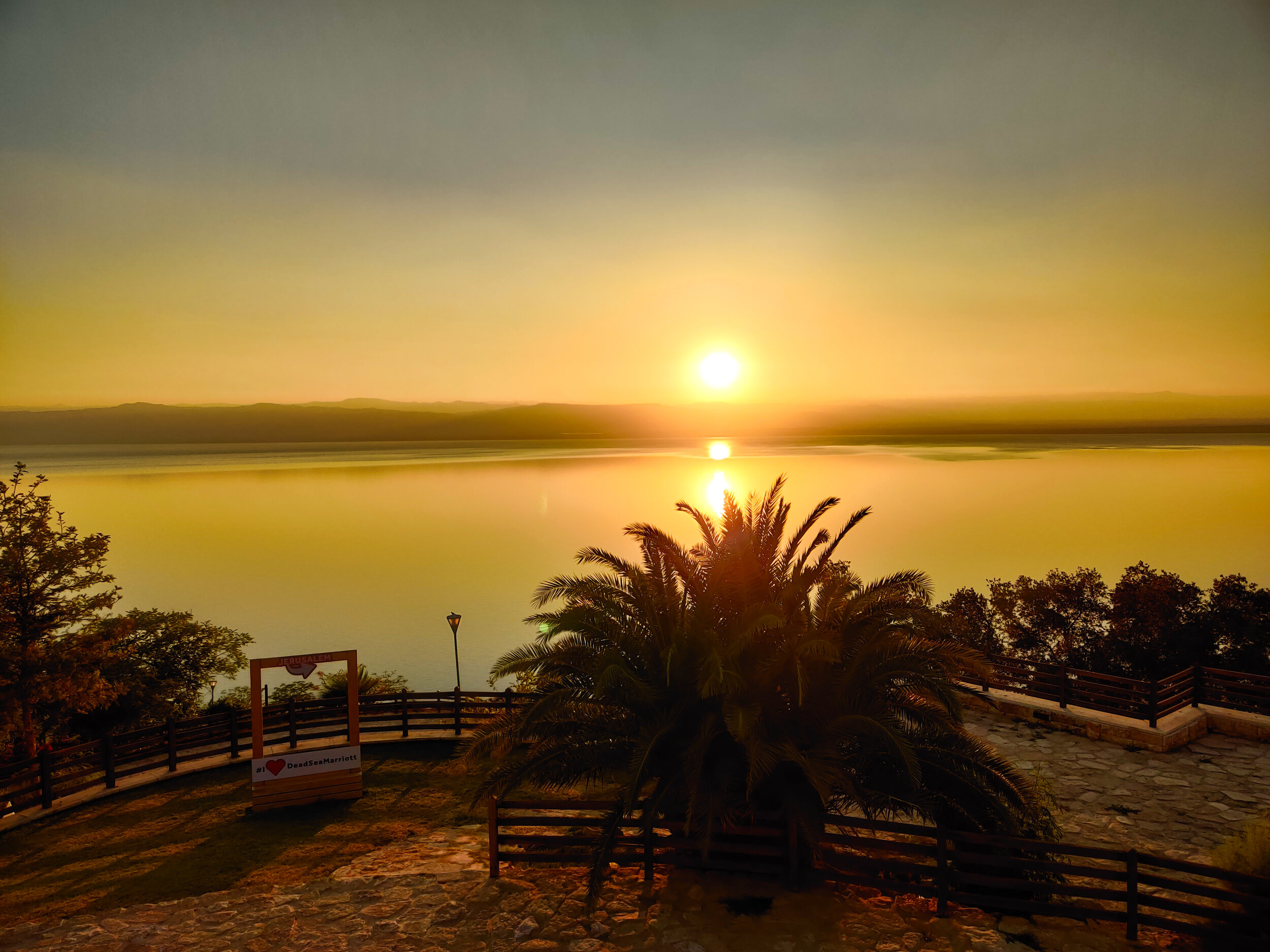

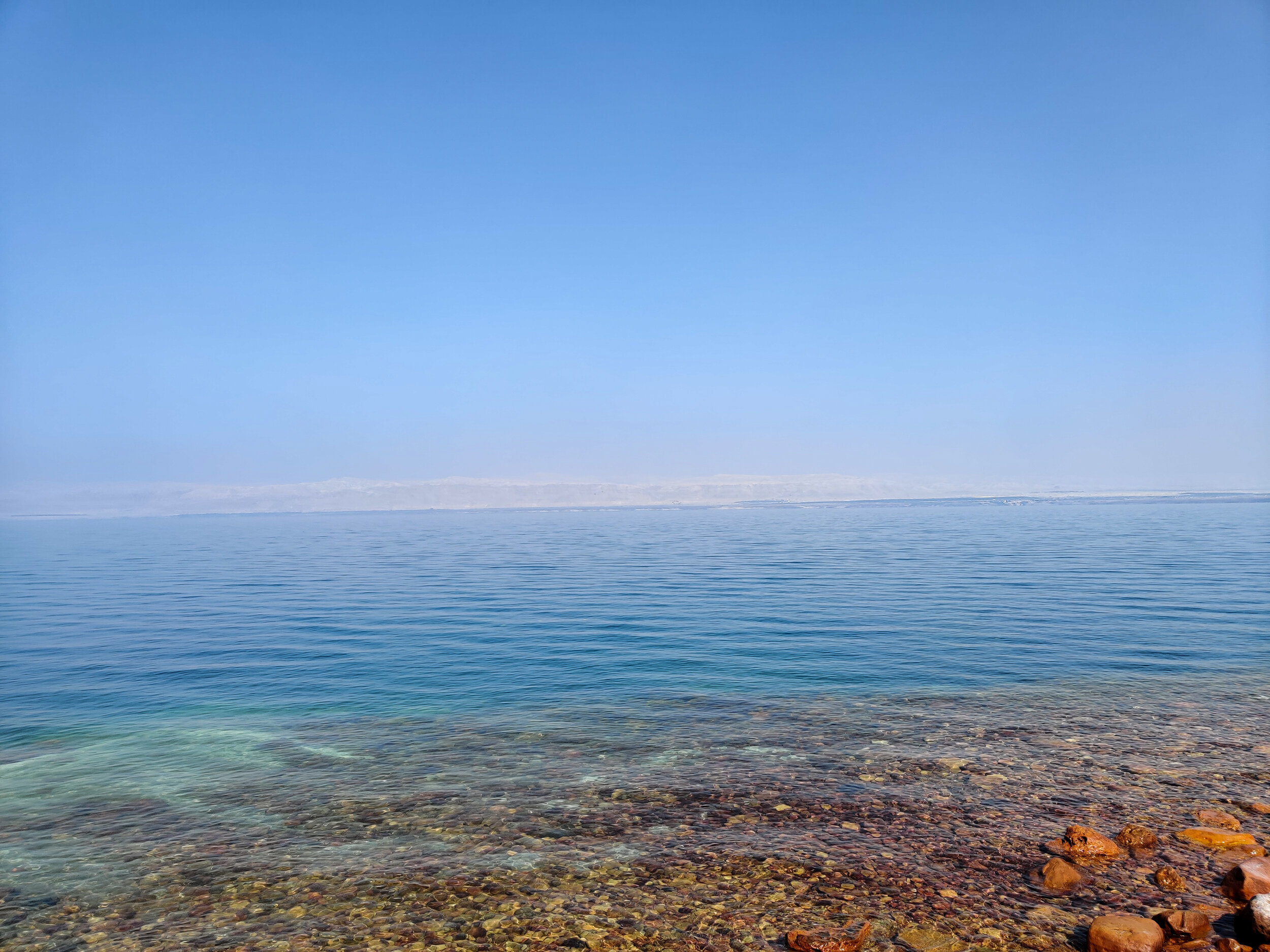
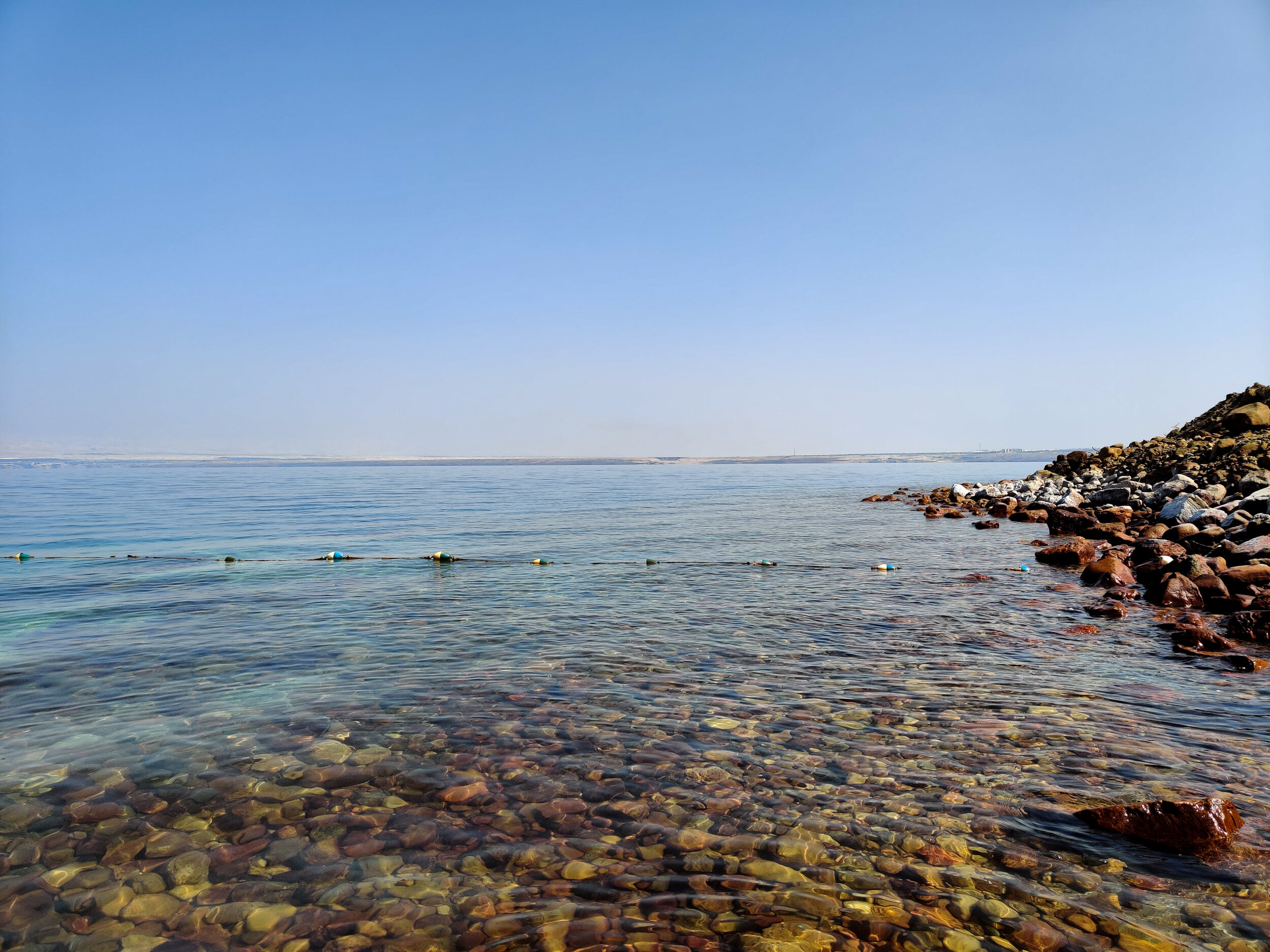

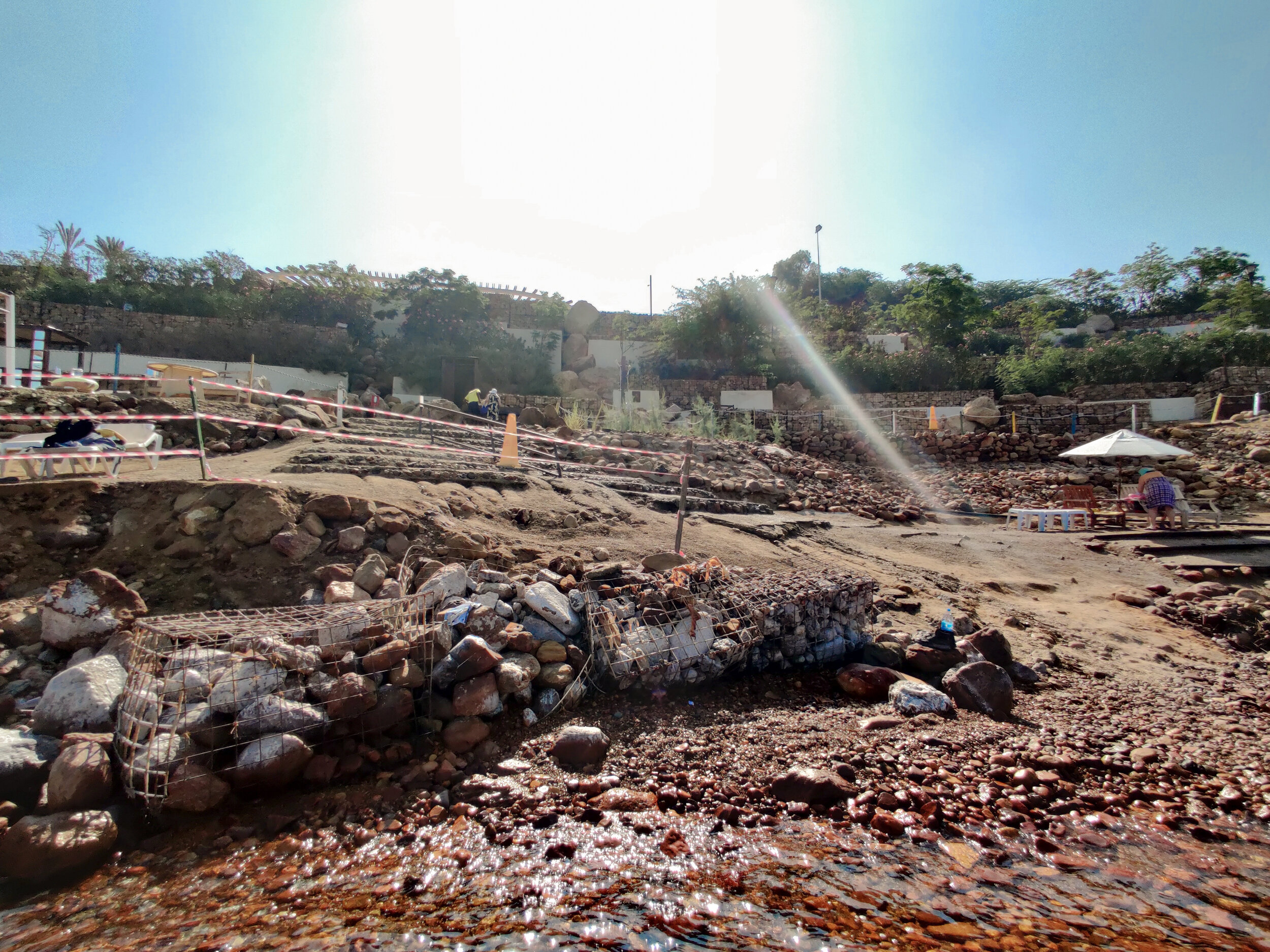
The view towards the Holy Land (upper left on the horizon) from Mount Nebo, Jordan. Deets On Eats.
The view towards the Holy Land (upper left on the horizon) from Mount Nebo, Jordan. Deets On Eats.
2
Mount Nebo
BASICS:
A holy site for all three Abrahamic churches (Judaism, Christianity and Islam), this is believed to be where God showed the prophet Moses the Promised Land. Many believe this is also the burial place of Moses.
On a 2,630-foot-high peak, one can see close to the same expansive view of Jerusalem, Jericho, and the Dead Sea that Moses saw. On days with higher visibility, one can view Bethlehem, Herodium, Jerusalem and Jericho.
Restoration, preservation and daily church services are still maintained in the Memorial Church by Franciscan Archaeological Institute. Every Christmas, mass is held in English and Arabic.
Mount Nebo gained additional special significance in 2000 after Pope John Paul II’s pilgrimage.
VISITING:
Located North West of Madaba and close to the Dead Sea, it’s 16 miles (a 49 minute drive) from Amman. The most reliable way to get to Mount Nebo is by tour, taxi or rented car. For taxi rides, prices range from 1 JOD shared to 10 JOD for a private round trip.
A thorough tour of the peak (Syagha) takes only a few hours.
HIGHLIGHTS AT SYAGHA:
There’s a small museum a short walk from the entrance of the complex. I suggest visiting this place to learn about the sites you are visiting.
Atop Syagha, there stood an ancient (2 million year old) basilica first erected by Monks. The church was rebuilt into the Moses Memorial Church with sturdy architecture and modern stained glass windows. Inside you’ll find stunningly preserved remnants of the original basilica. Visitors pay a small entrance fee but I guarantee you will be shook by the carved columns bordering the pews and the glass-lined walkways raised over preserved Byzantine mosaics (some 1,400 years old). During a 1930s excavation, these mosaics and a baptistry were uncovered. Also, six tombs were found but cannot be viewed.
At the lookout point in front of the Memorial Church is the Brazen Serpent Monument / Staff of Moses Sculpture. It’s a towering metal artwork by Italian artist Giovanni Fantoni depicting Moses’ healing serpent staff mentioned in Numbers 21. A serpent appears to wrap around a cross - the symbol of Jesus’ crucifixion. At the base of this sculpture is the inscription: “As Moses lifted up the serpent in the wilderness, so must the Son of Man be lifted up.”
TIPS:
There’s good, clean bathrooms near the entrance.
Bring binoculars if you want to see The Holy Land more clearly. It’s a little hard to see even on a clear day due to haze.
Bring cash to enter the church.
Take in the smell and sight of the countless olive trees including the one Pope John Paul II planted on his visit.
The souvenir shop is cash, only.
Below are some pictures we took at Syagha of all the points of interest mentioned above.
The Spring of John the Baptist. Bethany Beyond the Jordan, Jordan. Deets on Eats.
3
The Jordan River
Our pilgrimage to the Jordan River was one of my most treasured memories of all time. Read about my personal experience, here.
BASICS:
This river meanders 223 miles (a true distance of 124 miles). It makes its way down from the North (the Lebanese Mount Hebron, between Syria and Lebanon) to the South (through Northern Israel and the Sea of Galilee). Jordan lies to the East and Israel to the West of the Jordan River.
The river is fed by rain.
Its name is believed to have come from the Semitic (Hebrew) word “yardon,” which means “descended/flow down”.
It’s sometimes called Al-Sharīʿah (“Watering Place”) by Arabs.
HISTORY:
According to the Christian bible, this river’s East bank (Jordan side) is where John the Baptist baptized Jesus (Matthew 3; Mark 1; Luke 3; John 1). The Jordan River is also where the Israelites (Joshua 3) and the prophet Elijah (2 Kings 2) each crossed on dry ground. Here, too is where Naaman was healed of leprosy (2 Kings 5).
In 1965, conflicts over the Jordan River were a contributing factor to the Six-Day War. Since 1967, (after Israeli forces took the West Bank), the Jordan River has become a cease-fire line.
TODAY:
In 2015, UNESCO dubbed Bethany Beyond the Jordan a World Heritage site.
This was a Jordanian military zone until the 1994 treaty with Israel. Today, while it is still inhabited by Jordanian military, it is accessible to tourists, visitors and pilgrims.
While almost 2 miles of water just south of the Sea of Galilee is kept clean for baptisms, the rest of the Jordan river has played victim to sewage and brackish water.
Jordan river’s water is still used in christening of heirs and princes in some Christian royal houses.
THE JESUS BAPTISM SITE
BASICS ON AL-MAGHTAS/BETHANY BEYOND THE JORDAN :
Al-Maghtas (Arabic for “immersion”) is seen as the baptism spot of Jesus. Its proximity to the area seen as the Mount of Temptation and to the desert where John the Baptist worked makes this the site most embraced by Christian churches as where Jesus was baptized. The end of a brook (called Wadi Al-Kharrar) is where many believe John the Baptist operated.
Bethany Beyond the Jordan’s website sources documents of acknowledgement from: The Romanian Patriarchate, Daniel Ciobotea; Patriarch of Antioch for the Maronites, Patriarch Mar Nasrallah Boutros Sfeir; Roman Catholic Church, Roman Catholic Patriarch of Jerusalem; Greek Orthodox Patriarch of Jerusalem – Erinious I; Armenian Patriarch; Syrian Orthodox Patriarch of Antioch and all the East, His Holiness the Coptic Pope Shenouda III; Greek Orthodox Patriarch of Jerusalem – Theofilos III; Patriarch of Ethiopia, Archbishop of Axum; Patriarch of Moscow and all Russia – Alexy II; His Grace the Archbishop of Canterbury Dr. Rowan Williams; Lutheran recognition of the Baptism Site; Baptist World Alliance President David Coffey and Pastor Rick Warren, Pastor of Saddleback Church (author of The Purpose Driven Life).
HIGHLIGHTS:
There’s no direct archaeological evidence that Jesus was baptized here but scholars have linked ancient writings about John The Baptist to some of the 21 archaeological/ancient sites here (ie: hermitages, tombs, caves, chapels, basilicas and monasteries).
Wadi Al-Kharrar: This is the stream that runs from the Jordan River to what is seen as John the Baptist’s spring. There’s springs and ponds and channels everywhere if you look - evidence of pilgrims seeking baptism.
Byzantine Churches and Spring of John the Baptist: Records written by Theodosius (530 AD) point to a Byzantine church built by Emperor Anastasius (491-518 AD) after he was told by locals that Jesus was baptized there. Remains at the end of the wadi in this area match Theodosius’ writings.
Marble steps - believed to be the ones written by Antoninus Martyr of Piacenza (570 AD) - descend from the Byzantine church into the Spring of John the Baptist.
Arculfus of France (670 AD) also wrote about what was seen as the baptism site of Jesus. He described a small square church built by locals on the spot where Jesus removed his garments before baptism. Remains of what is now called the Mantle Chapel match these descriptions. The area formed at this holy spot create the world’s only river-fed cruciform baptismal pool.
Past the Mantle Church are the Basilica (Church of the Trinity) and the Lower Basilica. Both churches boast intact mosaic floors.
Church of John the Baptist: Between the Spring of John the Baptist and the Jordan River, you find this 7th-century church. There’s a newer pool neighboring it but inside, the original altar, mosaic floor and arches remain intact.
TIPS:
The months of November through February offer the best temperature to trudge through the Al-Maghtas sands.
If you visit in the summer (like we did), bring lots of water and go during the morning if you can. The air is thick because of it’s low elevation.
The Visitors’ Centre is actually a drive from the baptism spot so you take a minibus to the site.
Cover arms and legs and use soft voices and good manners at the Baptism site.
Near the baptism site is Tell El-Kharrar (Saphsaphas), where scholars believe the prophet Elijah was taken by a fiery chariot to Heaven. There, you’ll find the remains of a monastery and just West are caves where John the Baptist is believed to have lived.
You cannot be baptized at the actual plot seen as Jesus’ baptism spot… partly because it’s been overrun by countless pilgrims for generations and partly because there’s simply not enough water for full immersion. However, you can arrange to be baptized beside the Greek Orthodox church, near the Catholic church or with a day’s notice at the children’s Baptism Fountains or adult’s Baptism Pool. Rites are performed by local Greek Orthodox priests if you do not have your preferred priest or minister with you.
To be baptized in the Jordan River, the safest route to take is through a tour company. Yardenit (just south of the Sea of Galilee) is another popular place to be baptized on the Jordan River.
Below are some pictures we took at Bethany Beyond the Jordan of points of interest mentioned above.
WHY VISIT THESE WATERS, NOW?:
THE JORDAN RIVER RECEDES
Around 70%-90% of the Jordan River’s water goes to human use. Until 2000-2010, the Jordan River was the largest water resource for Israel with much of it going to agricultural use.
Today, Jordan also presses upon the Jordan River. Jordan hosts floods of refugees. One million gallons of water are brought to Jordan’s second largest refugee camp (Za'atari) every day. As refugees steal water from aquifiers, neighboring farms and businesses must now draw more water from the Jordan River. Additionally, Amman’s population has rocketed to 4 million people while Israel and Palestine continue their already steady growth.
As the waters of the Jordan recede and the number of thirsty mouths increases, Israel’s Union for Environmental Defense says desalination plants are now the source of 70% of Israel’s drinking water. Friends of the Earth Middle East (FoEME - a unique organization of Jordanian, Palestinian, and Israeli environmentalists) named the Jordan River as one of the world's 100 most endangered ecological sites in 2007. According to 2010 studies, the lower Jordan River is now at only 2% of its historic flow (losing three fee, annually).
THE DEAD SEA IS DISAPPEARING
As of 2018, findings have shown that the Dead Sea is receding at a rate of 4 feet a year. Additionally, over 1,000 sinkholes - some 600 feet deep - have appeared in the Dead Sea.
Israeli scientists don’t think the Dead Sea will entirely disappear - they think it will eventually become a pond with the highest salinity on Earth. The Environmental Protection Ministry says the Dead Sea will “continue to shrink a meter a year until it reaches just two-thirds its current size.”
As water is not the only precious resource pulled from the Dead Sea, human demands on this area are high.
Potash is actually the most valuable thing extracted from the Dead Sea. It’s used in fertilizer and magnesium and exported as metal. The Jordanian Arab Potash (APC) has produced 2.0 million tons of potash annually since 1956 (along with sodium chloride and bromide). The Israeli Dead Sea Works also operates 18 miles of evaporation ponds which environmentalists believe are responsible for 25-30% of the annual recession of the Dead Sea. Together, the two companies are accountable for the loss of what equals to 40% of the Israel’s domestic water use. While Israeli residents are taxed for water use, the mining industry (at least until 2030) is not required by contract to pay to replenish the Dead Sea waters.
CAN THE WATERS BE SAVED?
Proposals for multiple canals and pipelines to benefit the Dead Sea and its tributary, the Jordan River have come and gone. Recently, the Red-to-Dead project was laid out to help fight these water recessions. The much anticipated project is a water exchange planning the channeling of Red Sea water into the Dead Sea. Jordan was slated to trade water from its future Red Sea coast desalinization plant to Israel for the same amount of water for Jordan’s refugee-swamped North.
However, progress is slowed by political unrest. President Trump’s Israeli US embassy plans have further soured sore relationships in the Arab world. This has unofficially suspended talks between Israel, Jordan and other concerned countries.
“Reversing the damage done [to the Dead Sea] will require the cooperation of nations who have failed to work together for the past century,” says National Geographic. “While government officials blame climate change and 15 years of record-breaking drought, environmentalists and scientists say the damage is mostly human-caused, largely from government negligence.”
These are the top 3 places my husband and I just had to visit in Madaba, Jordan! I hope that these facts and tips help you on your own visit!
…Now what about that JORDANIAN Food? HERE’s a POSt about the delicious food in jordan!
Sources
Brittanica
National Geographic
SeetheHolyLand.com
Wikipedia




